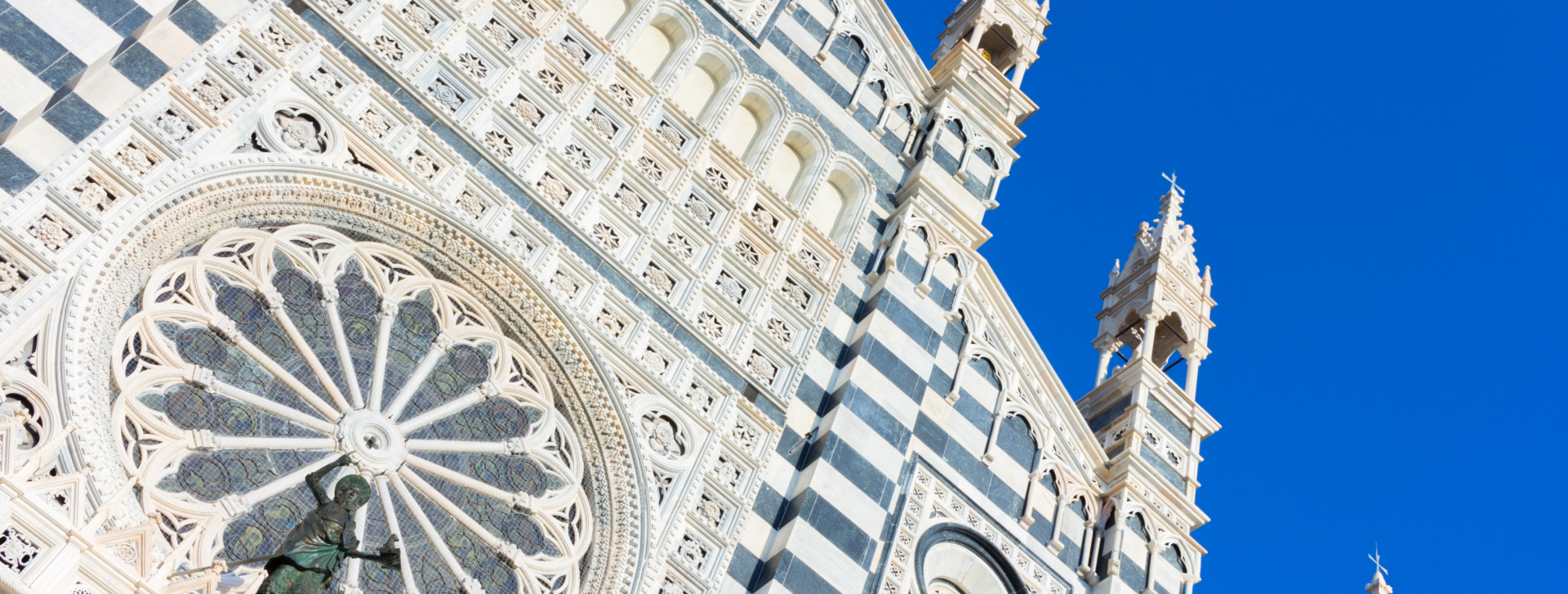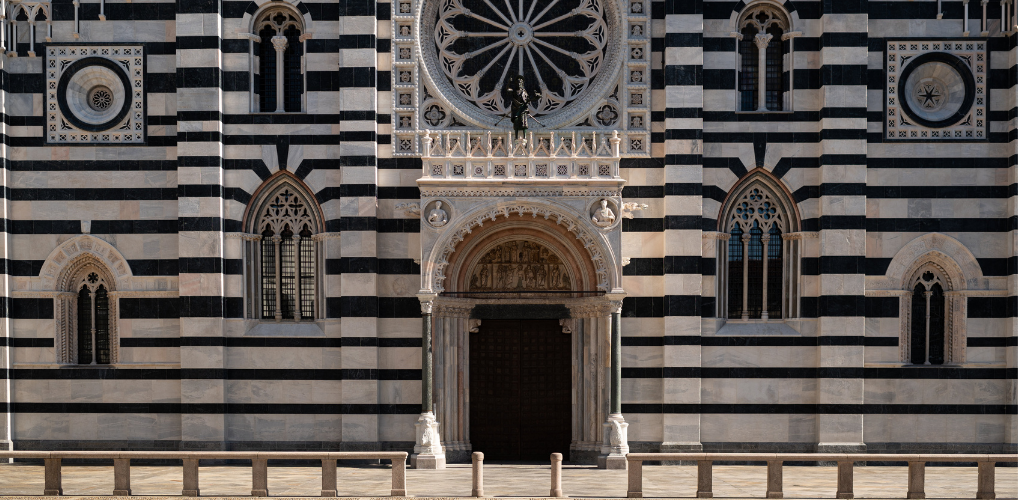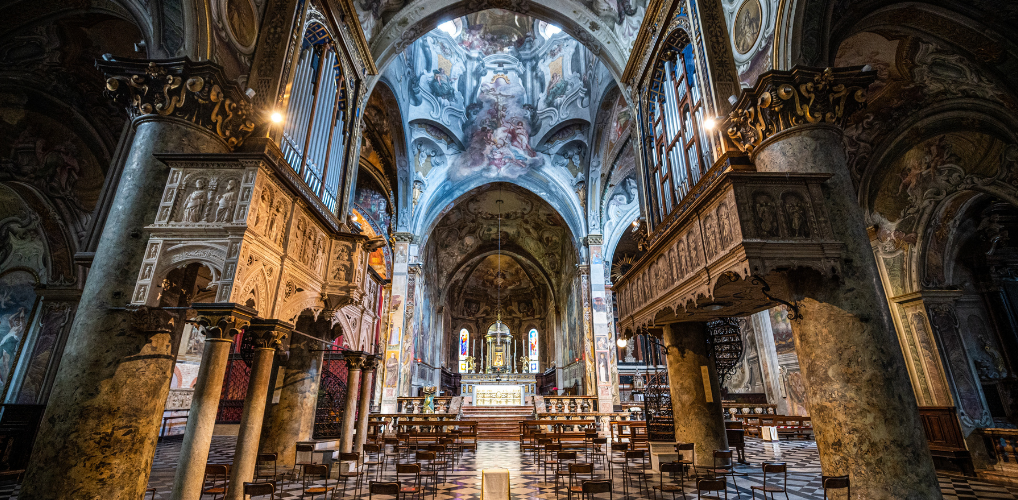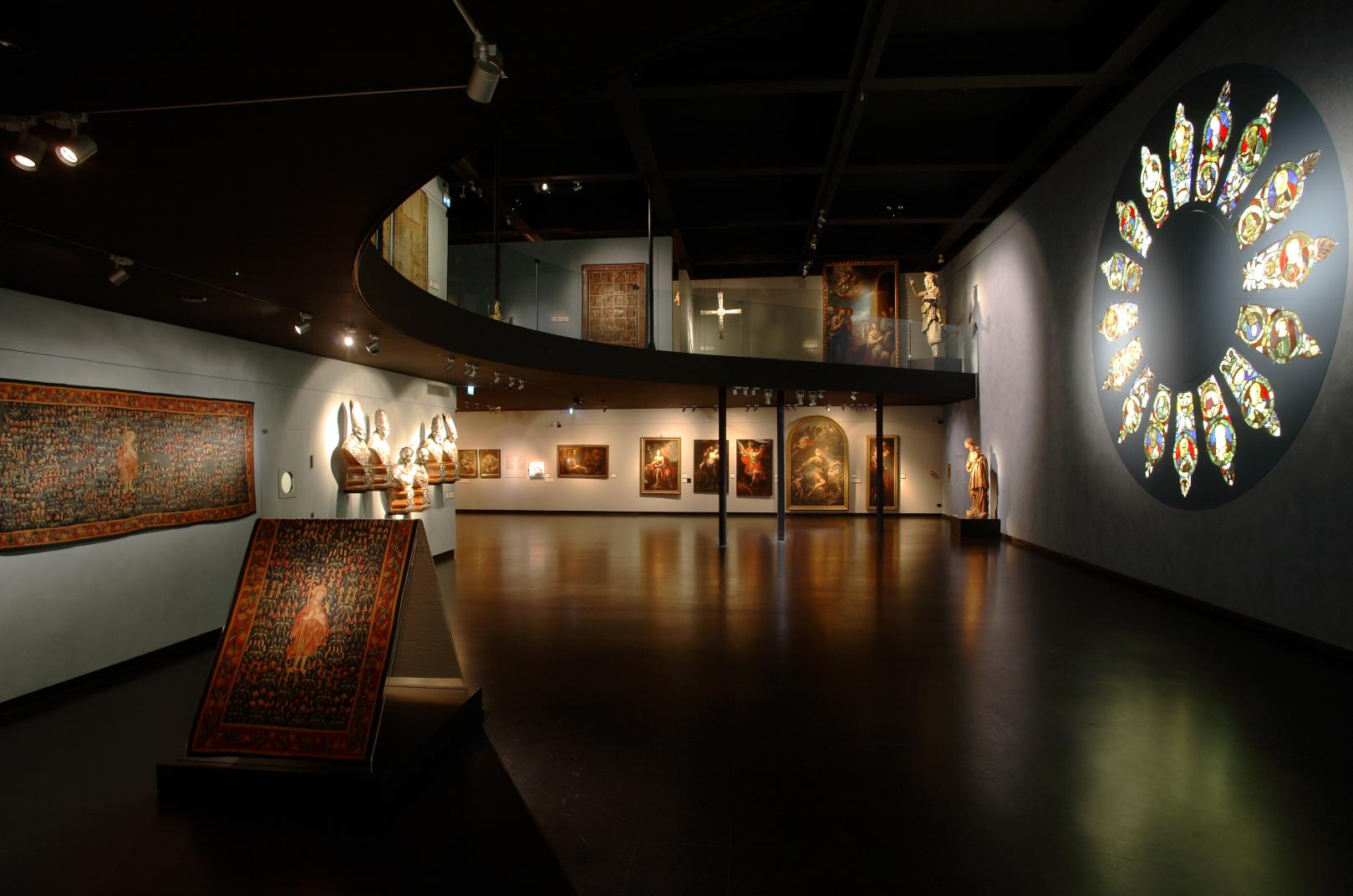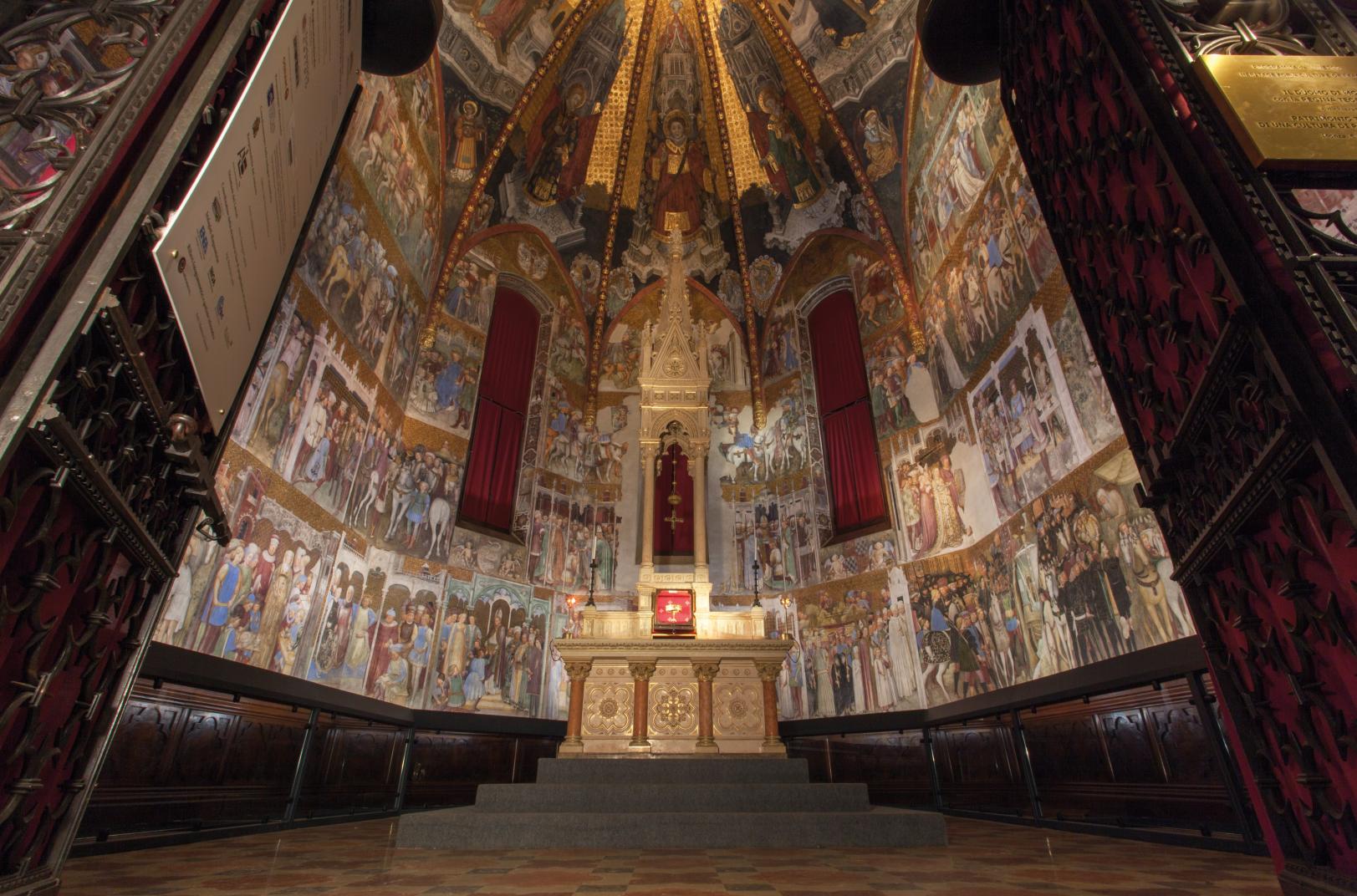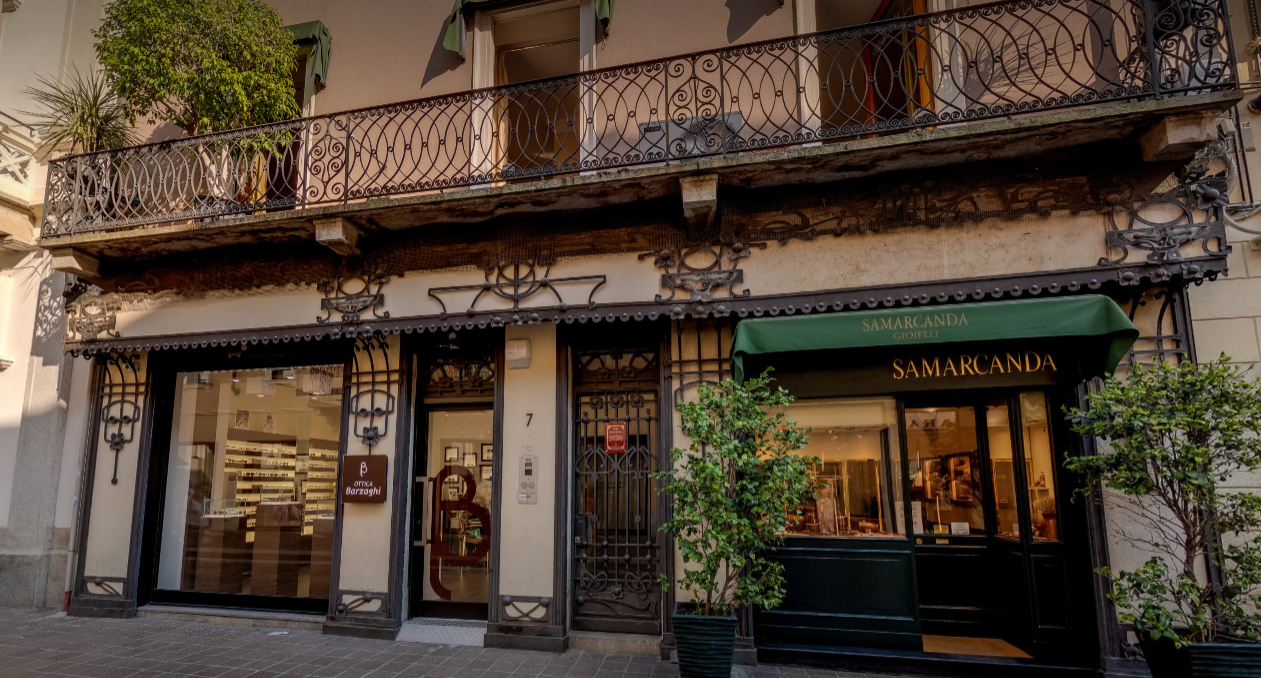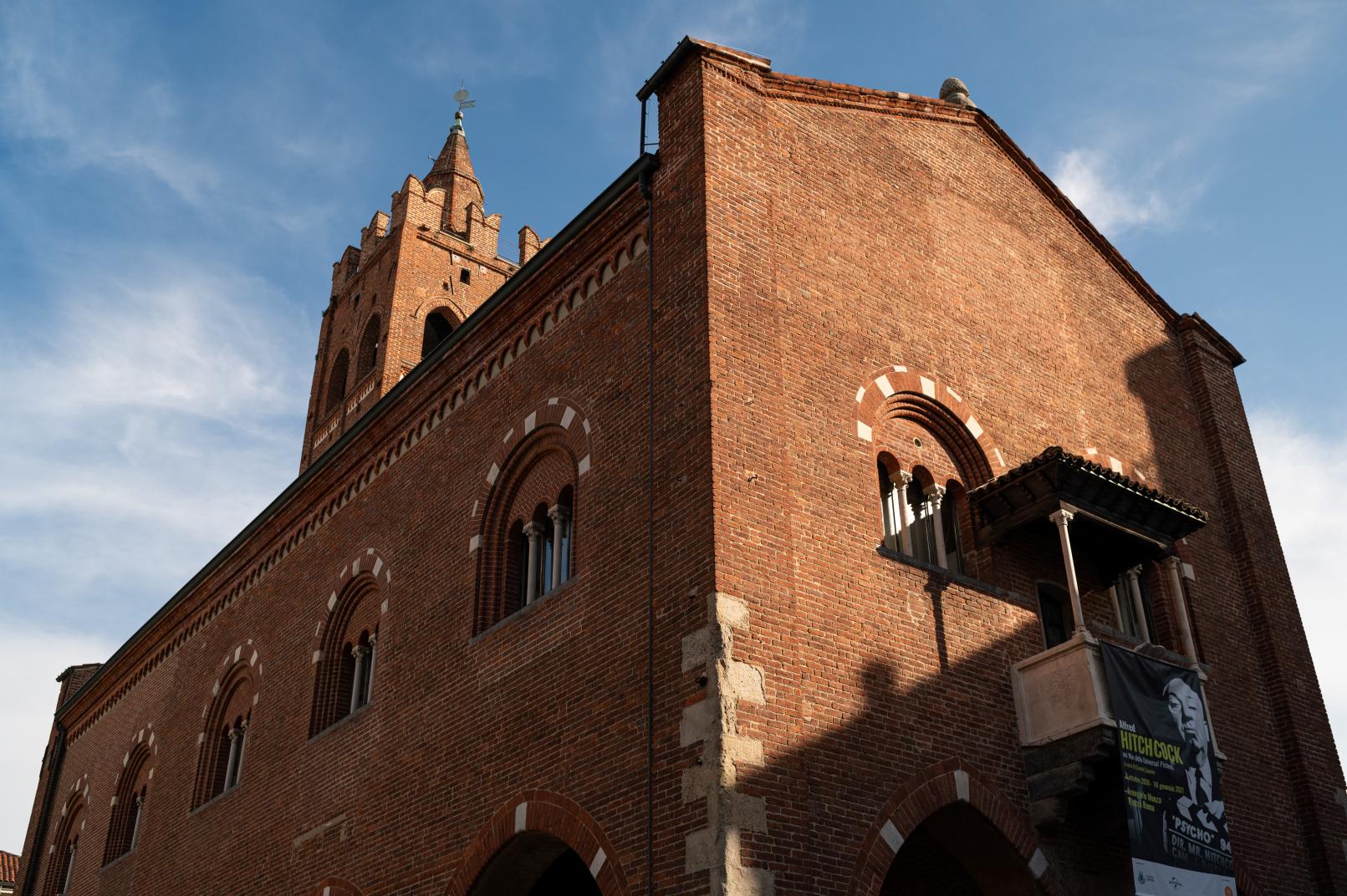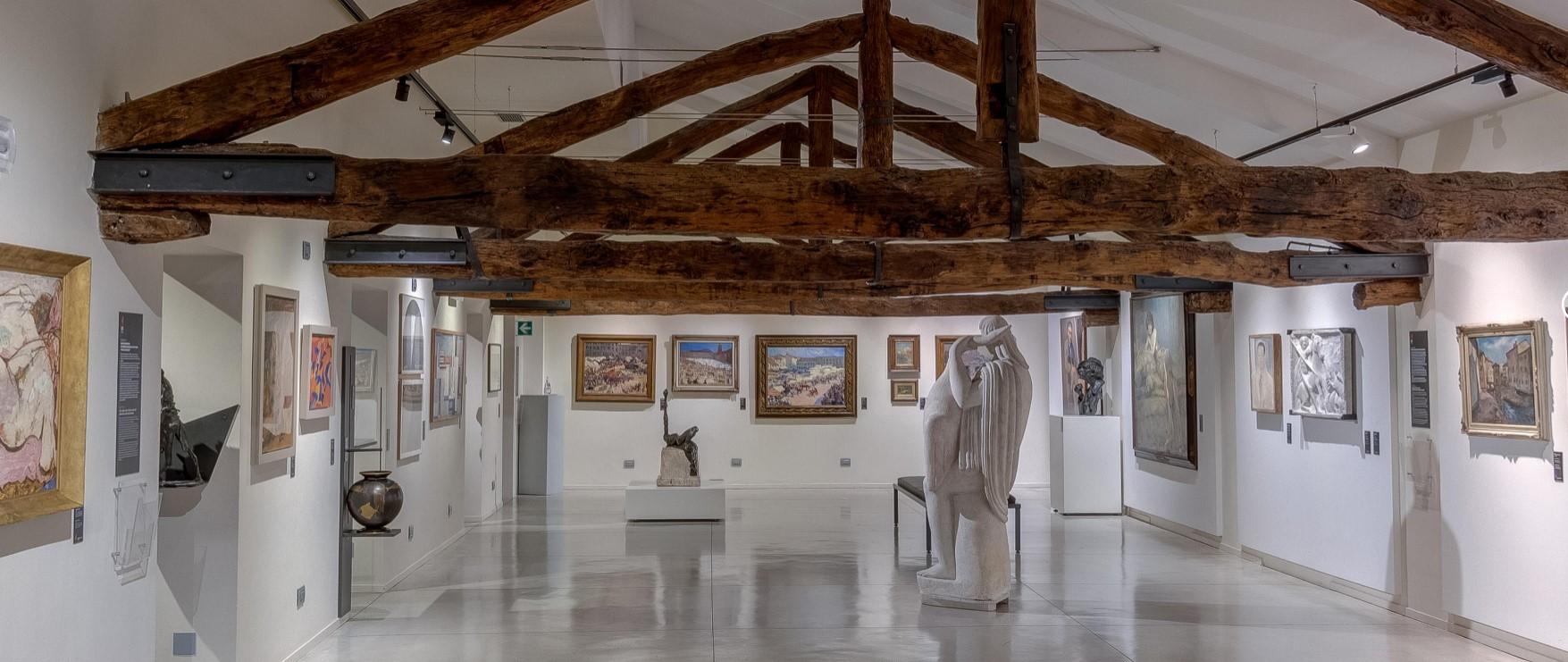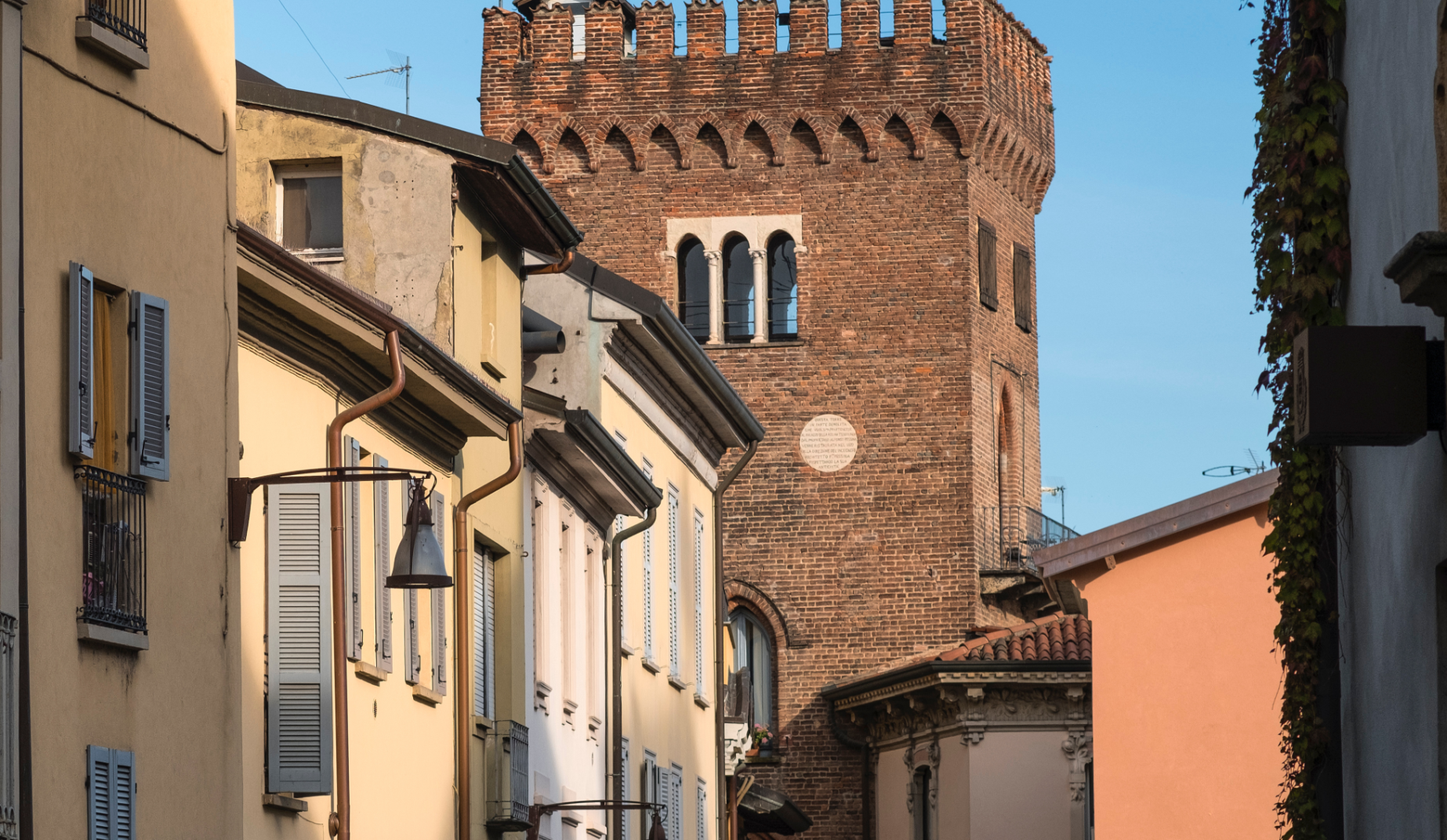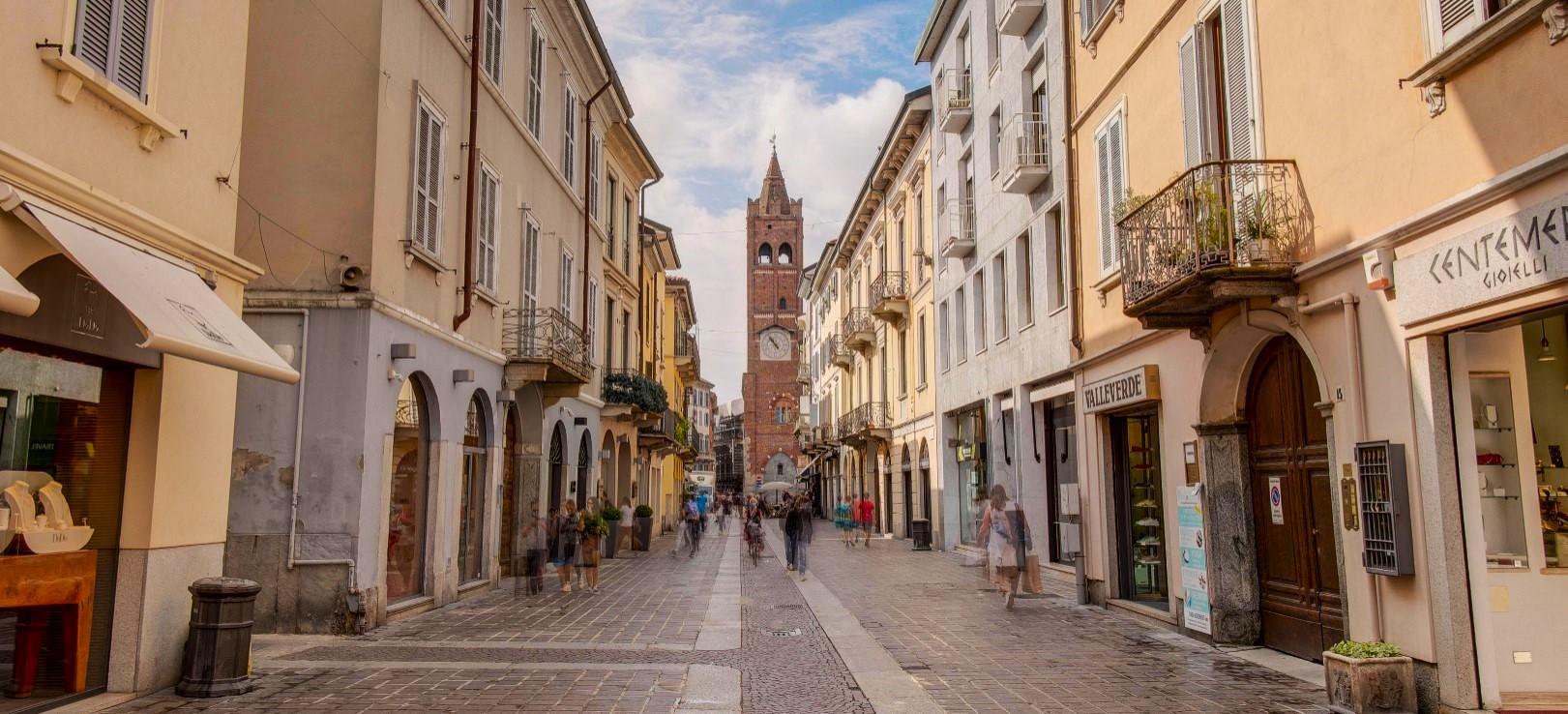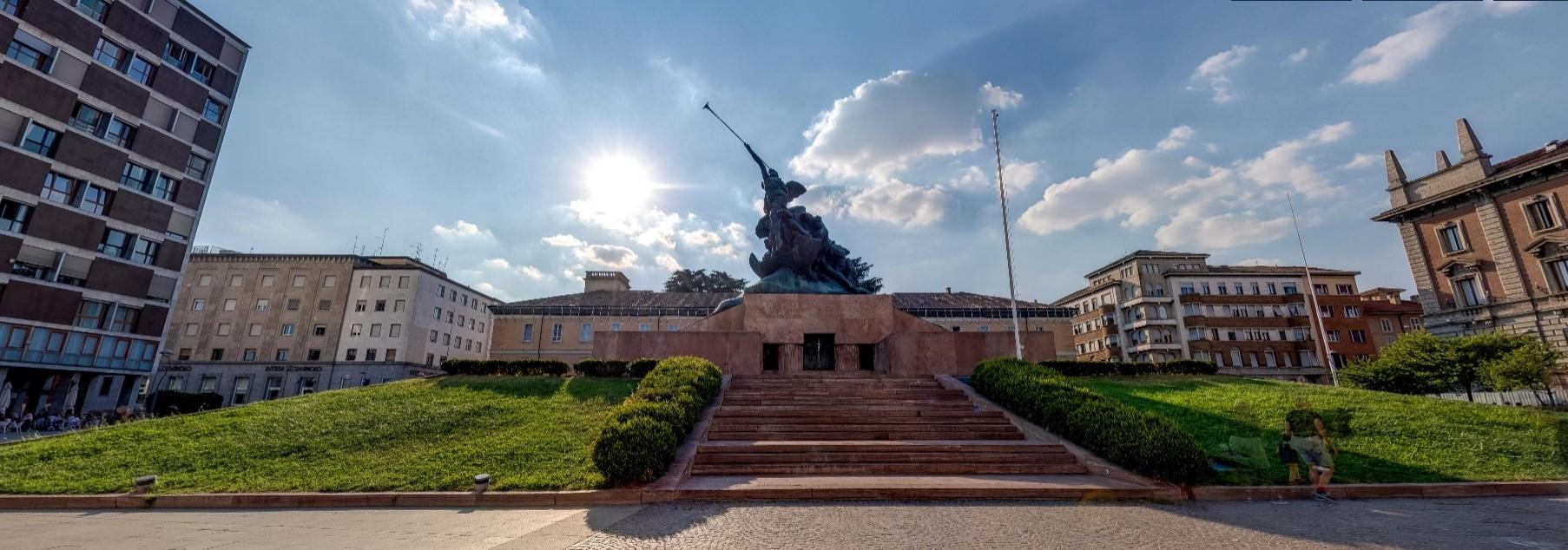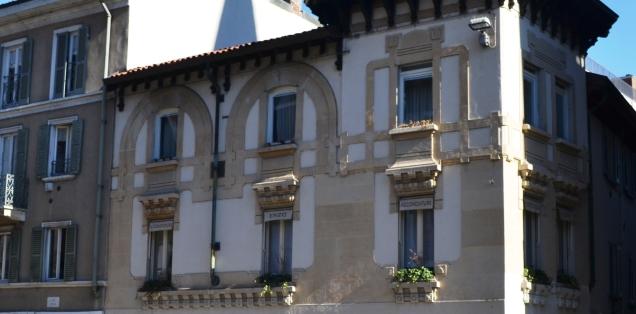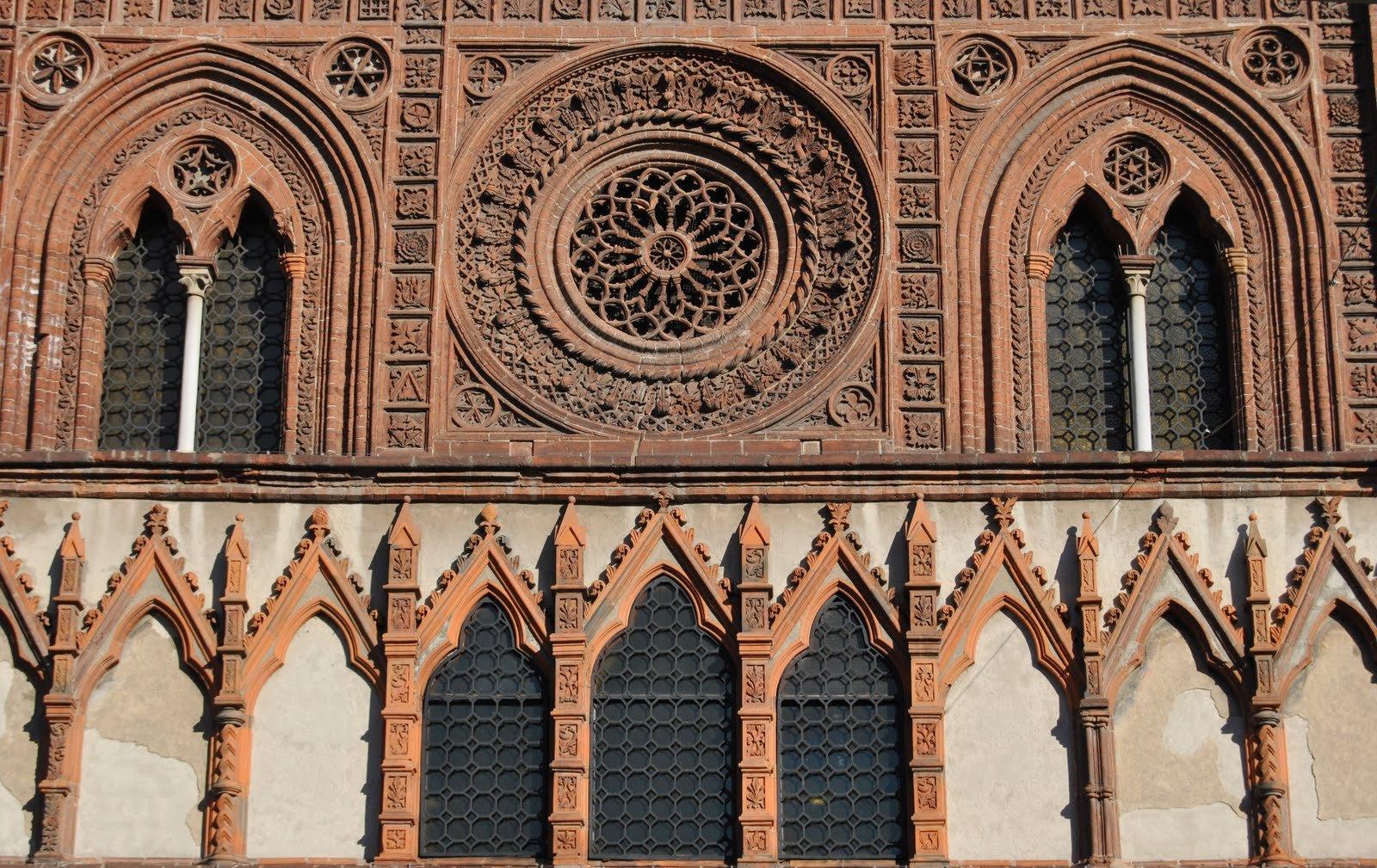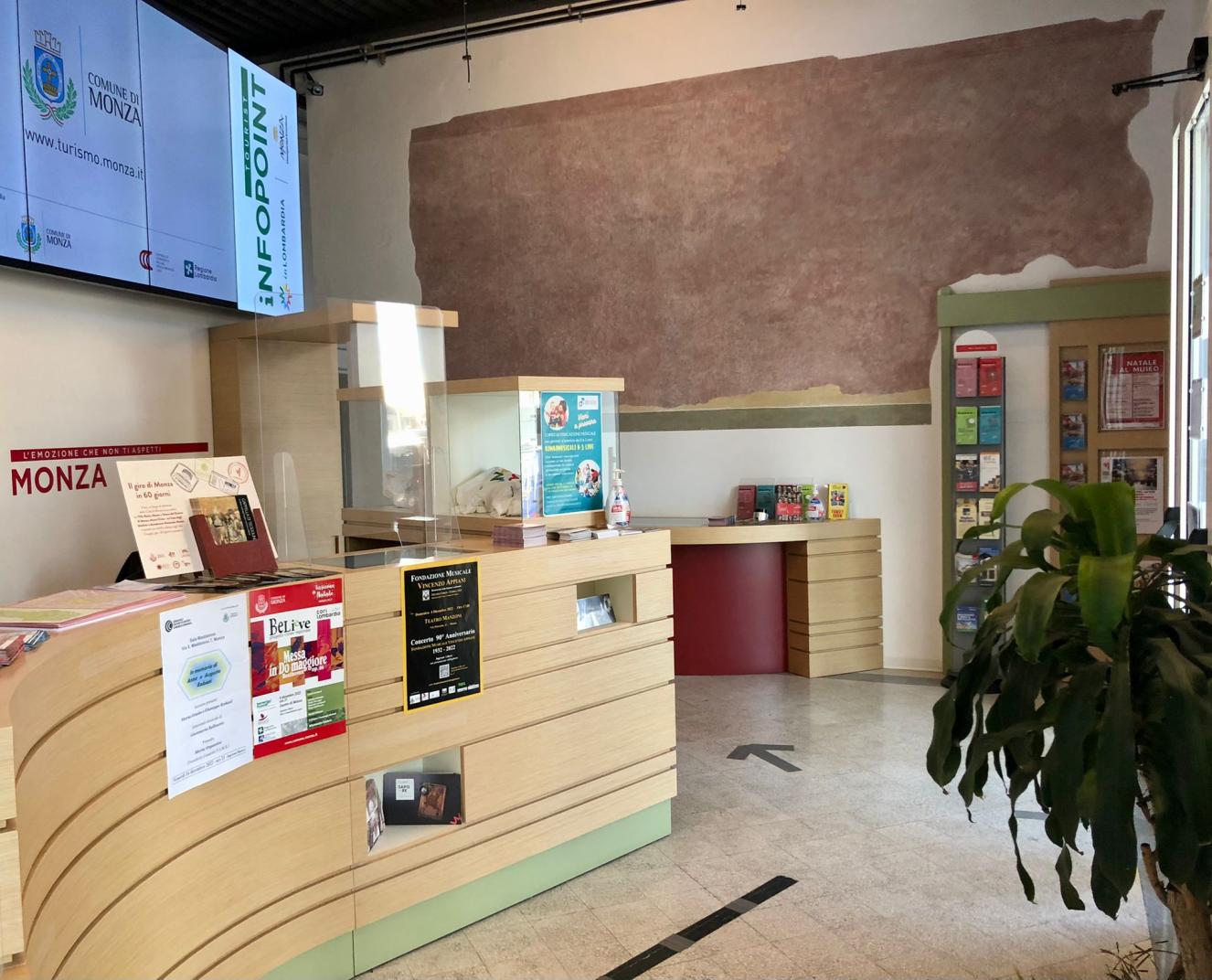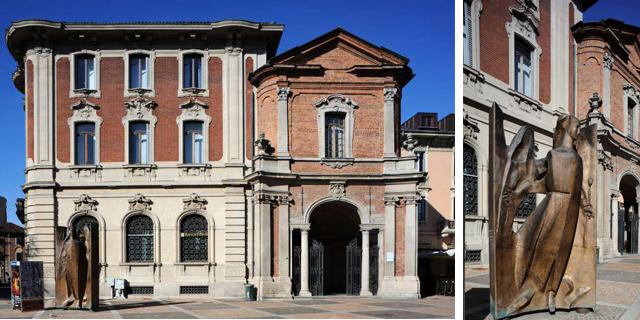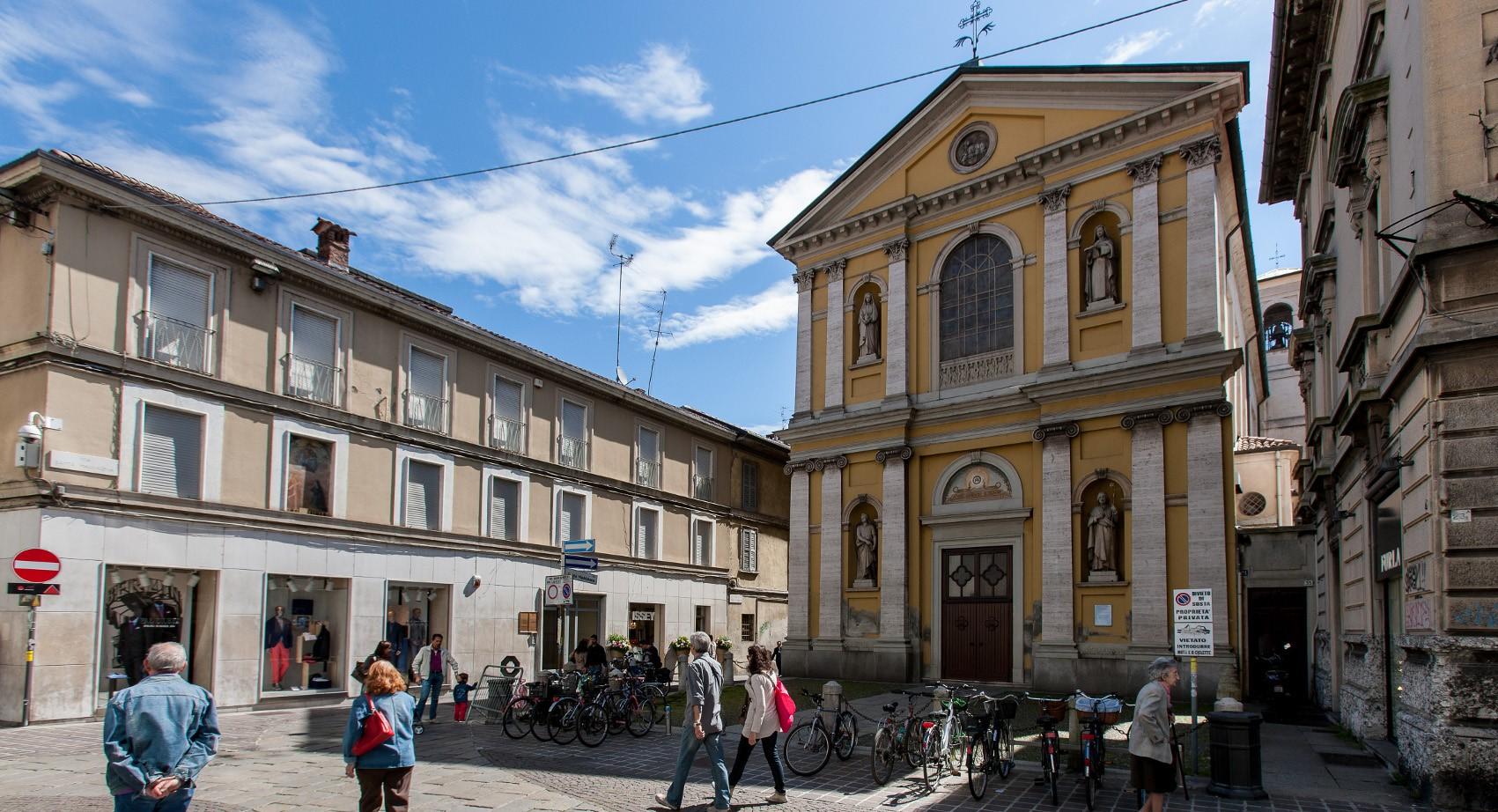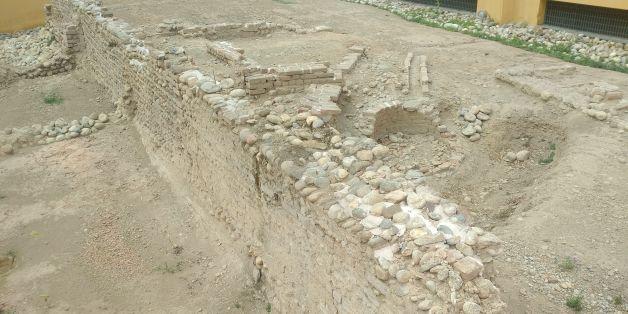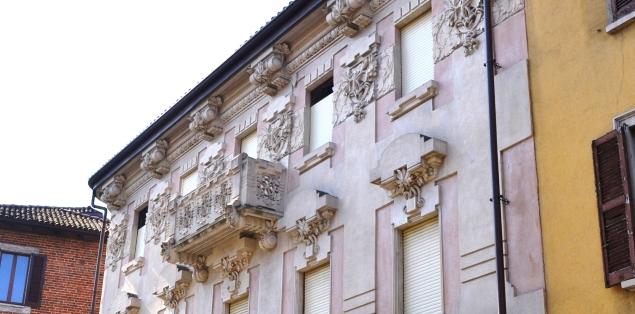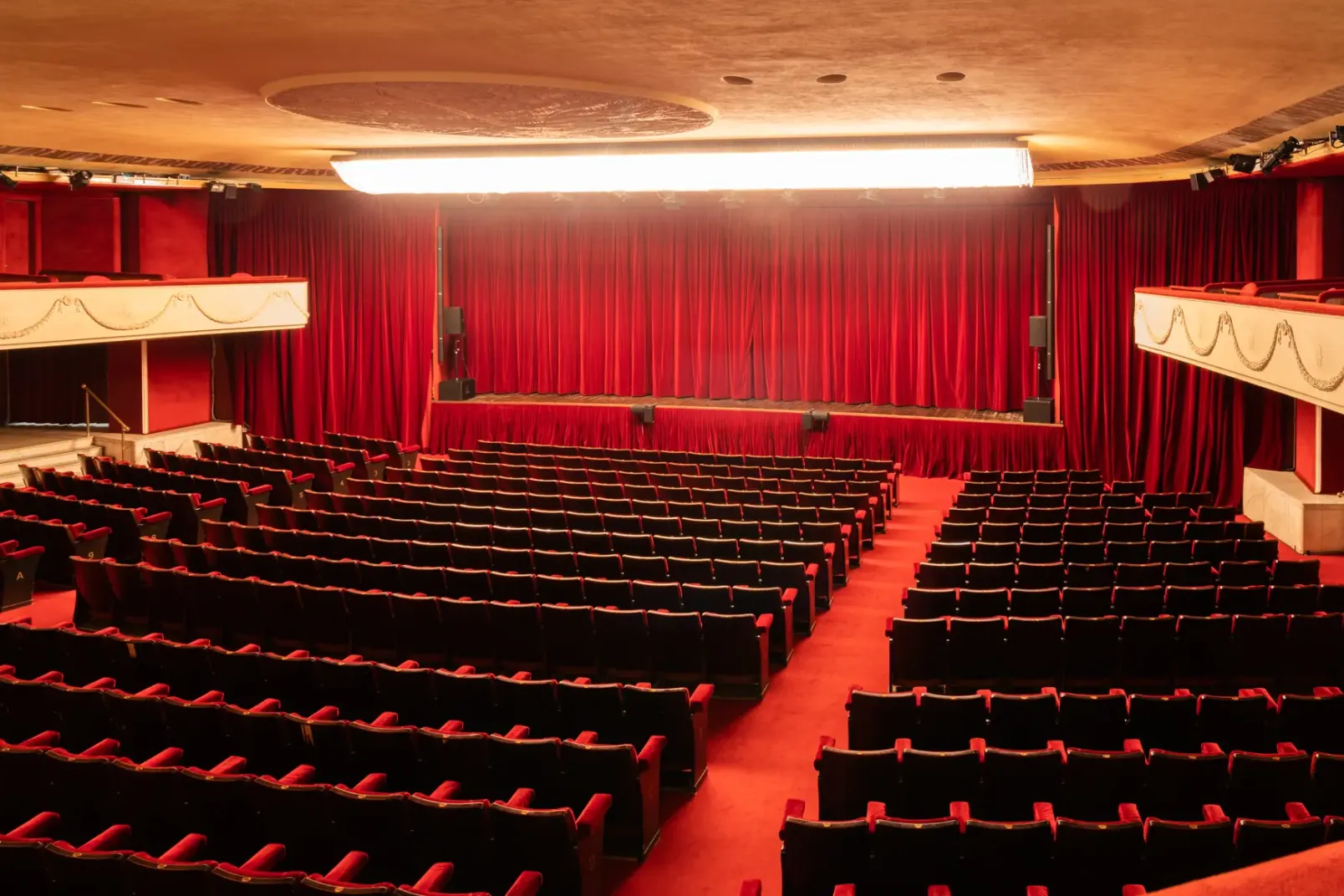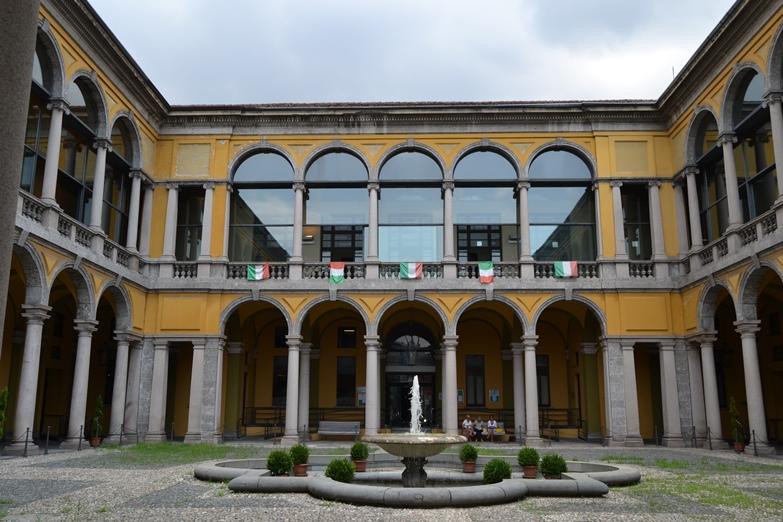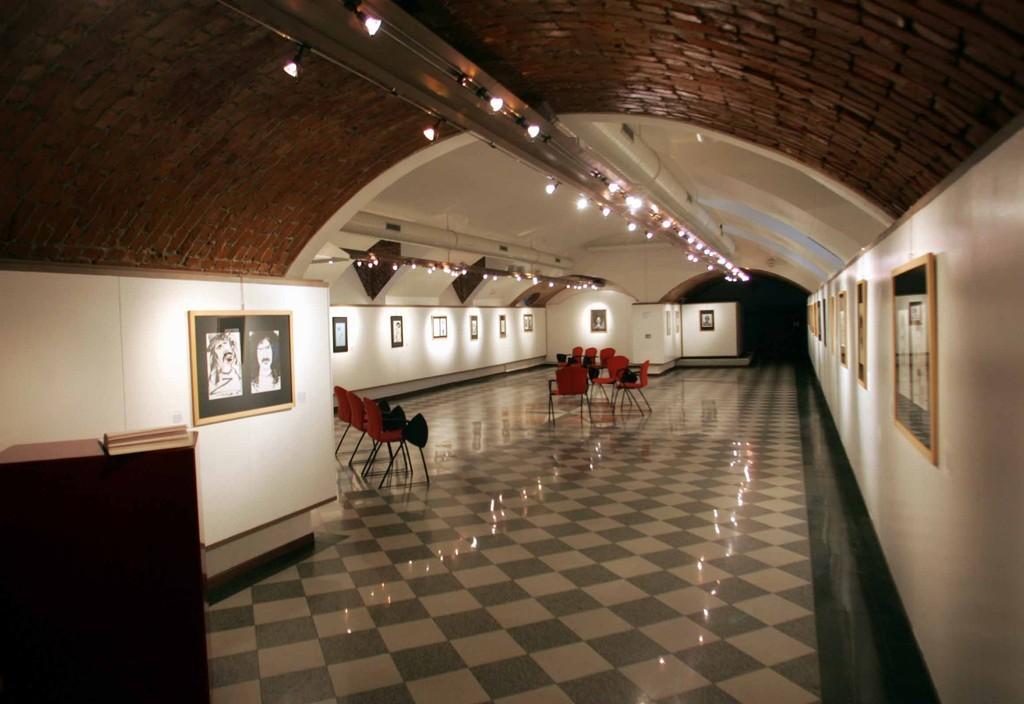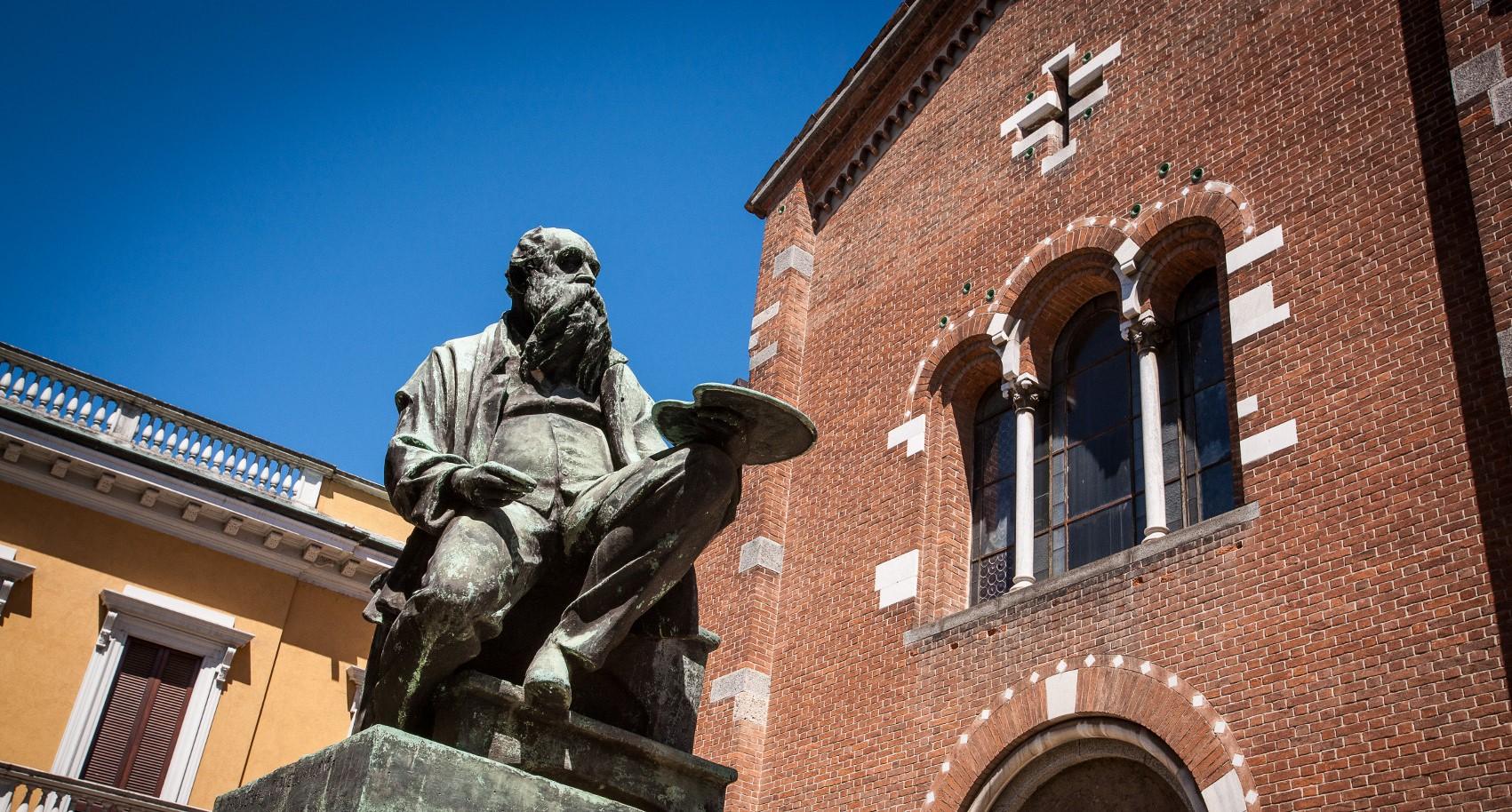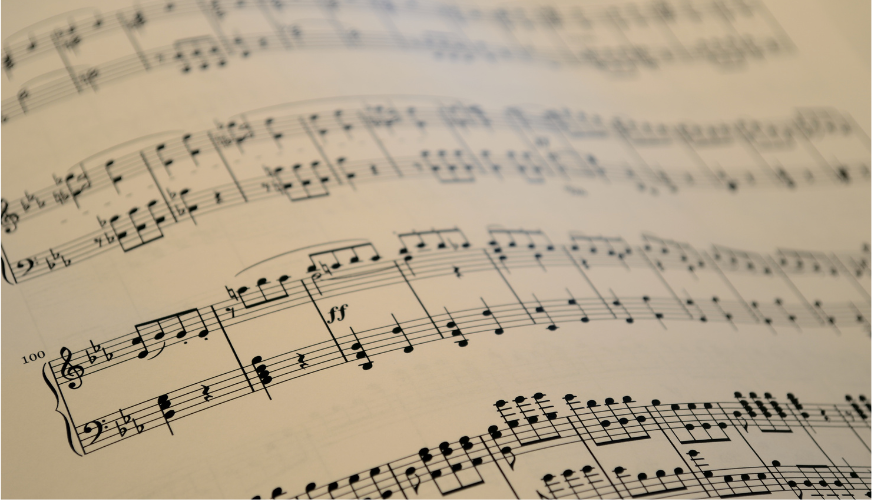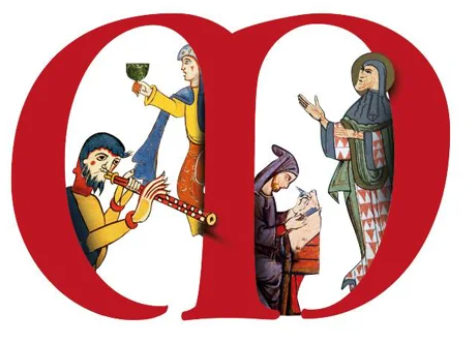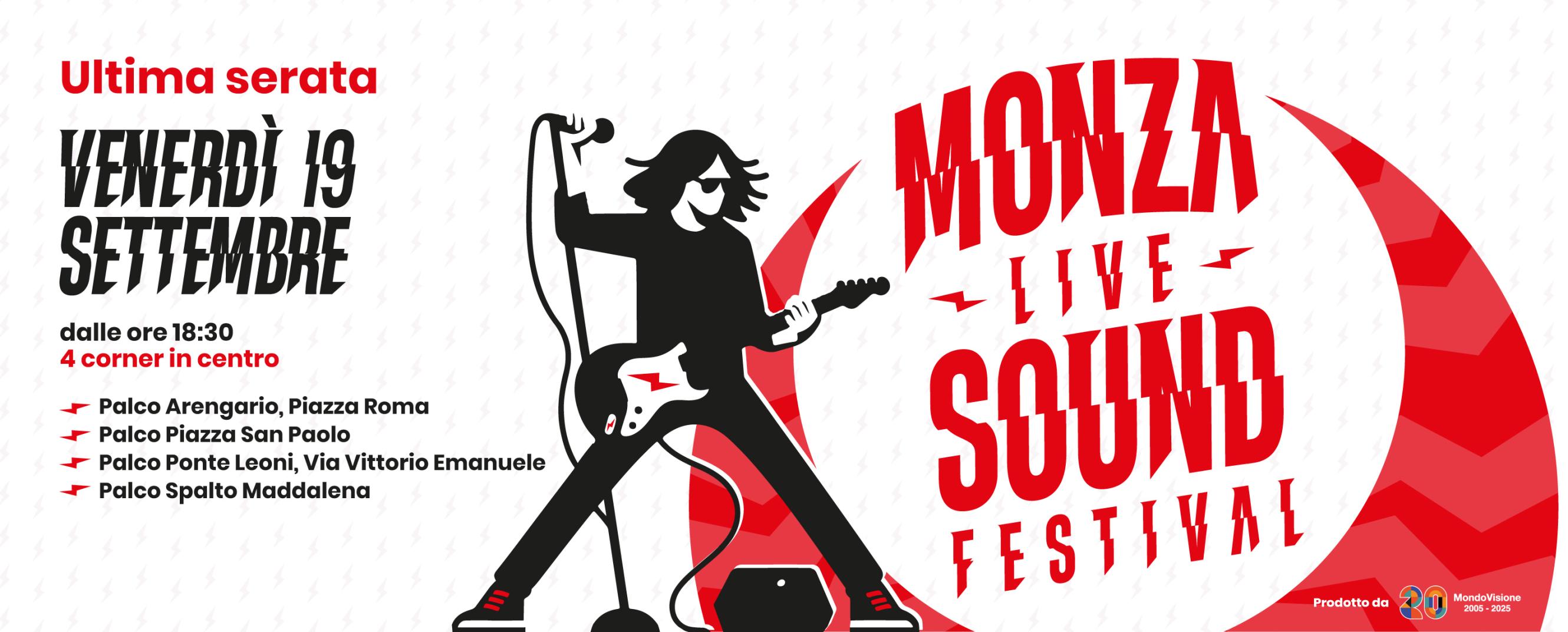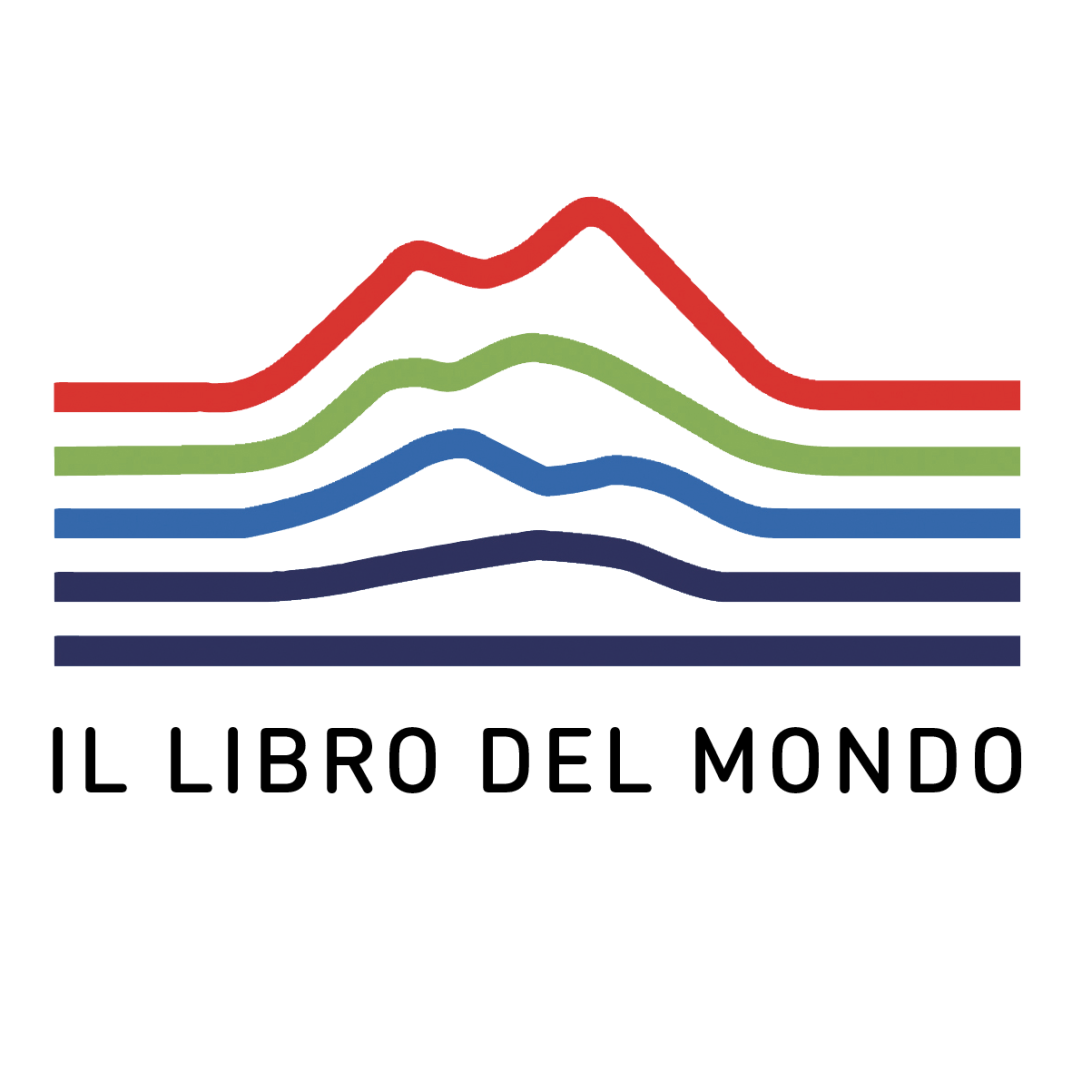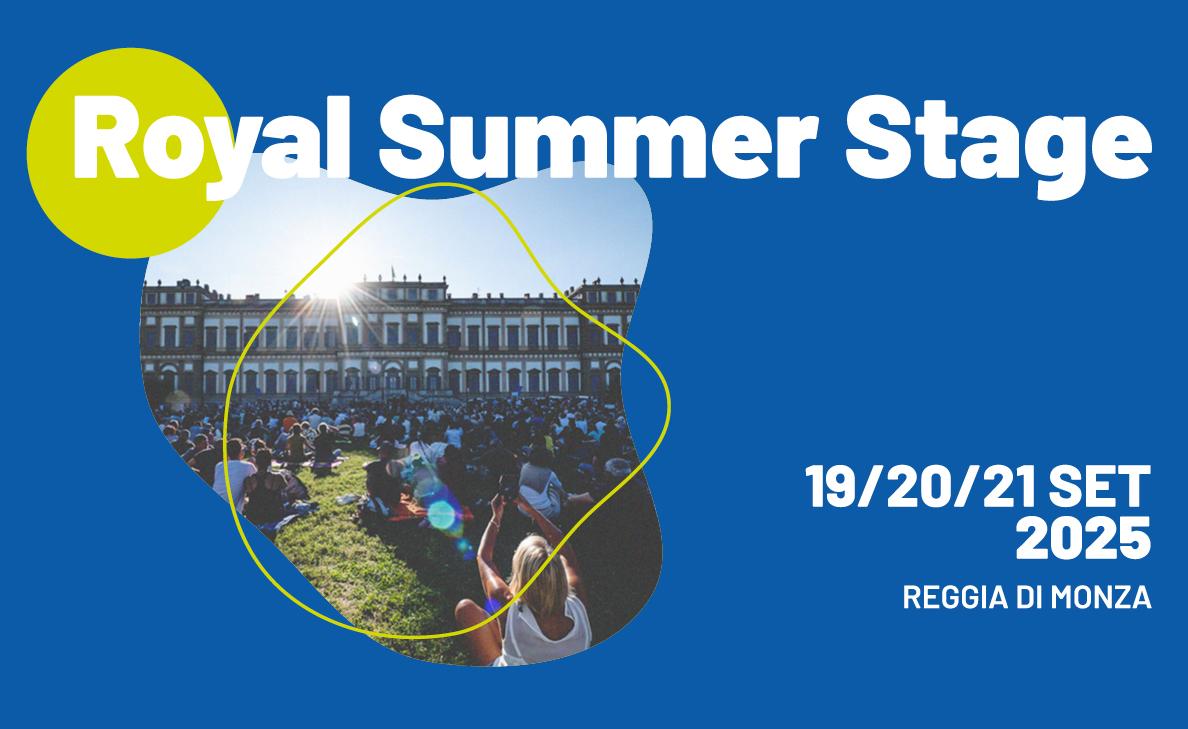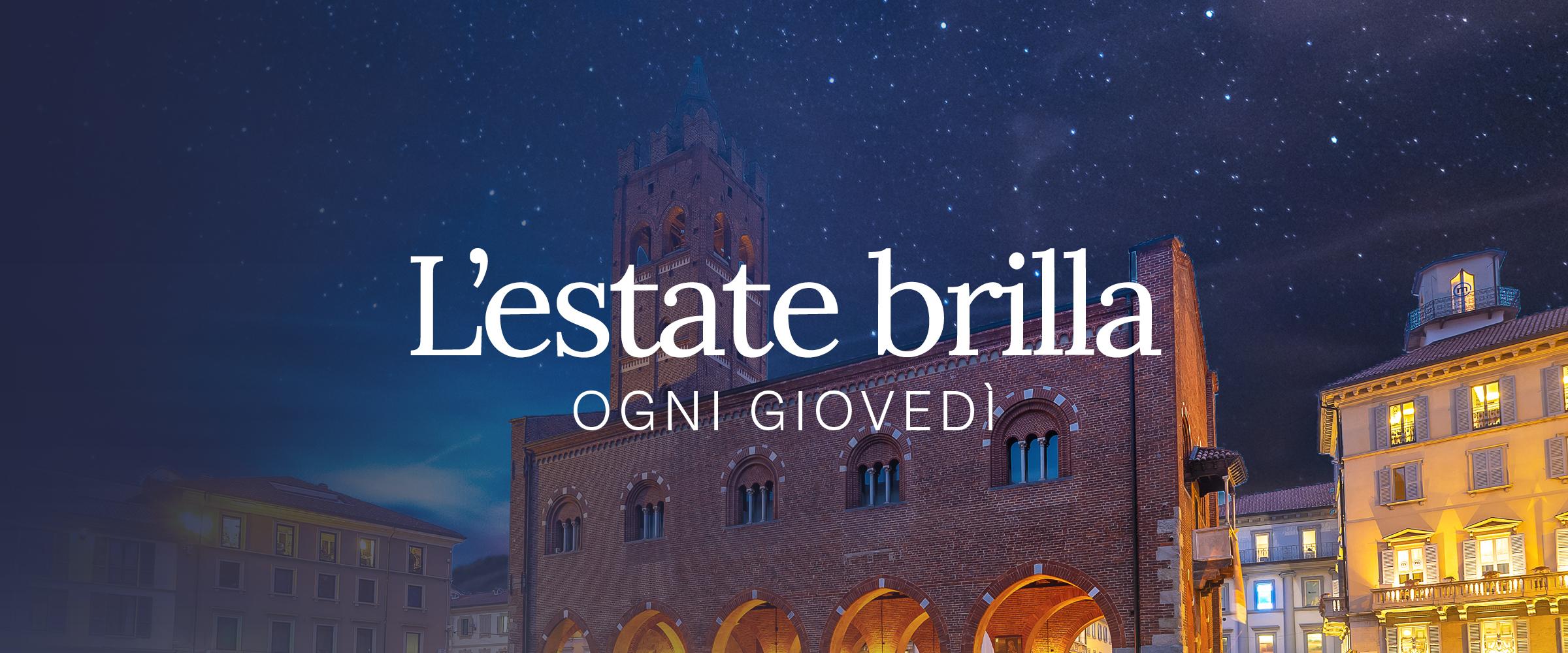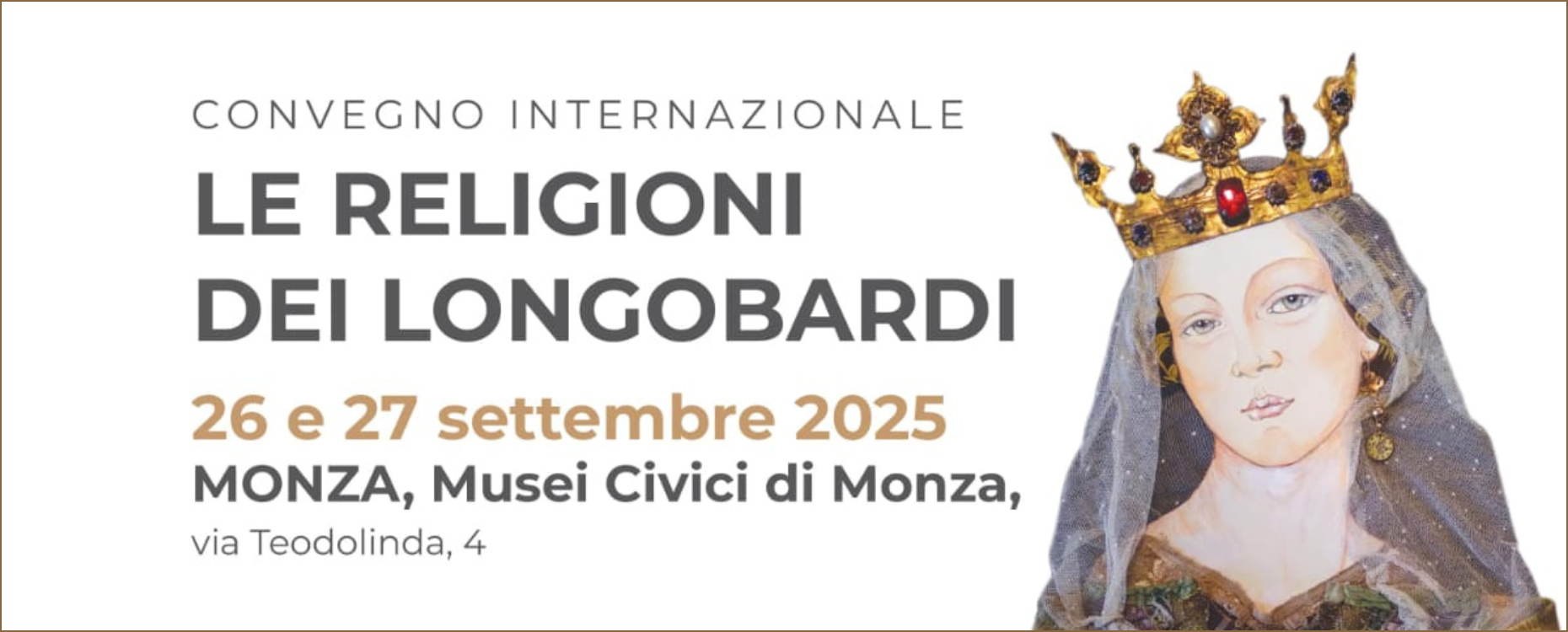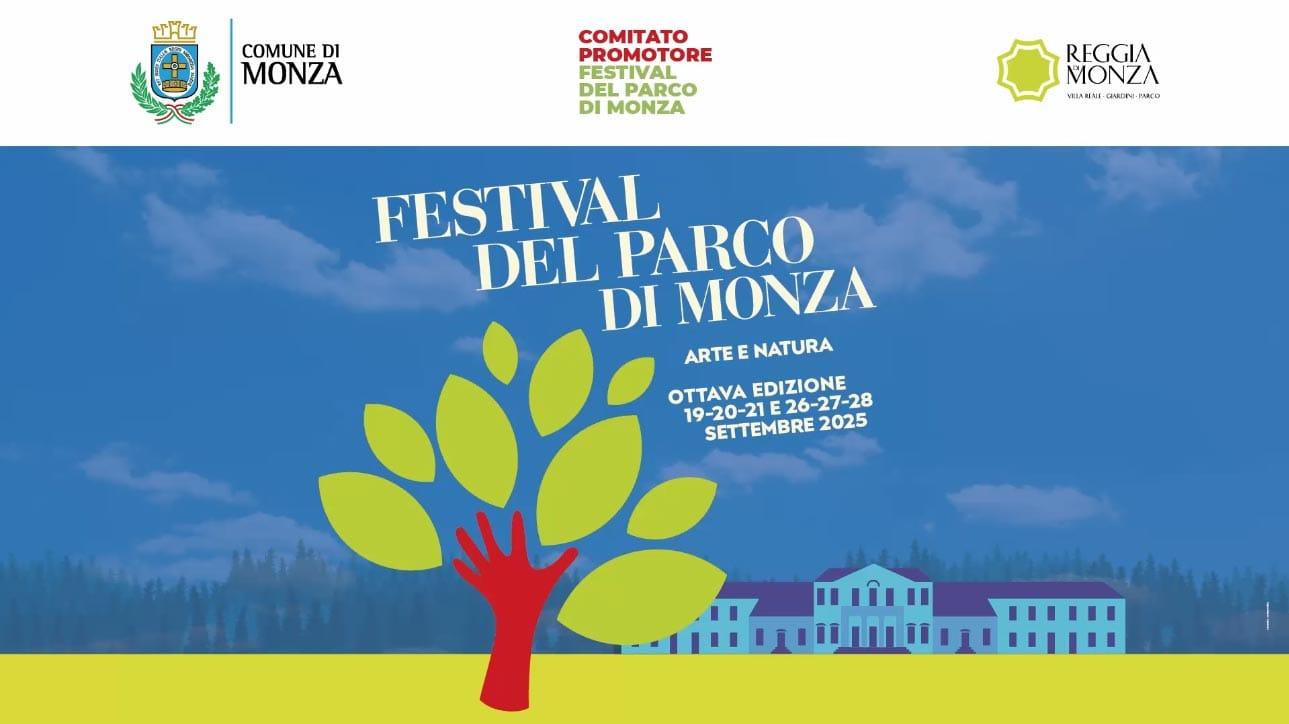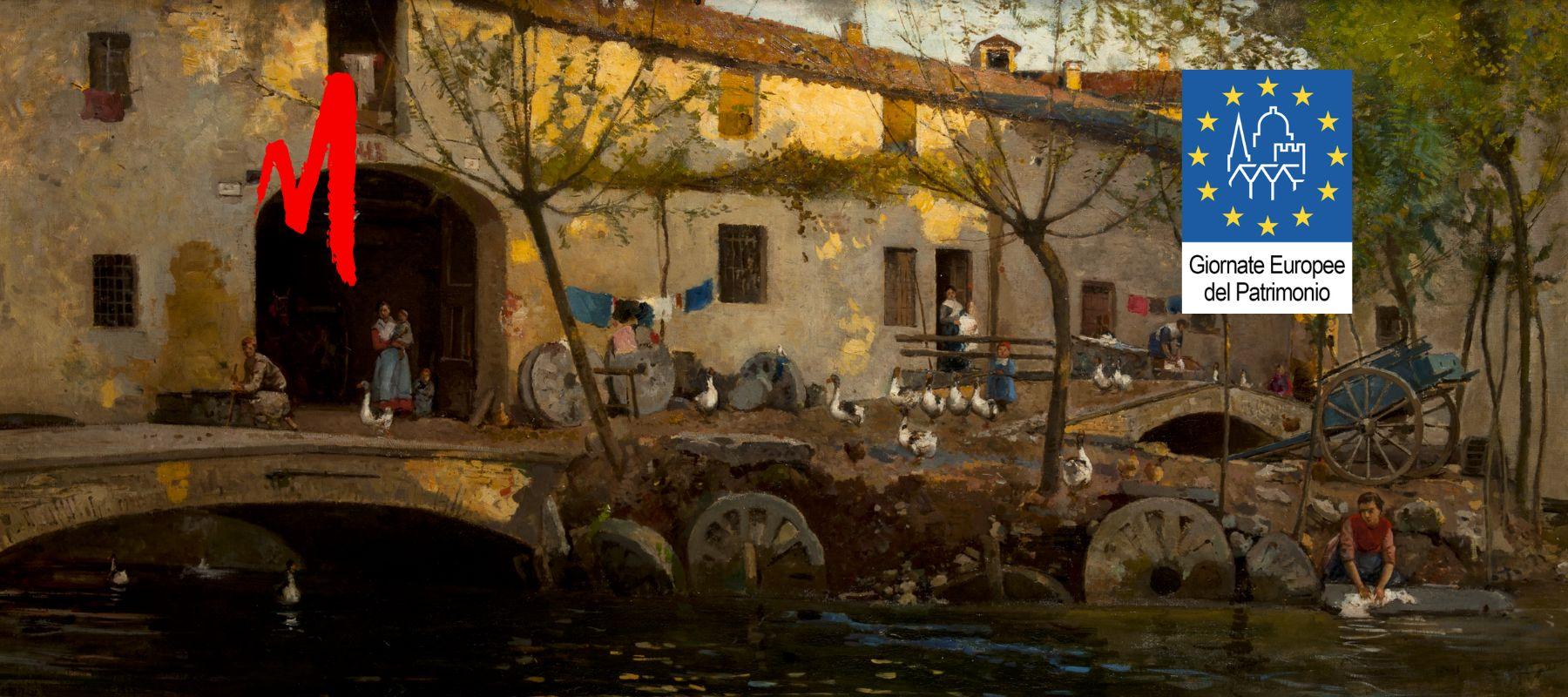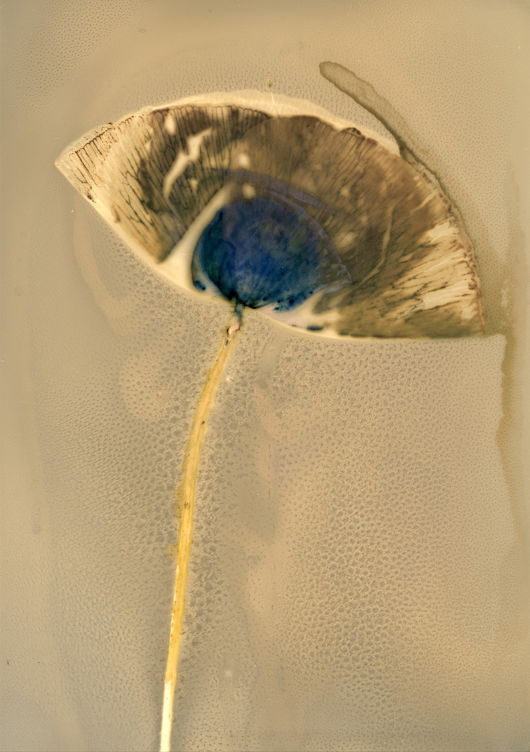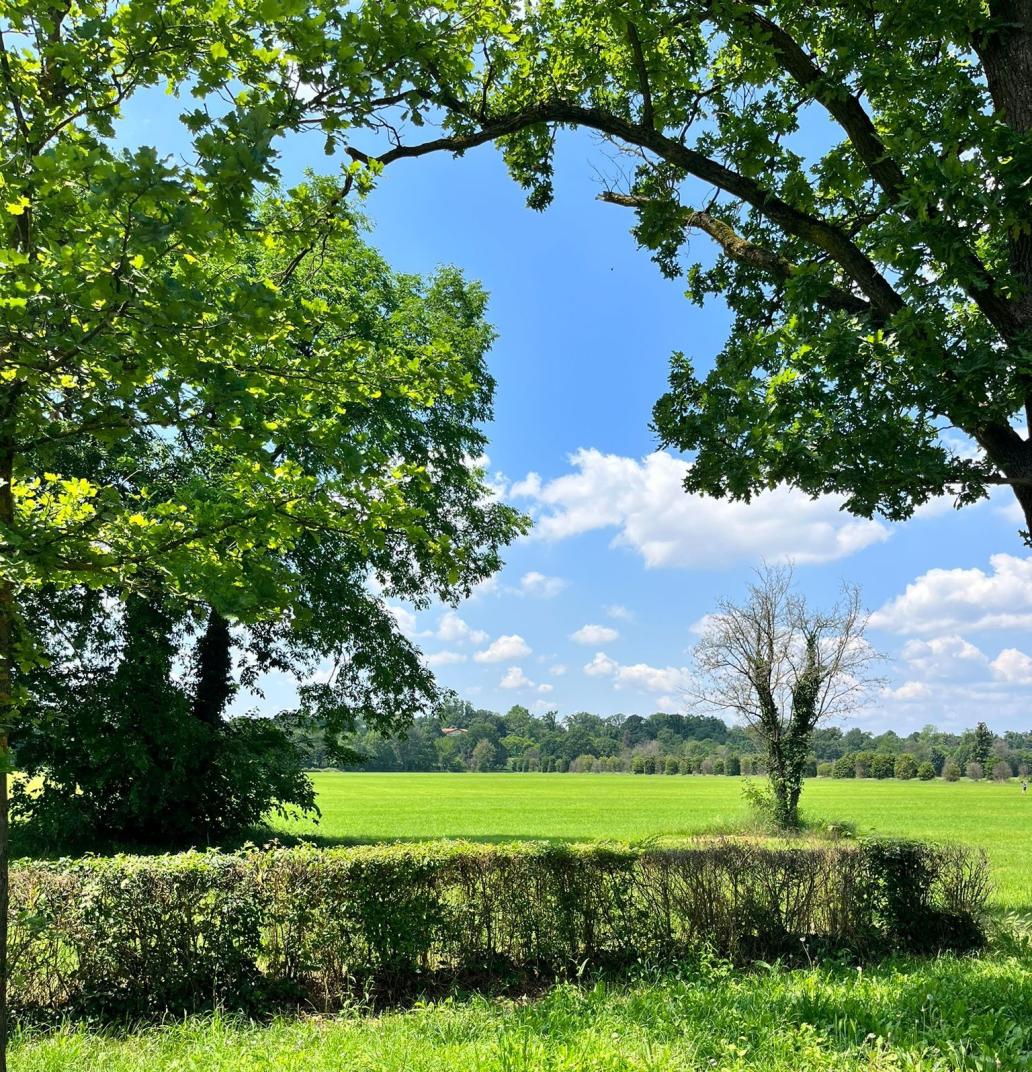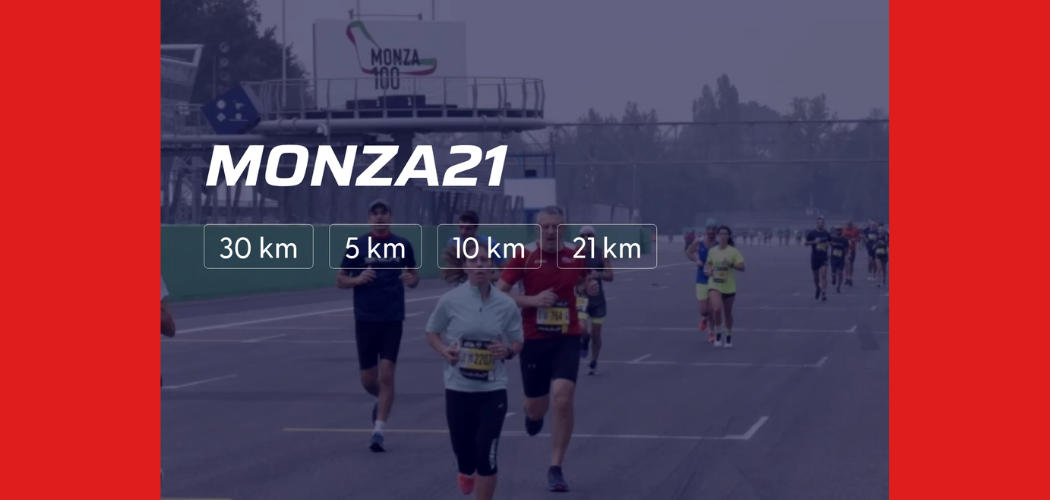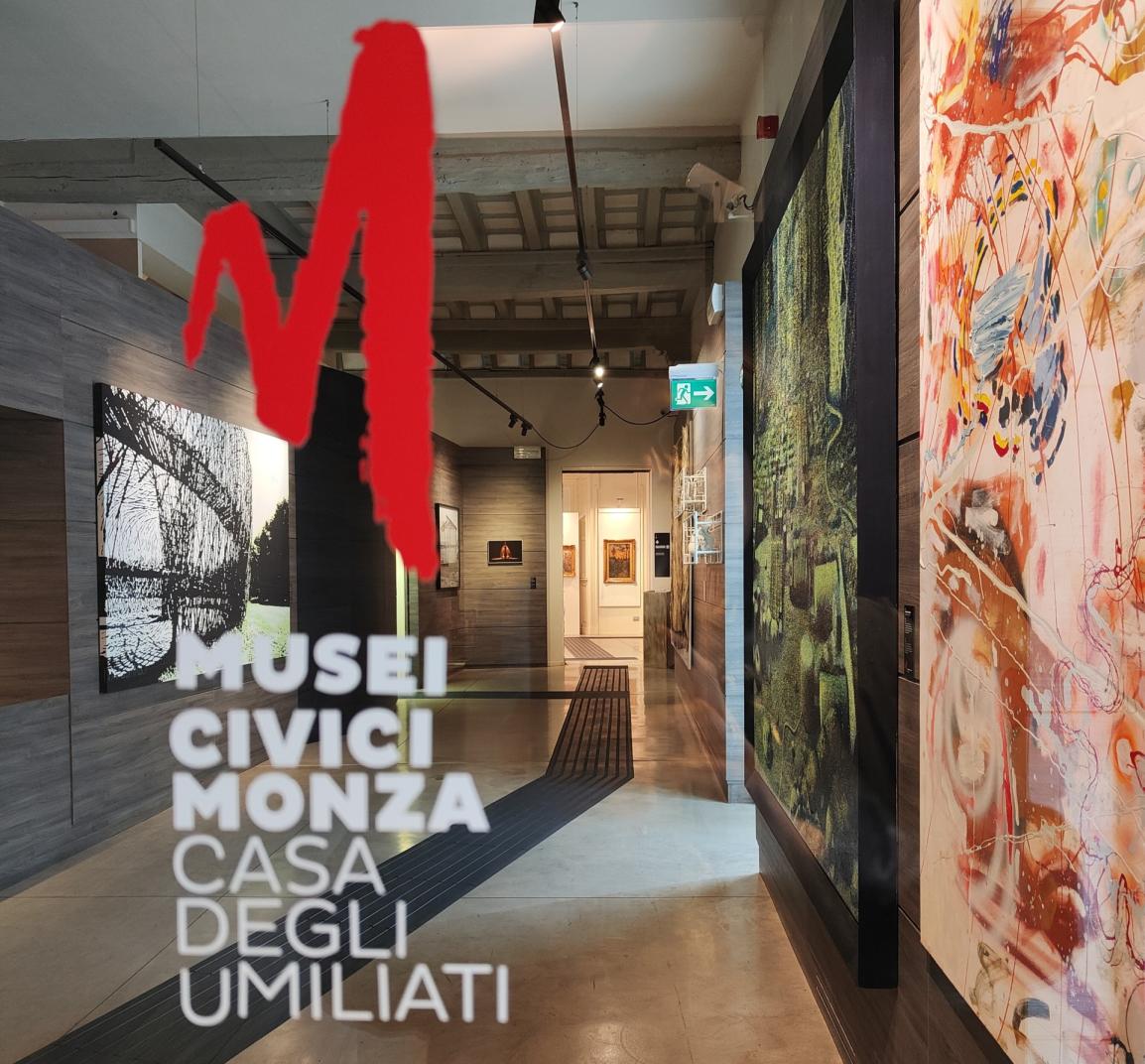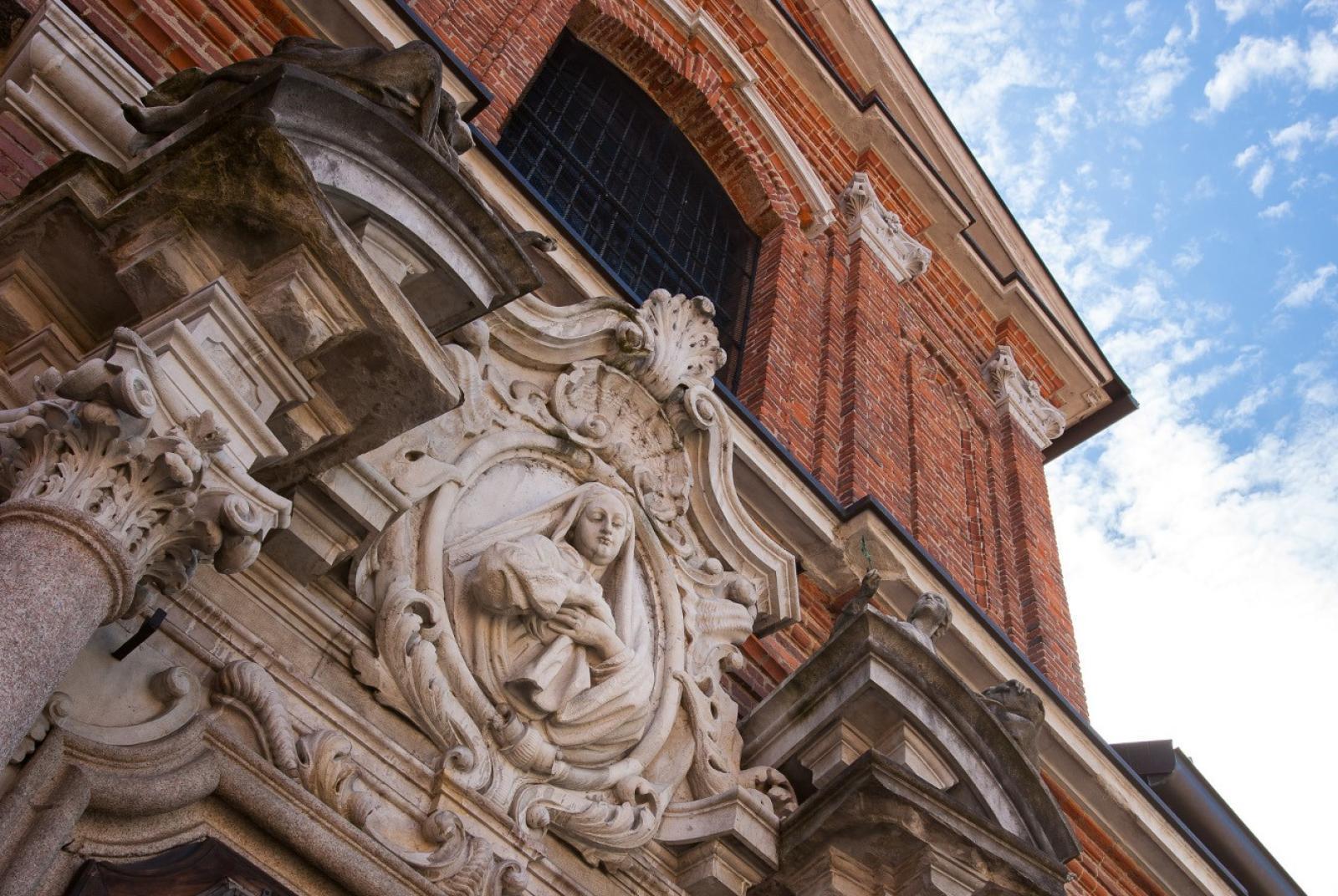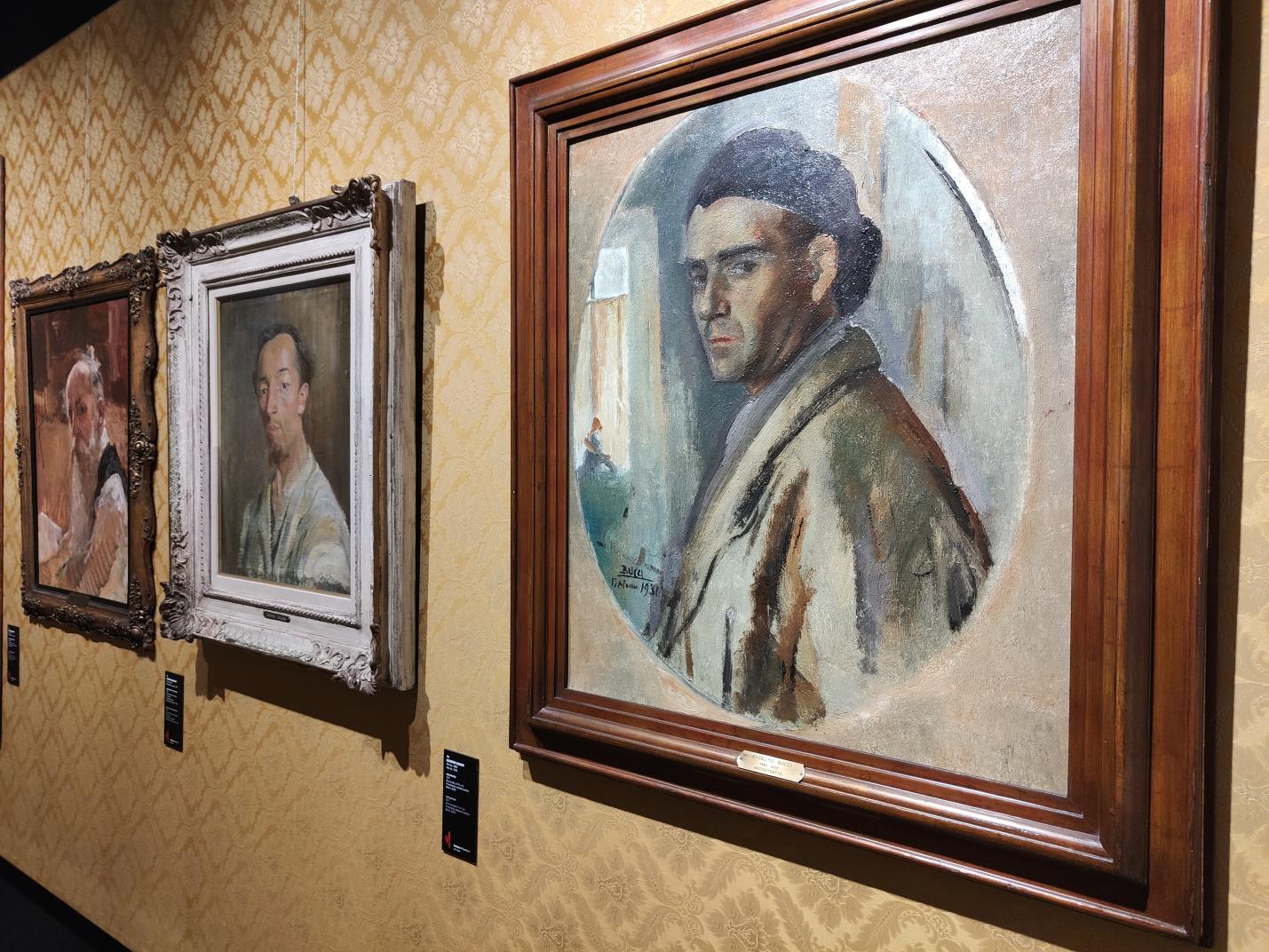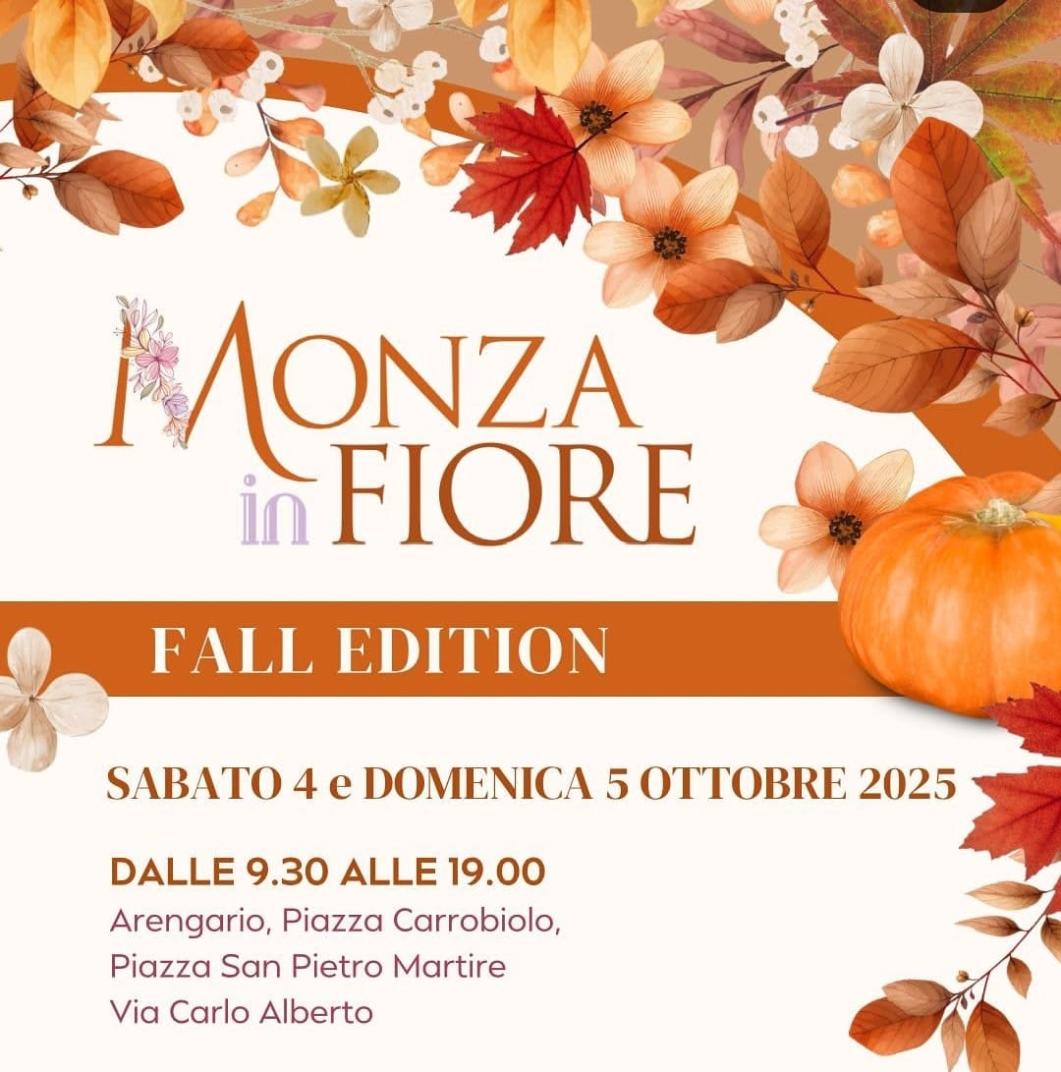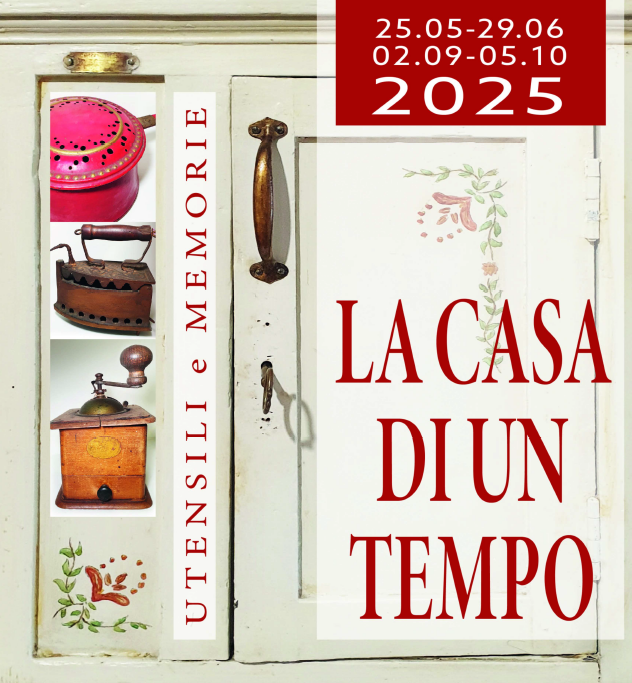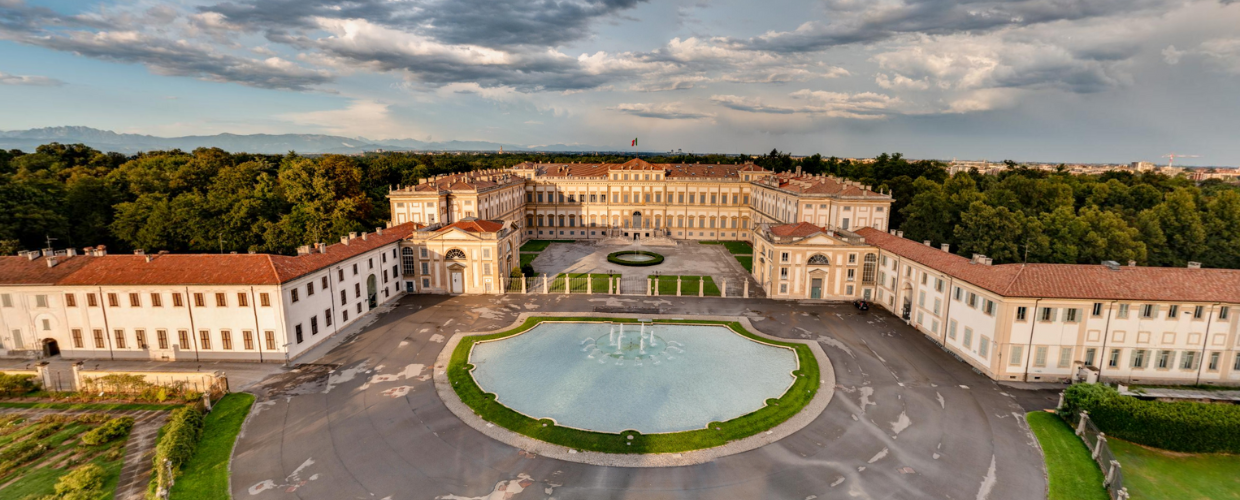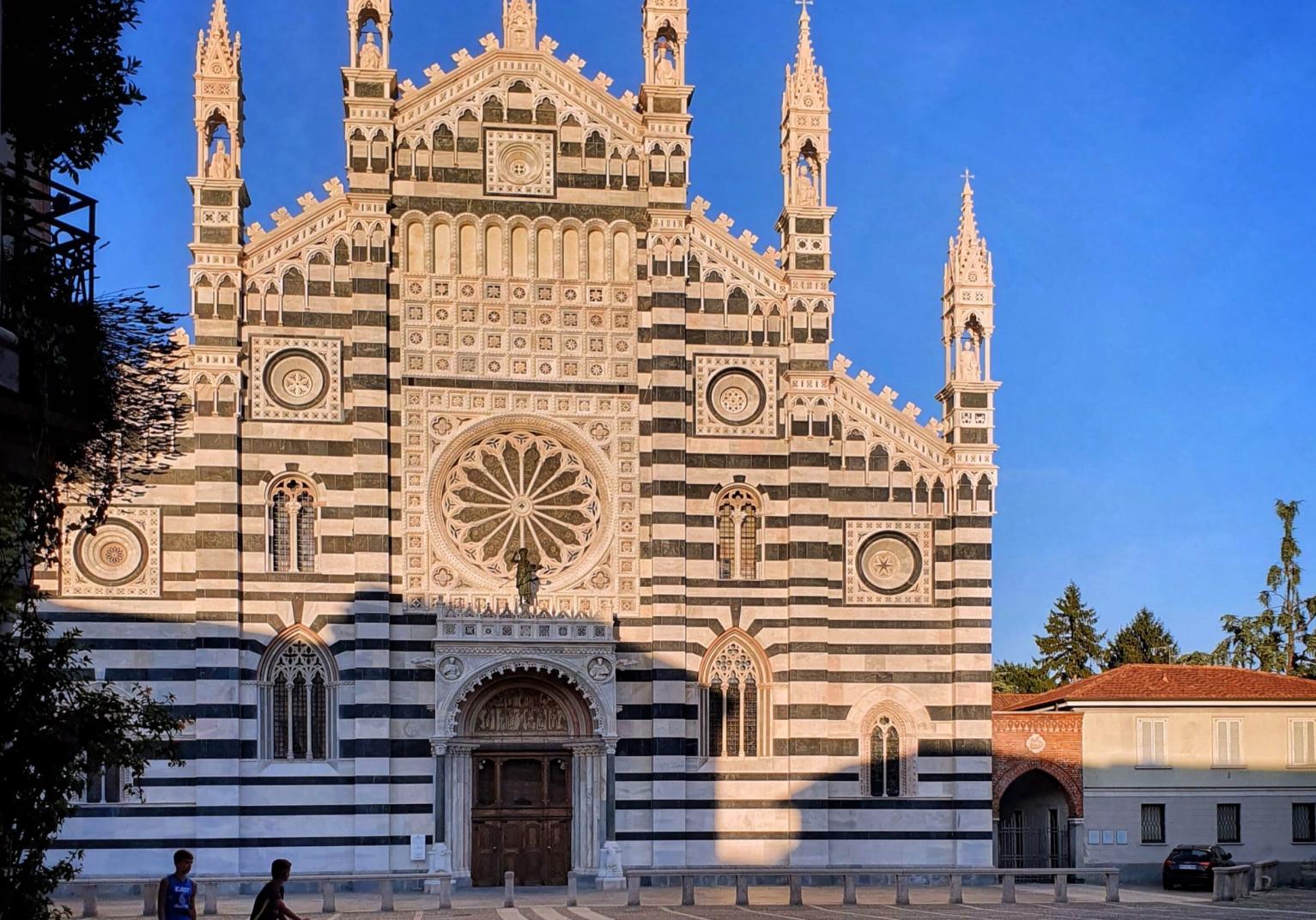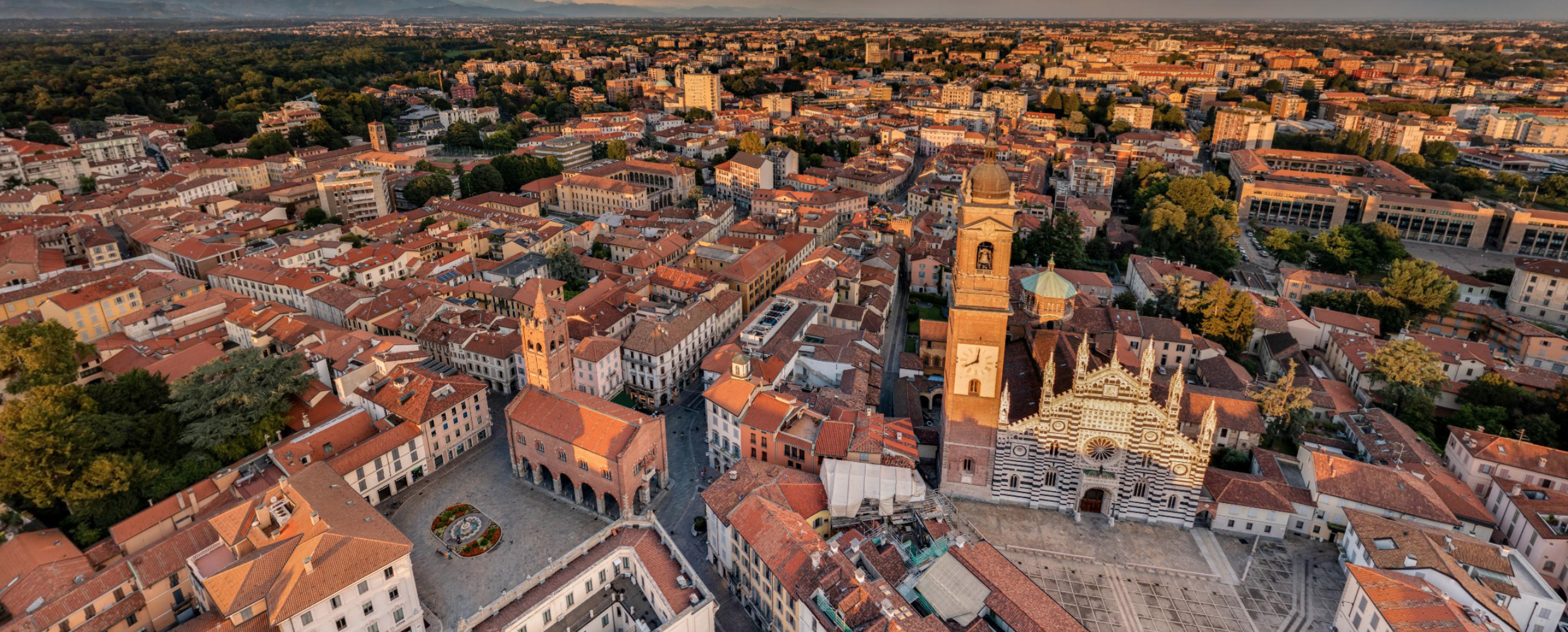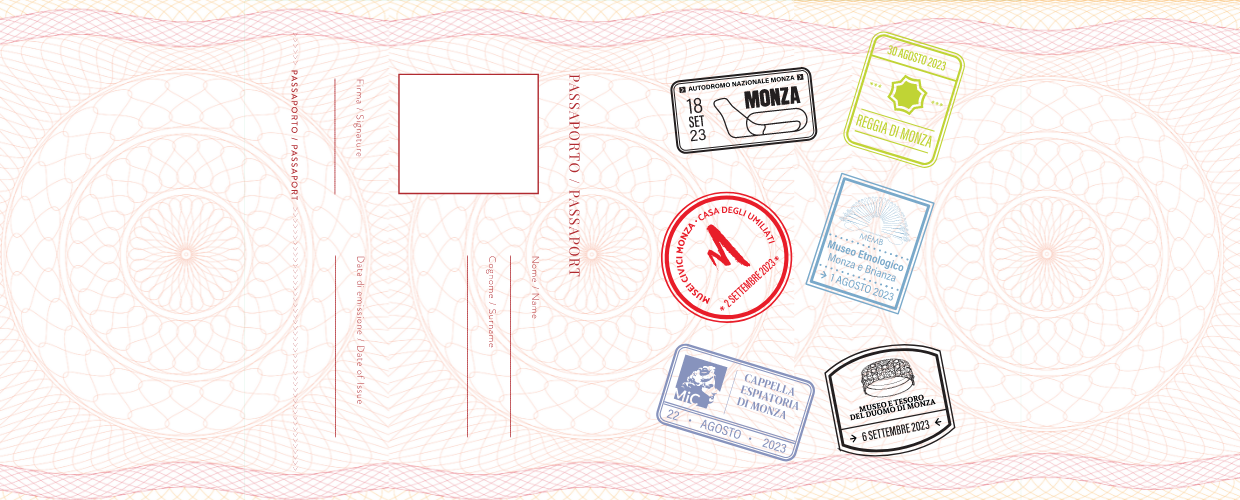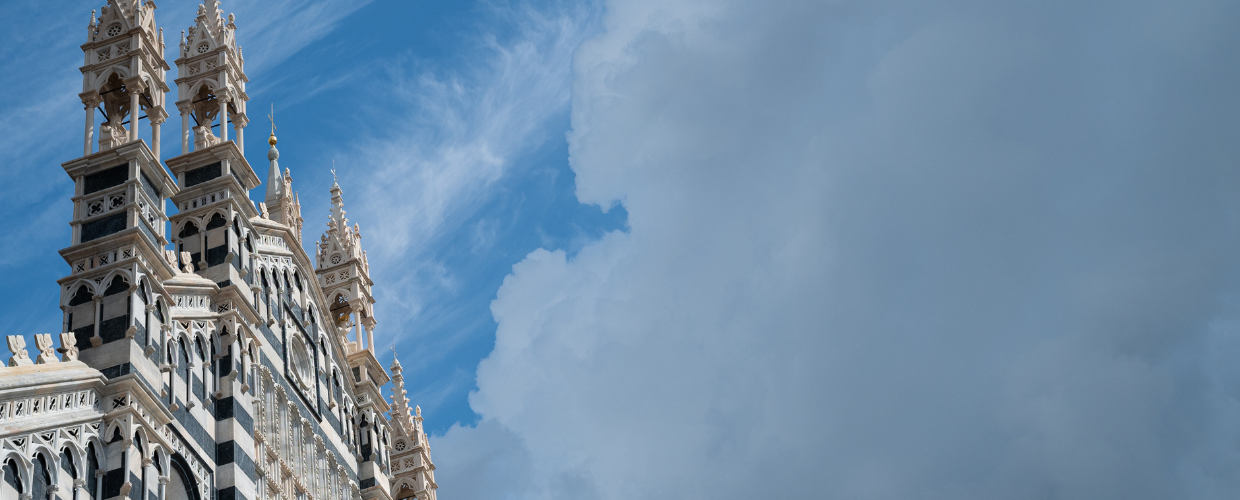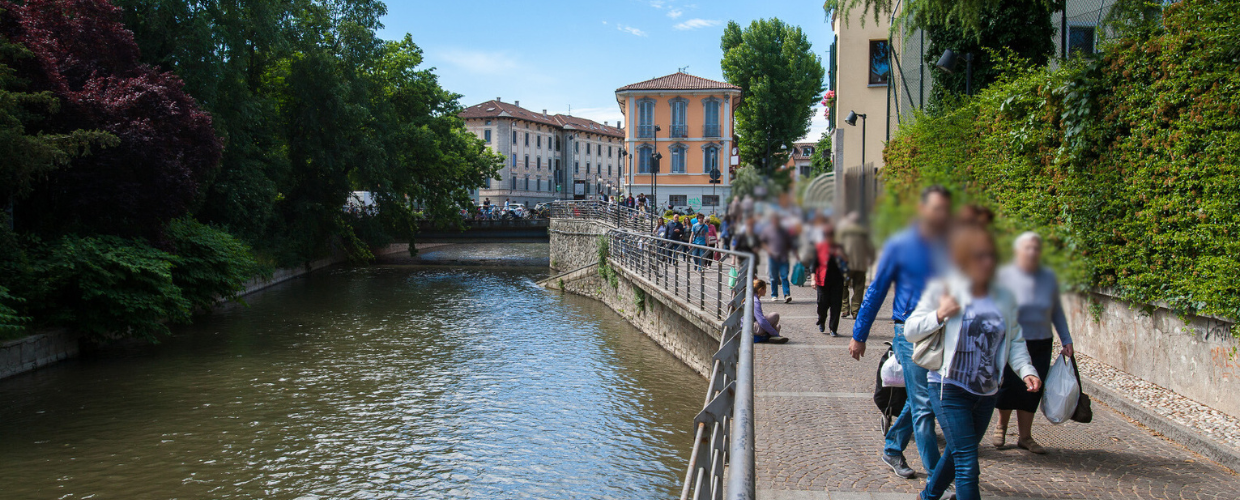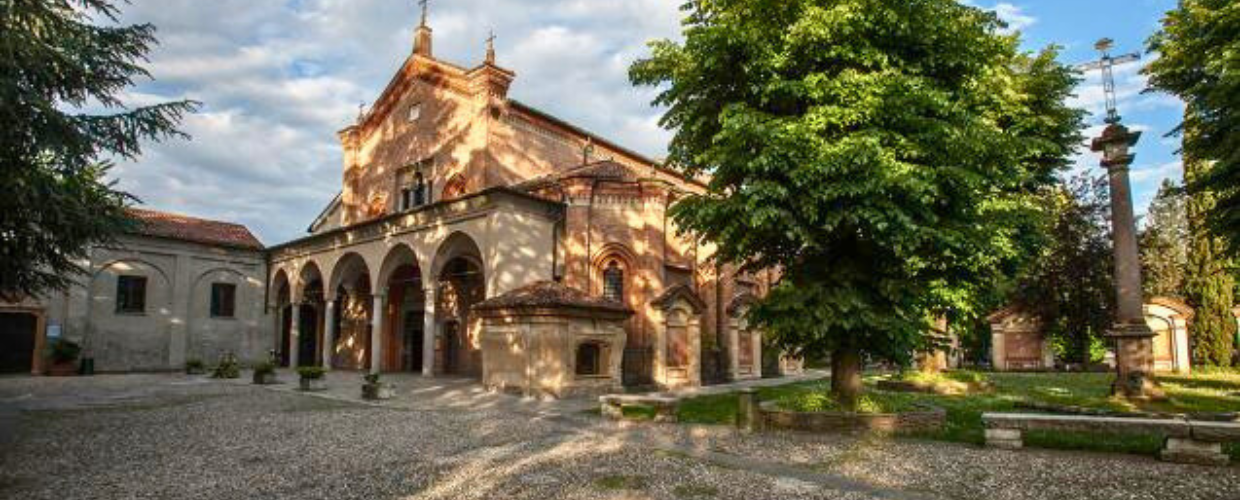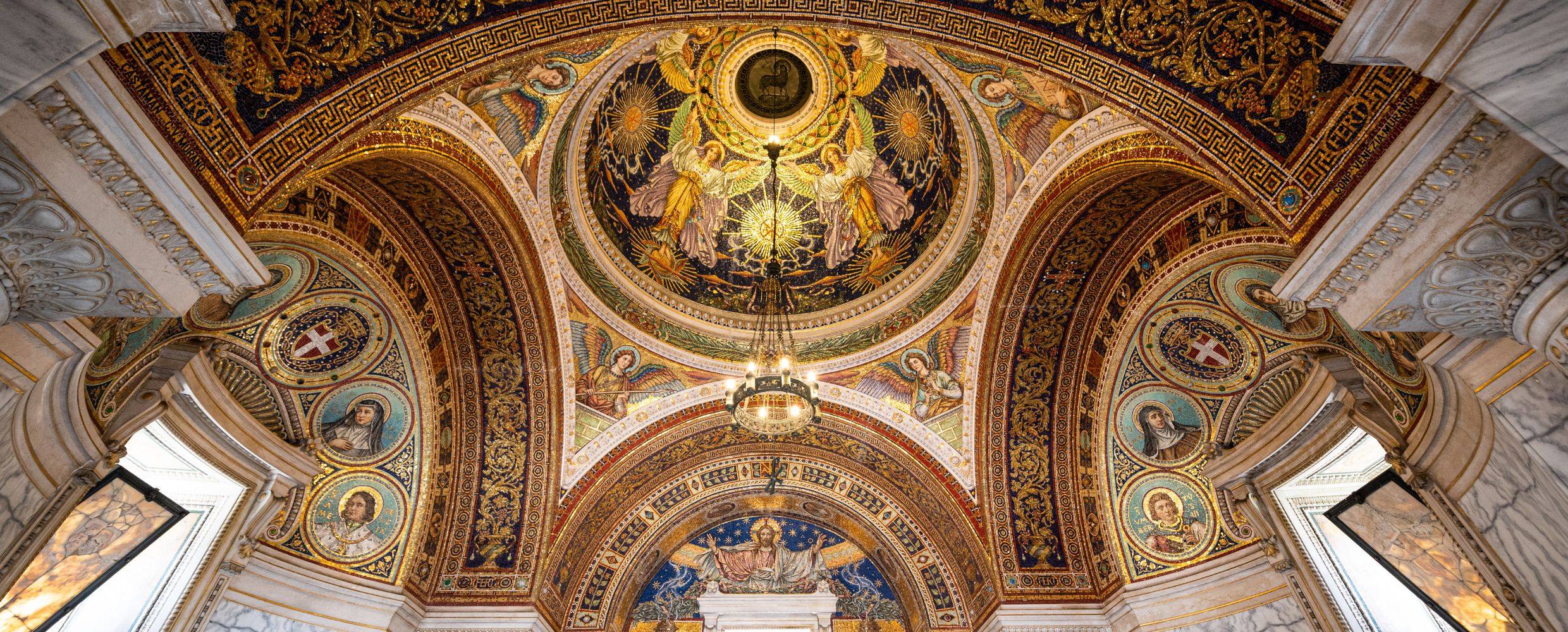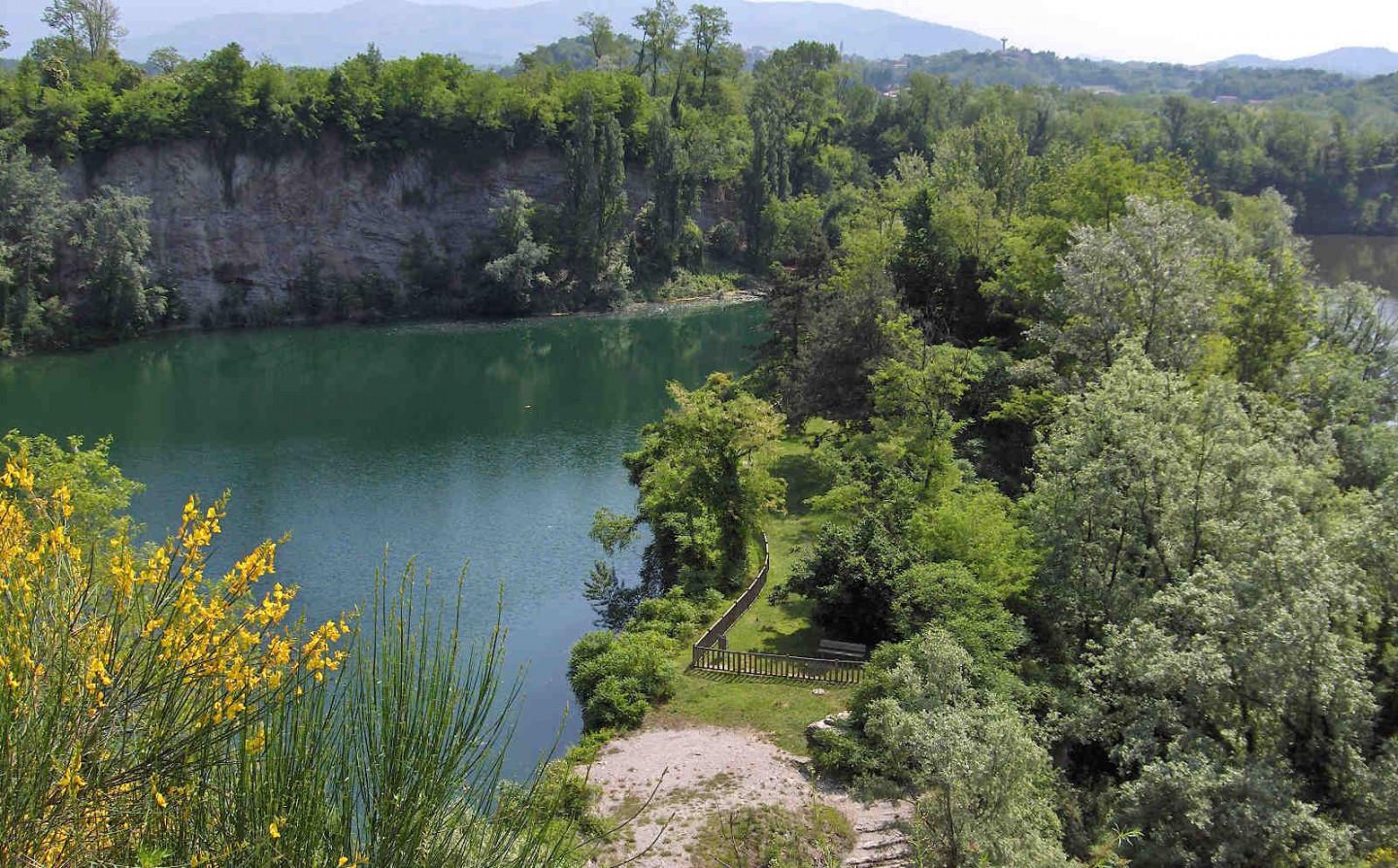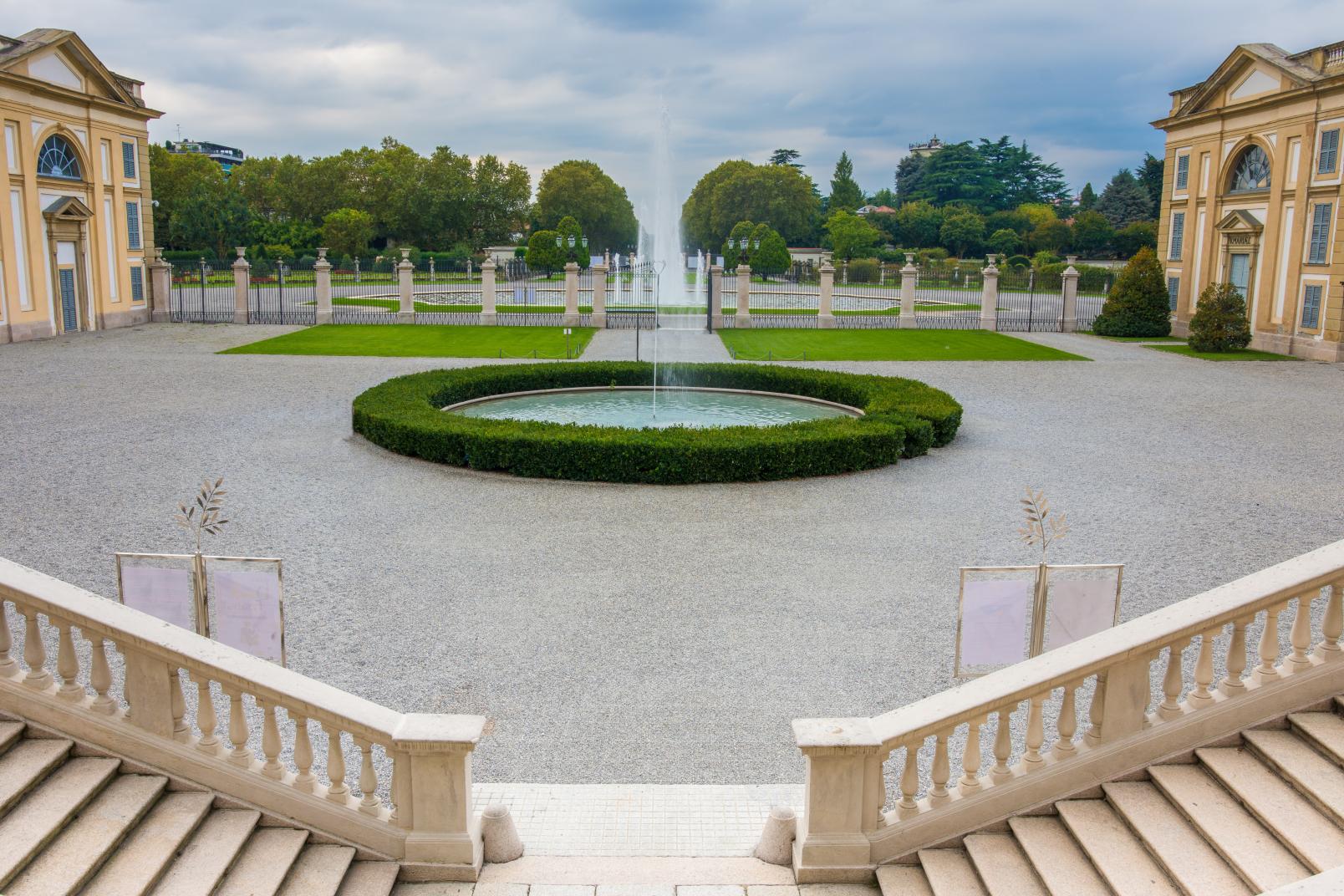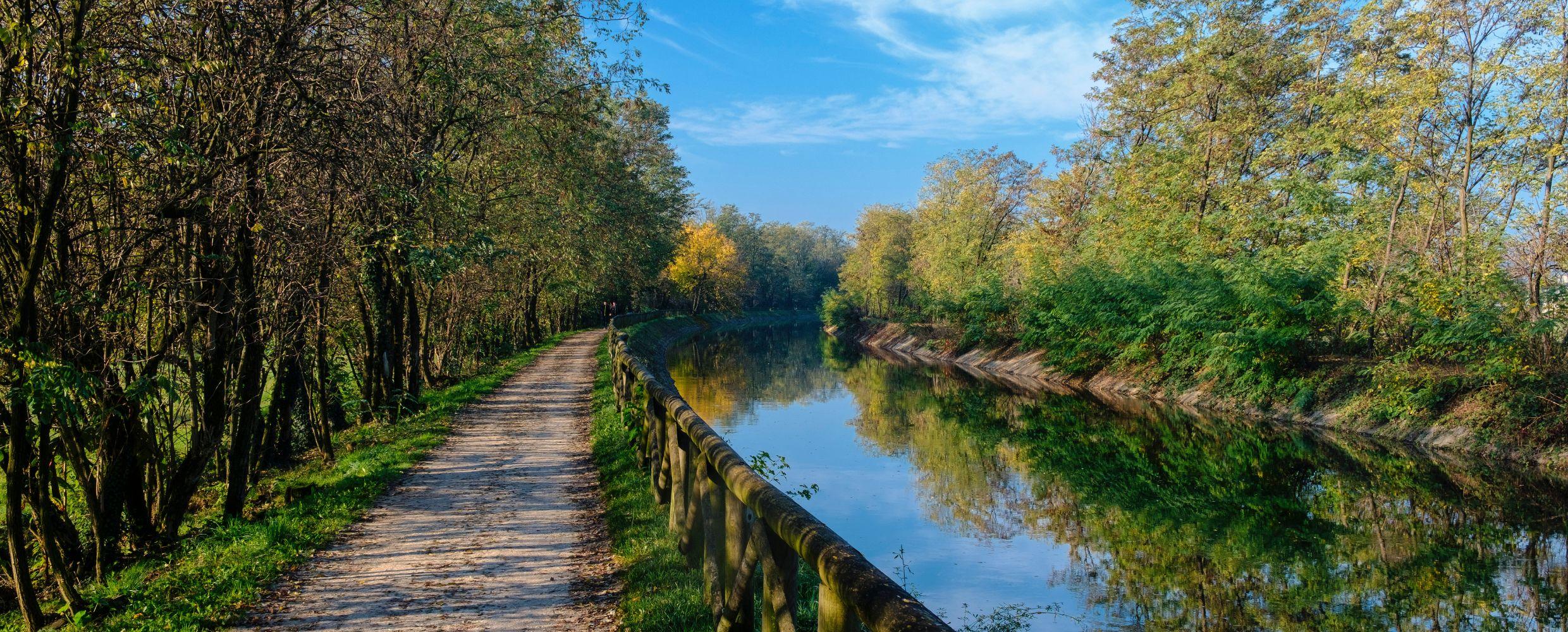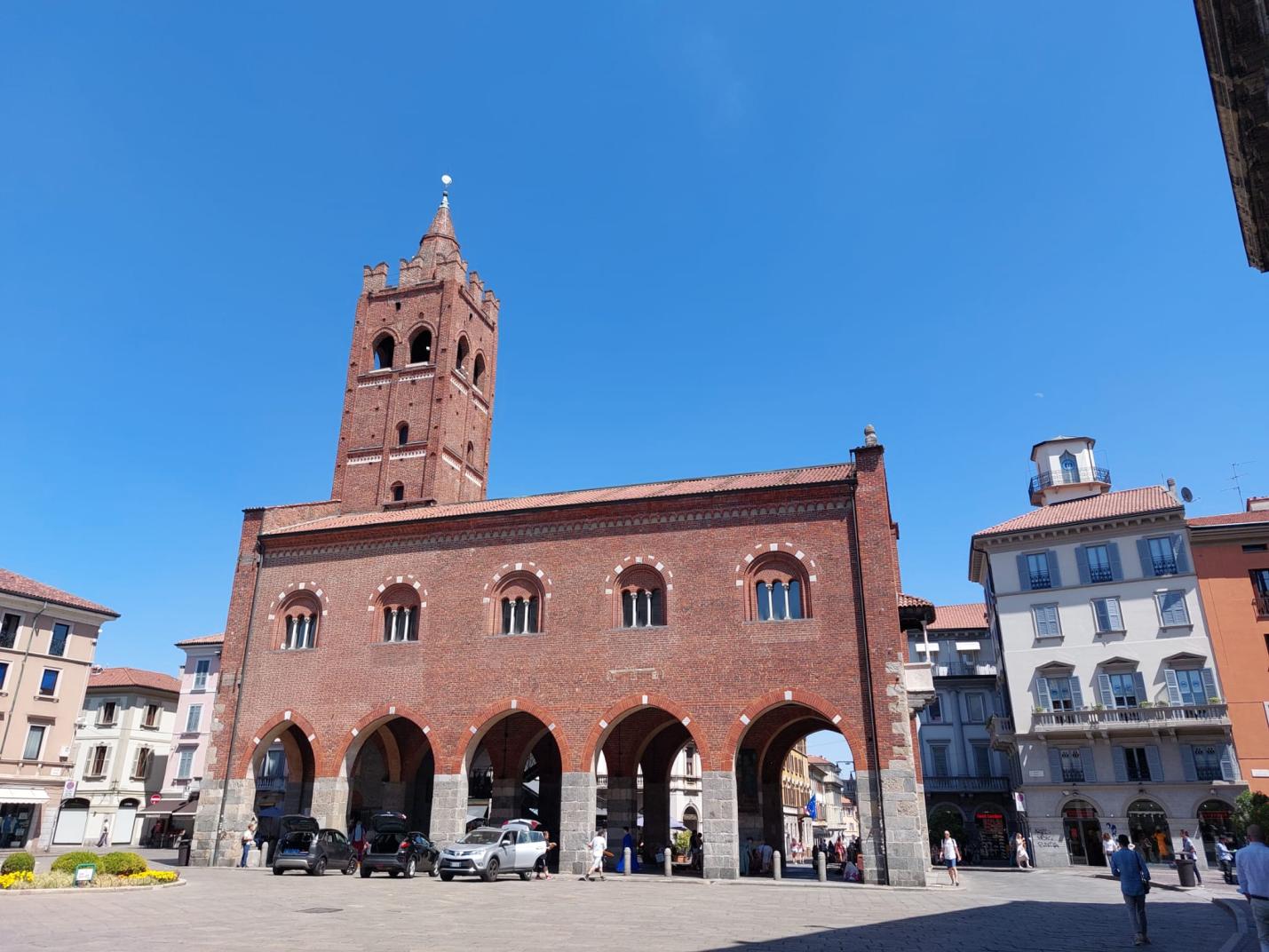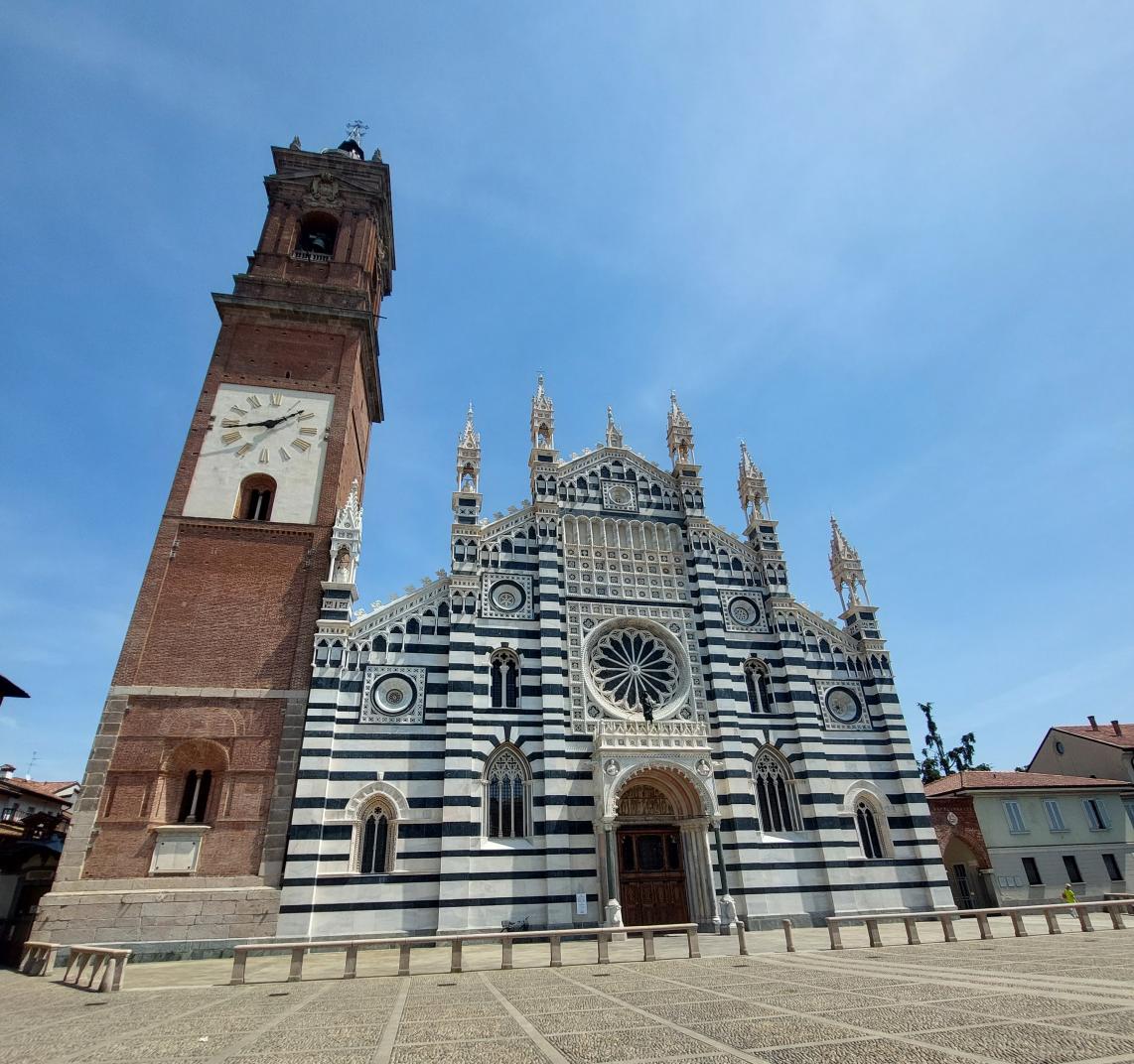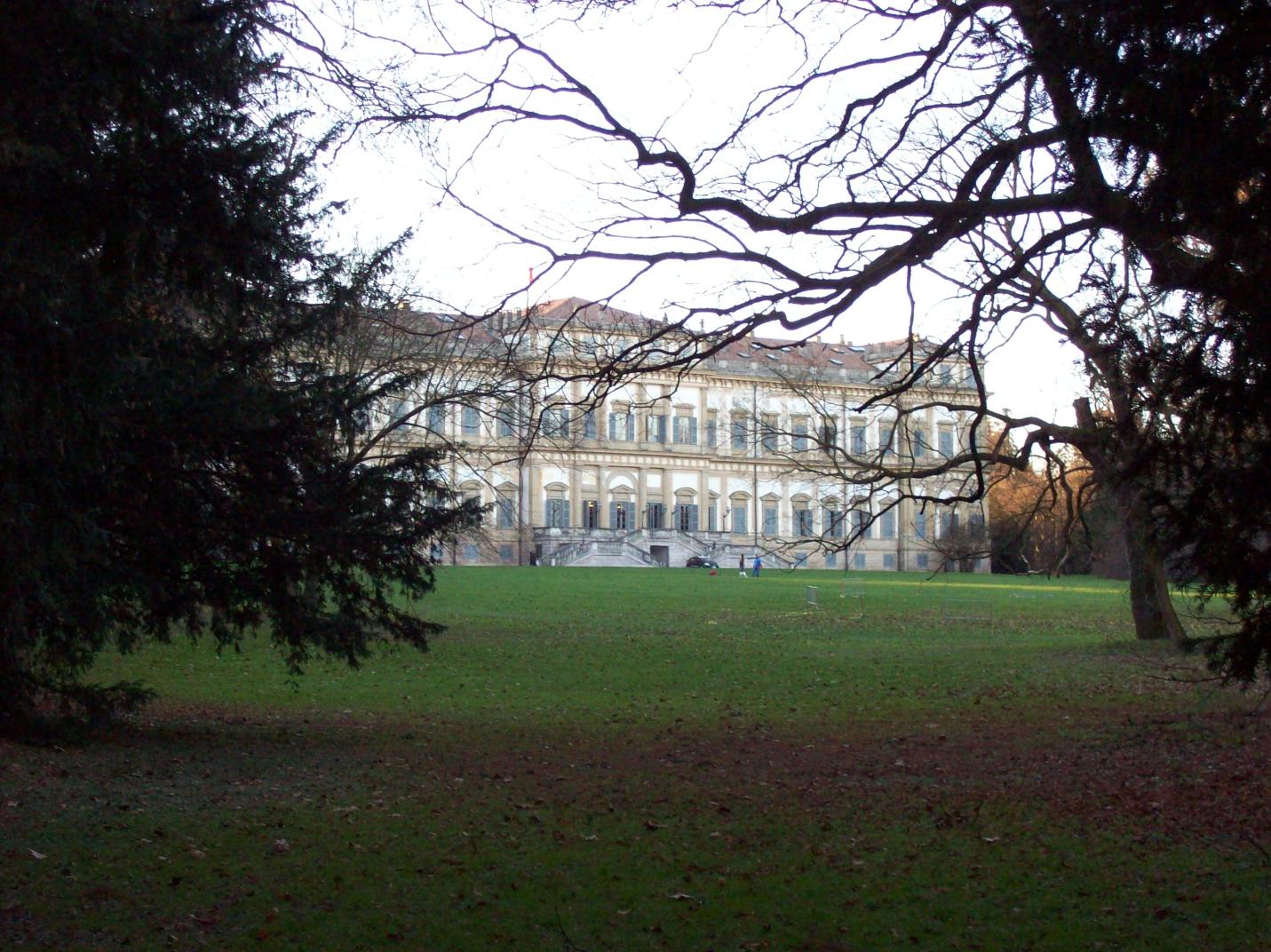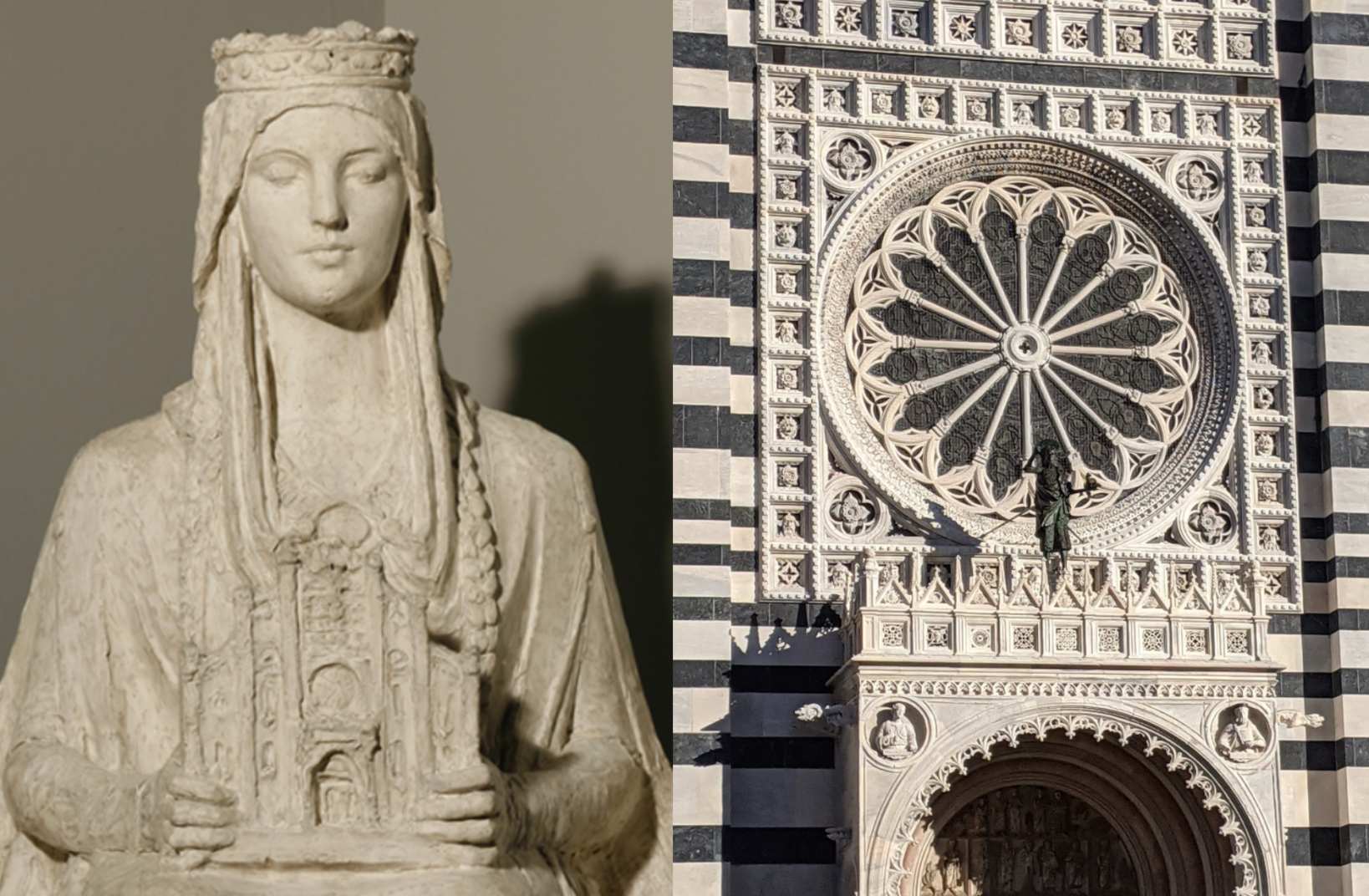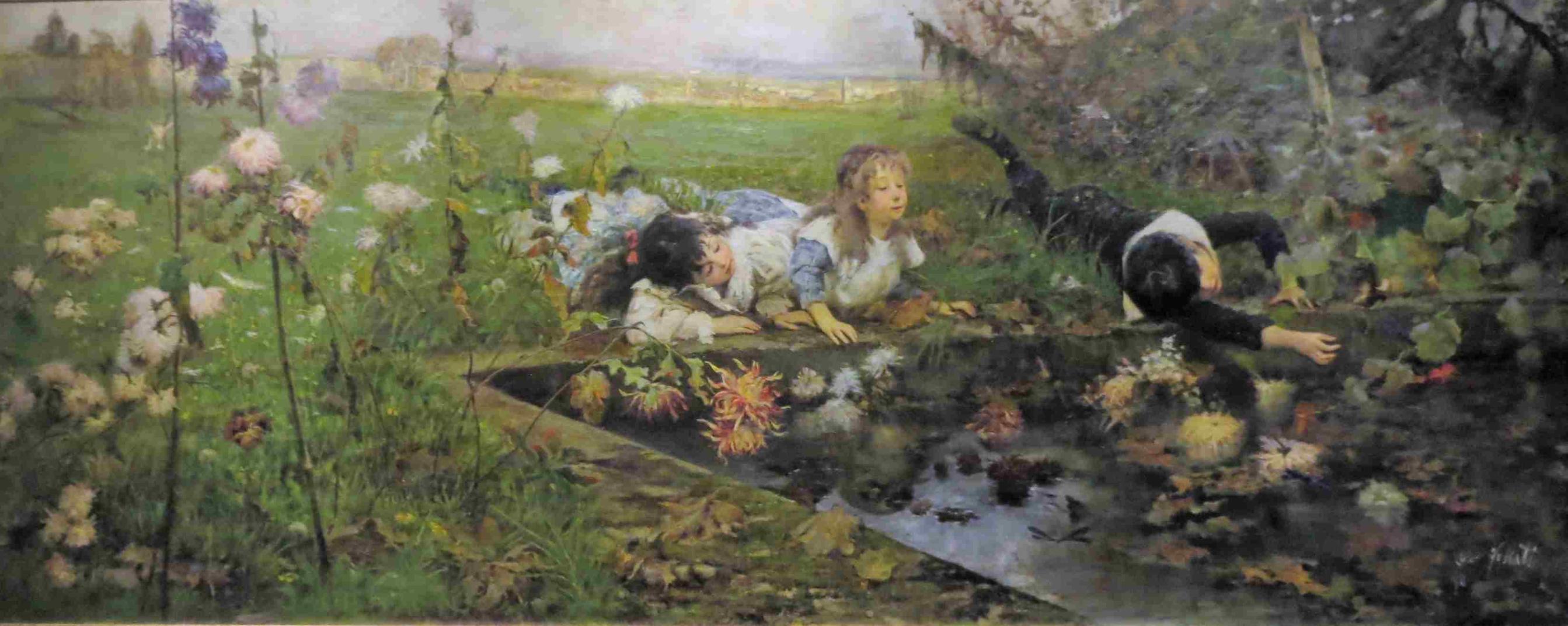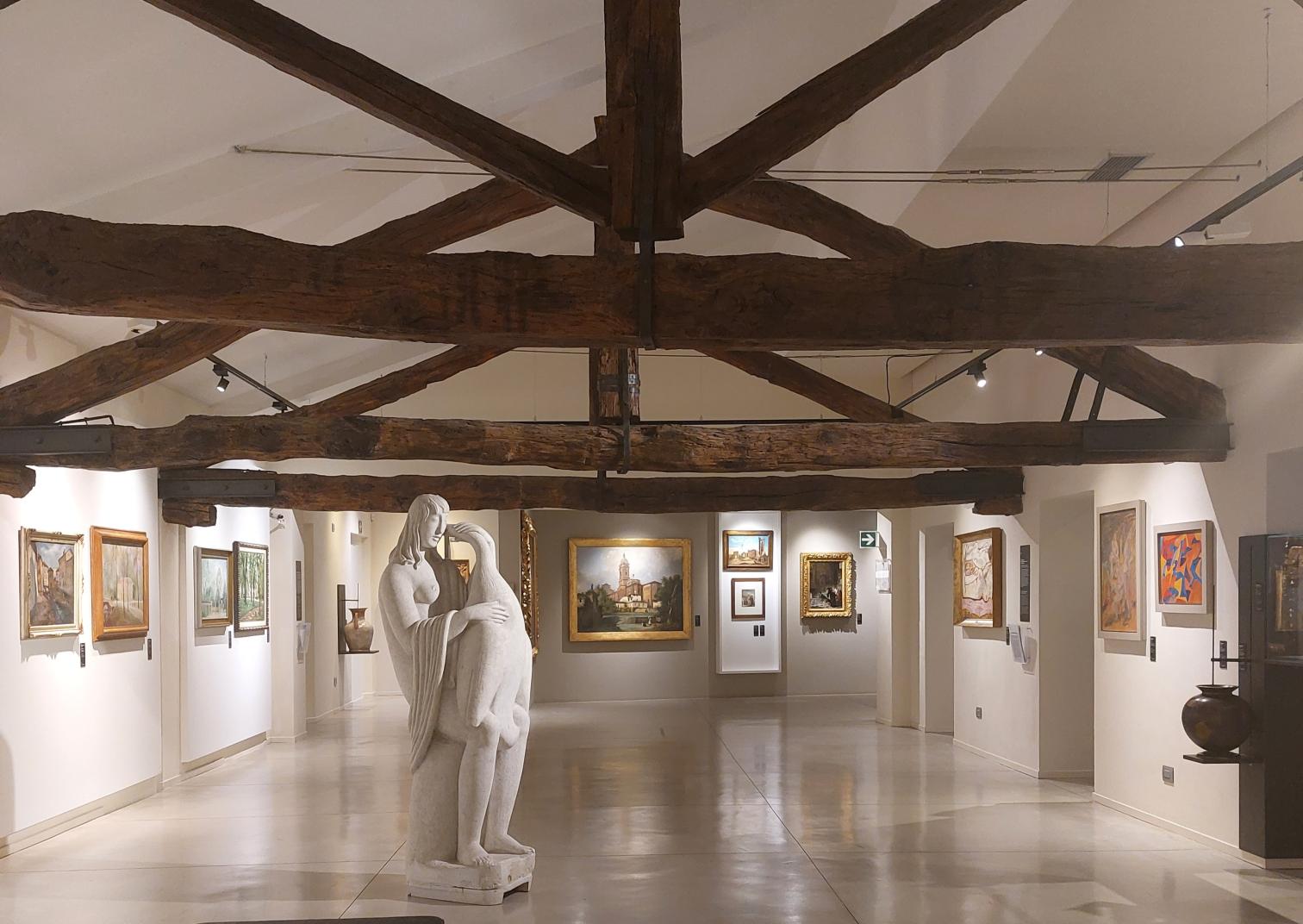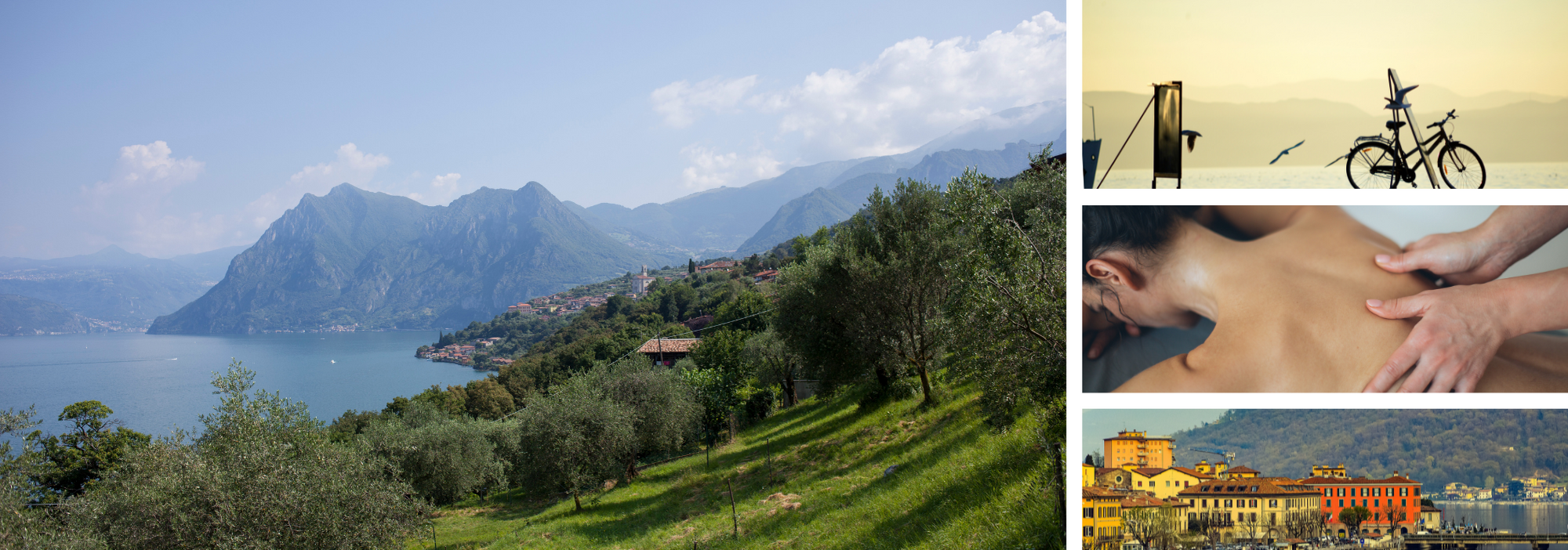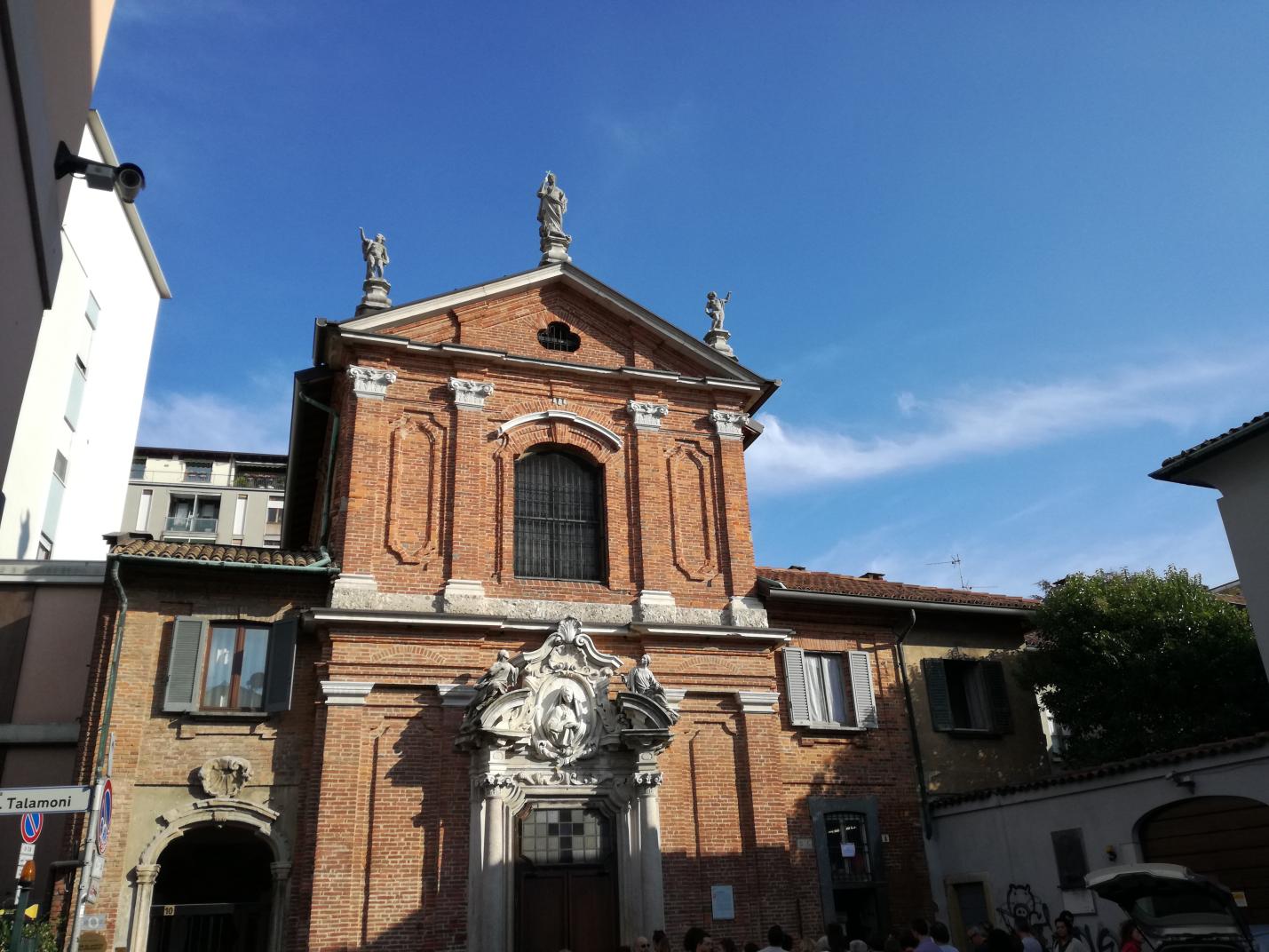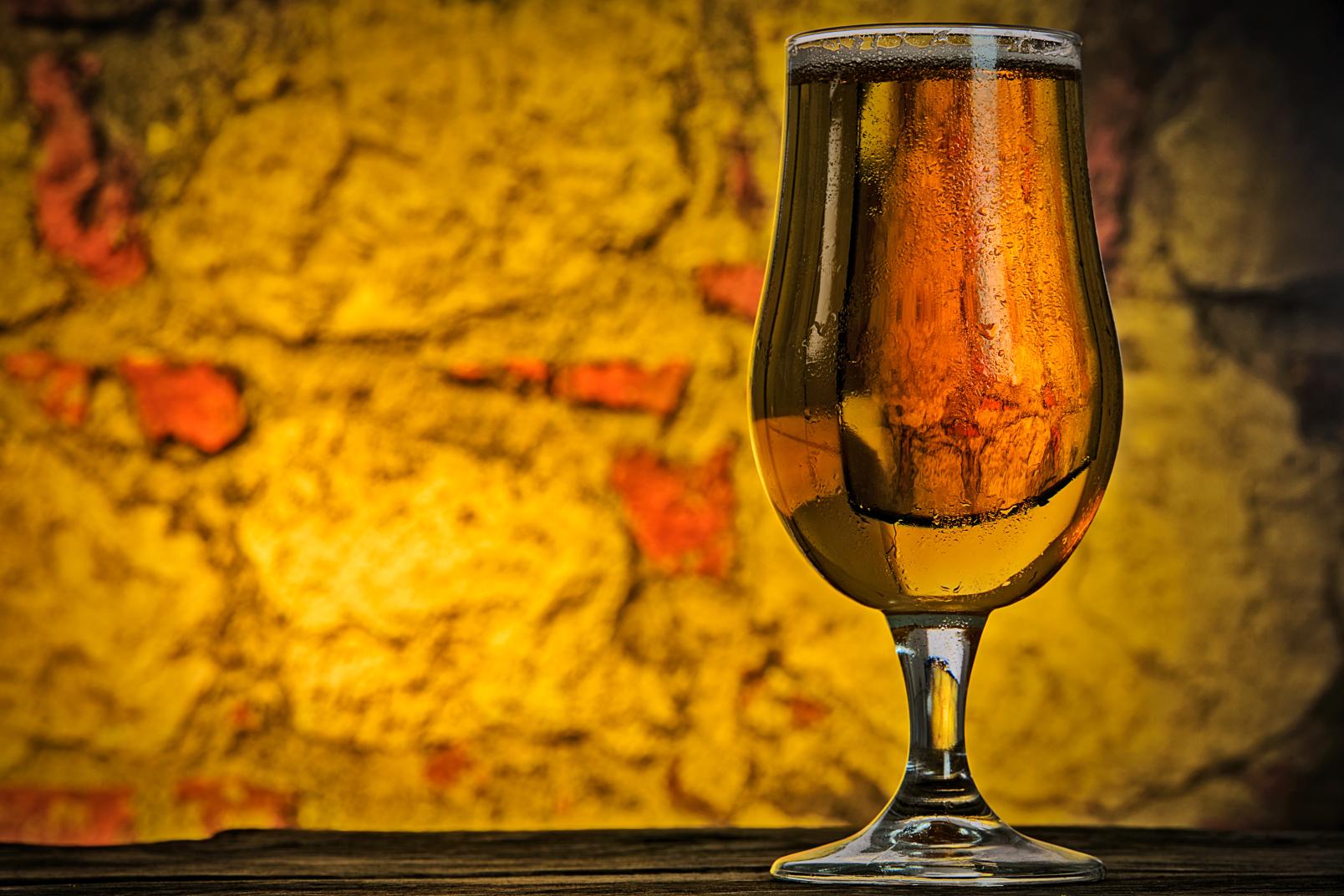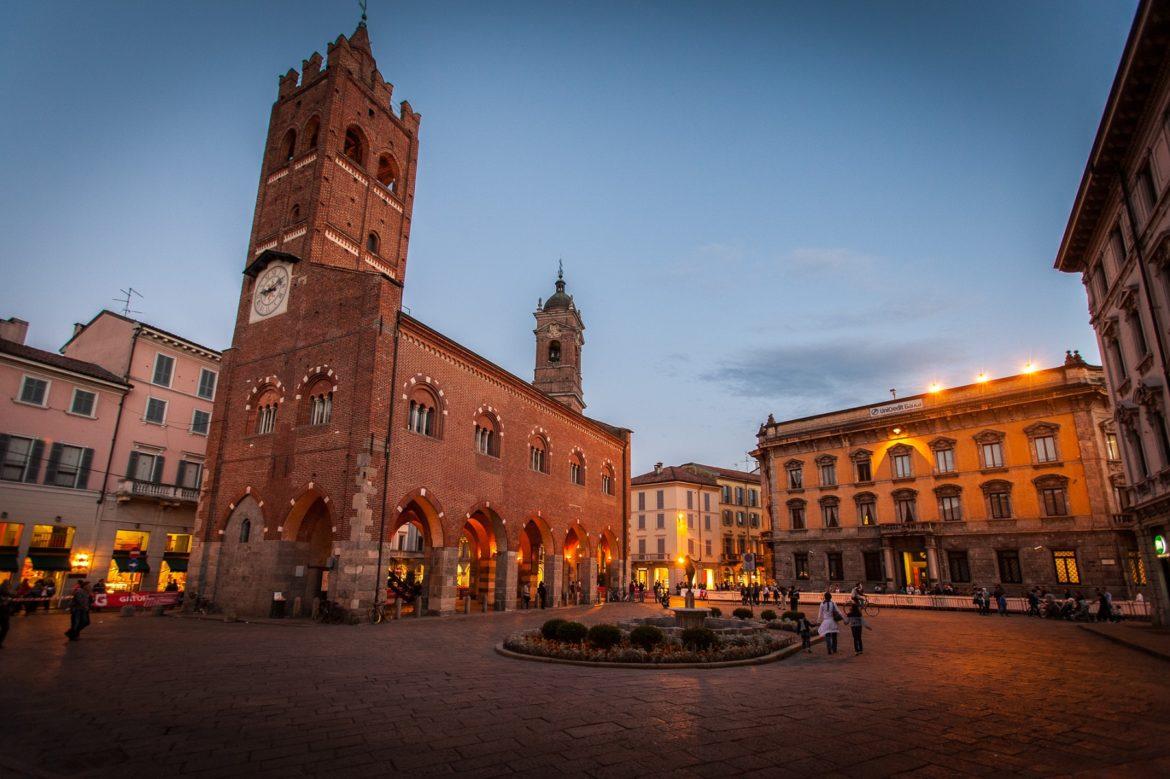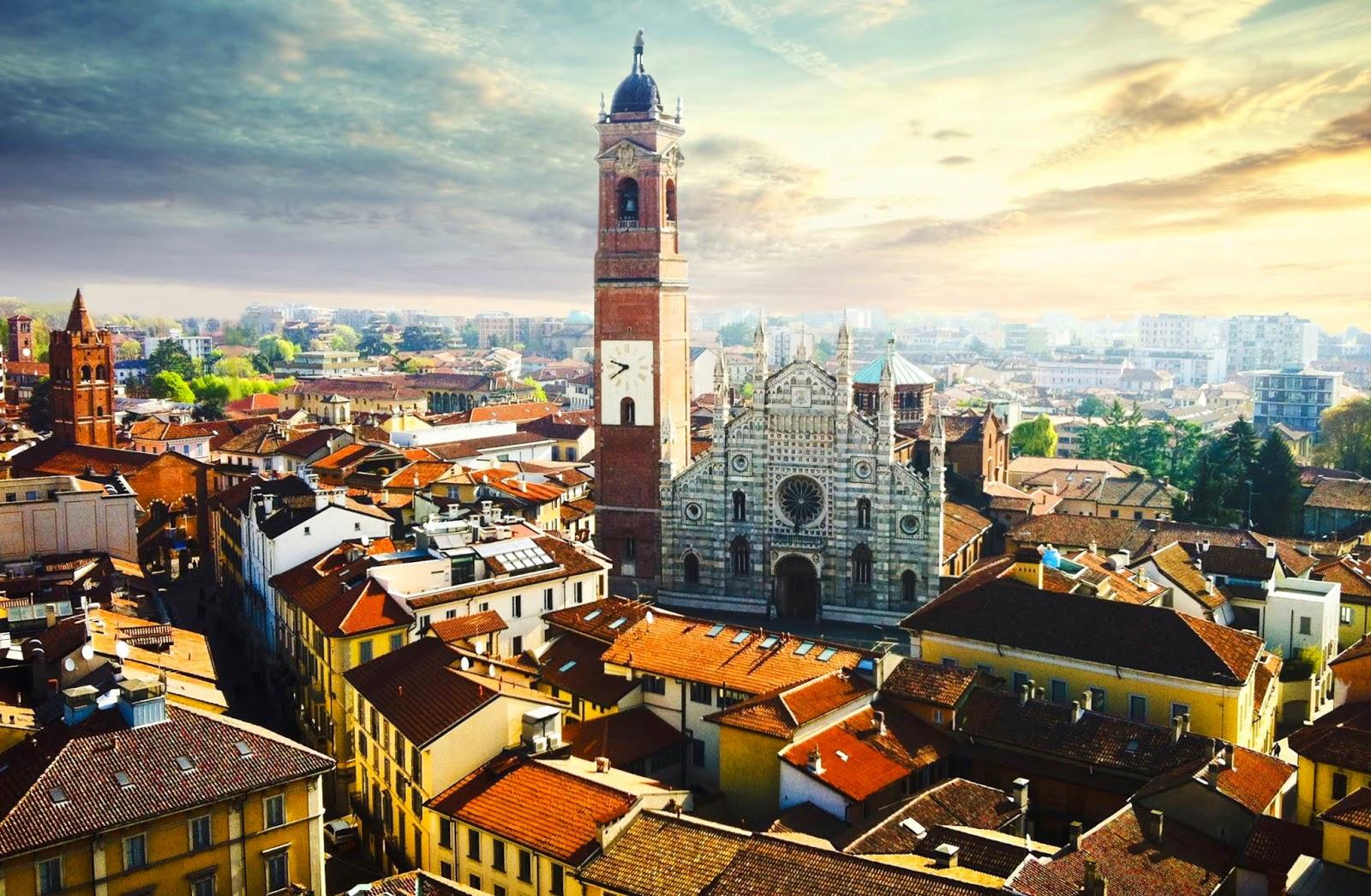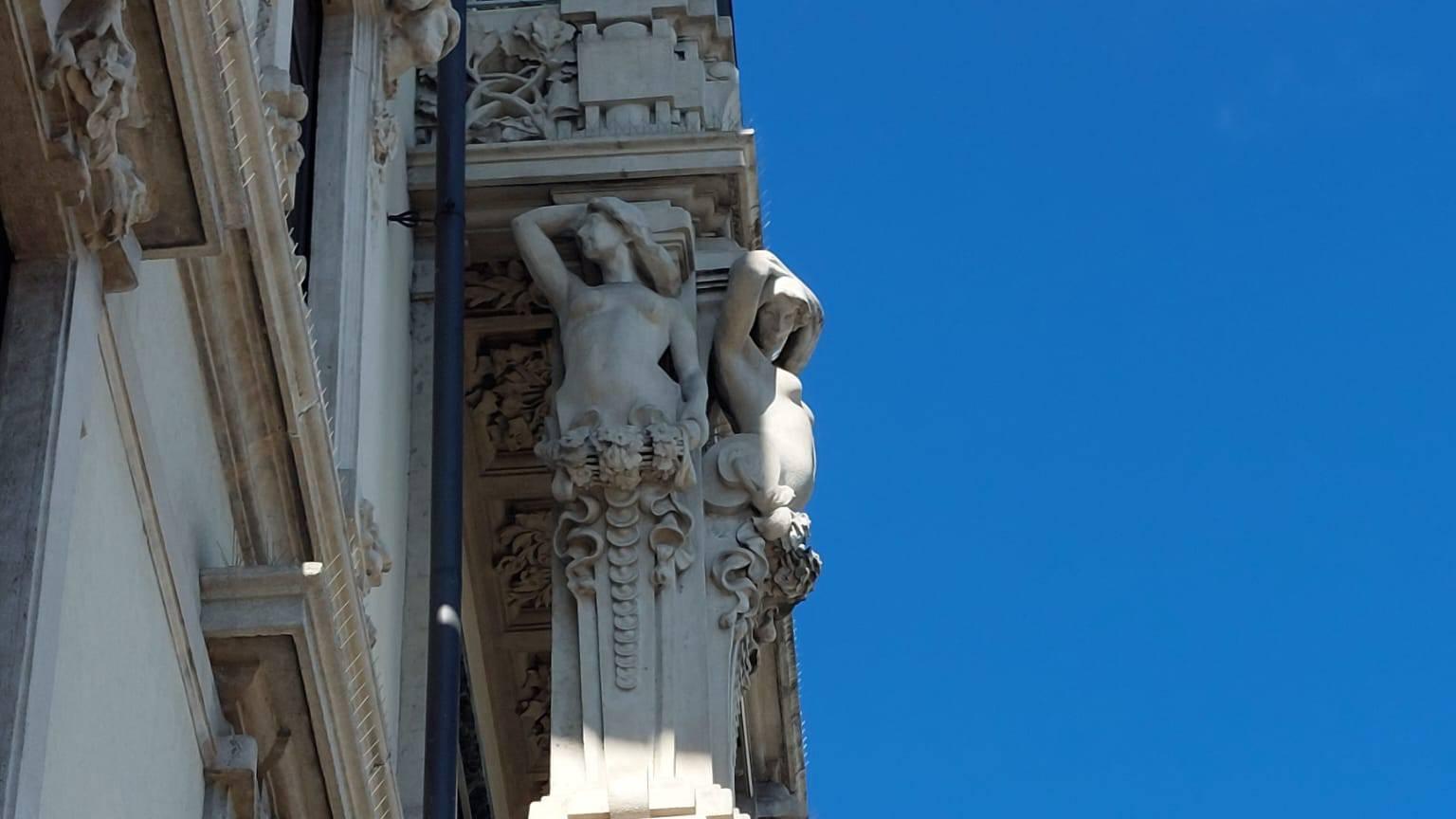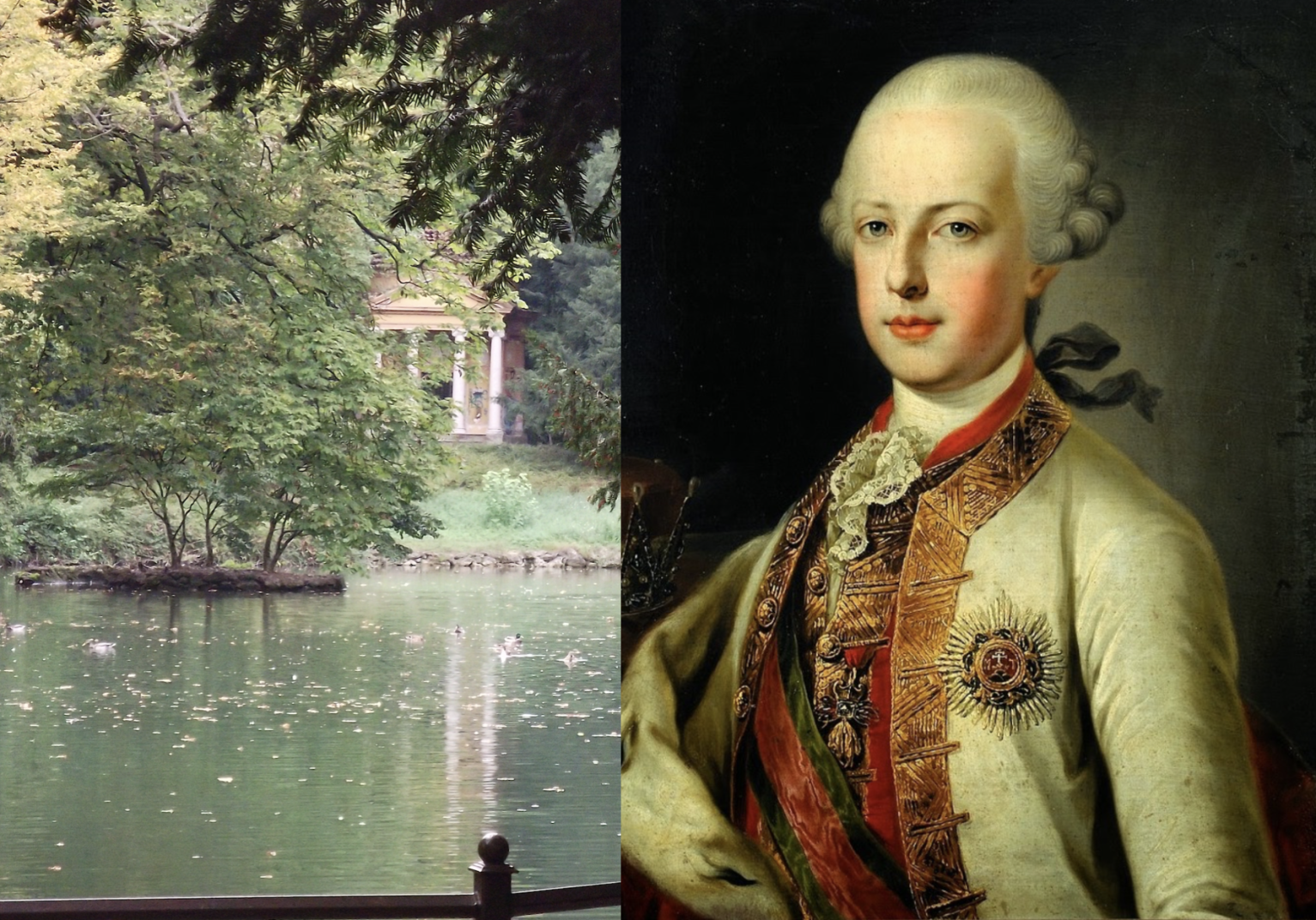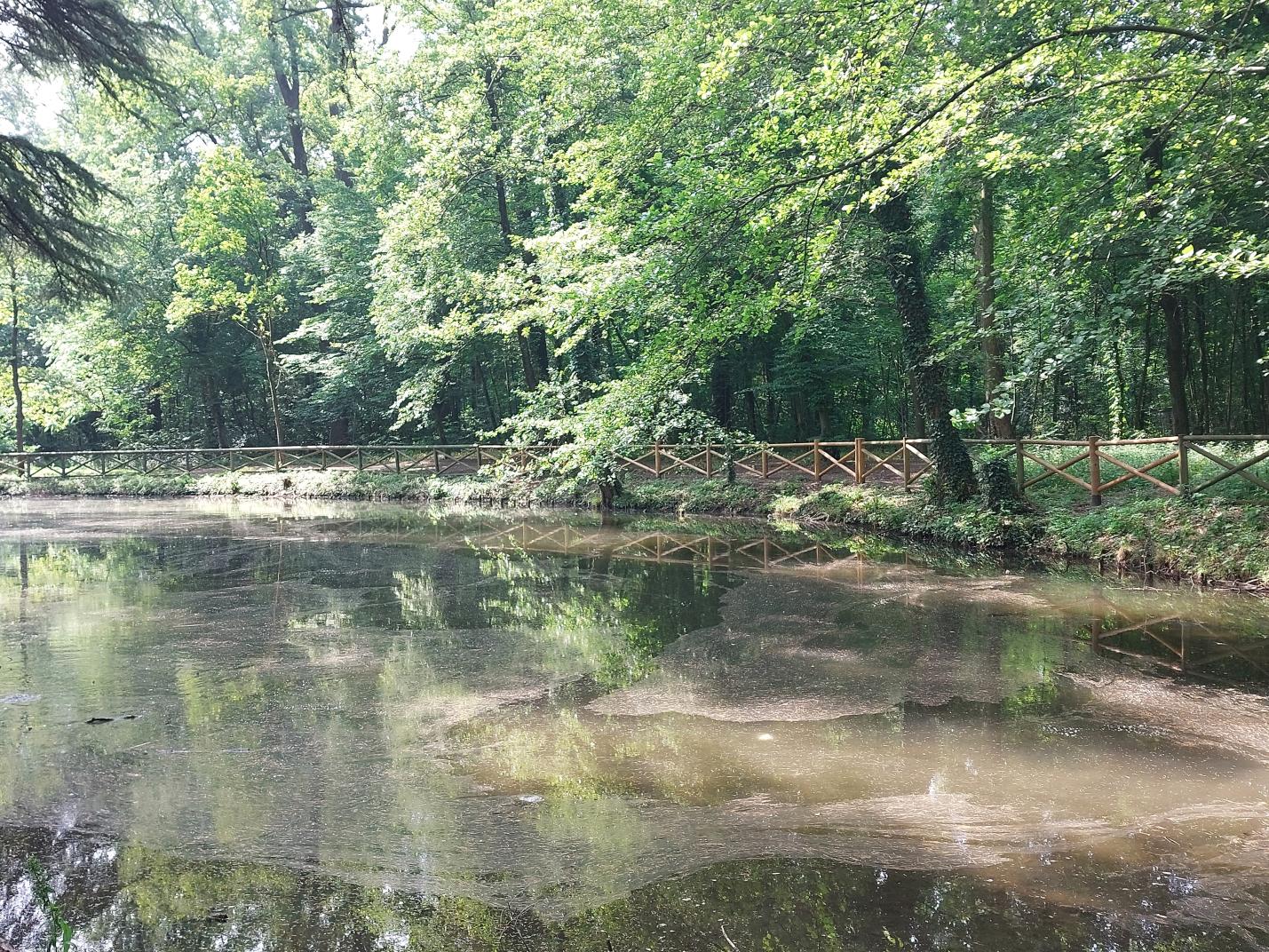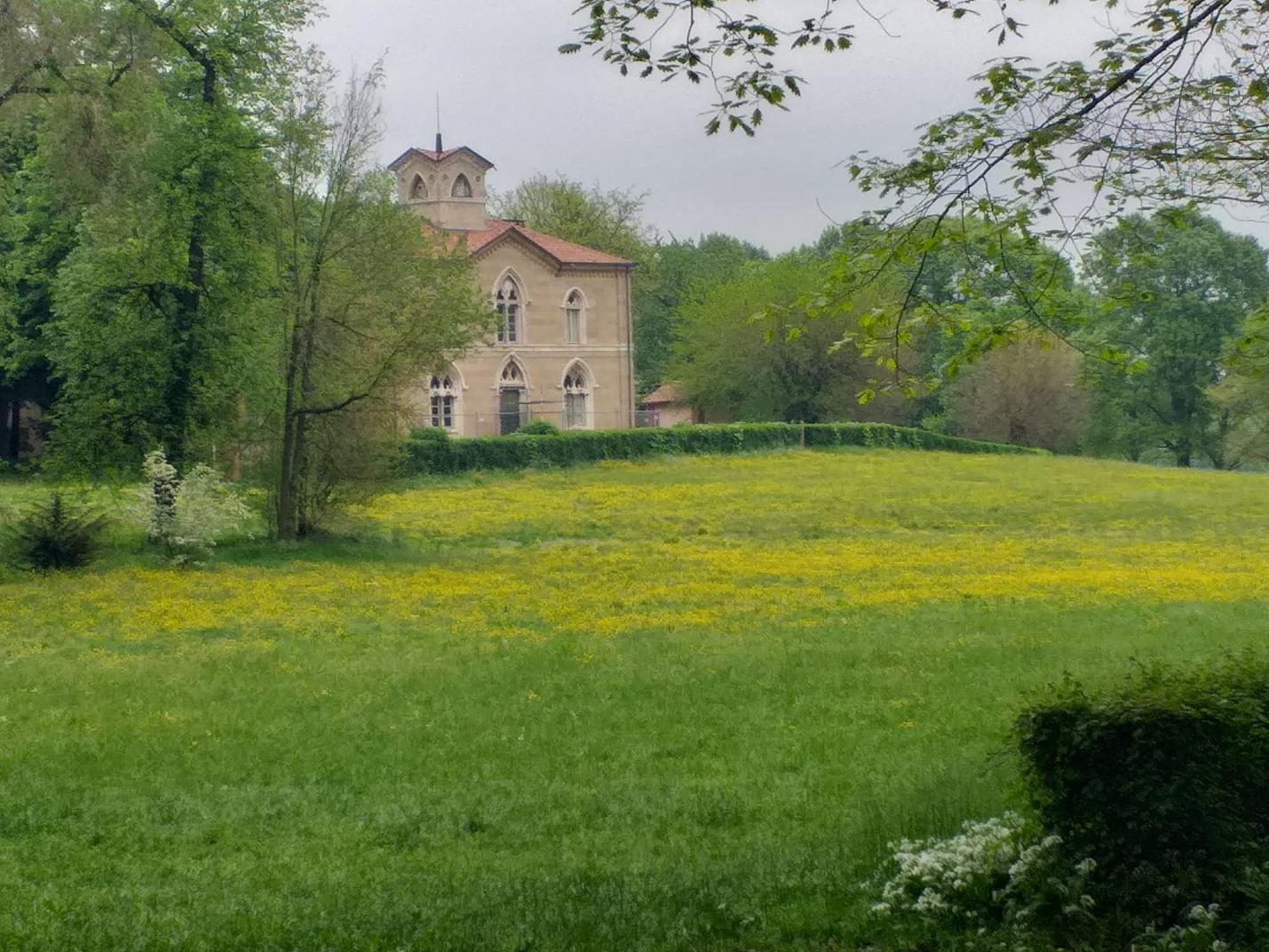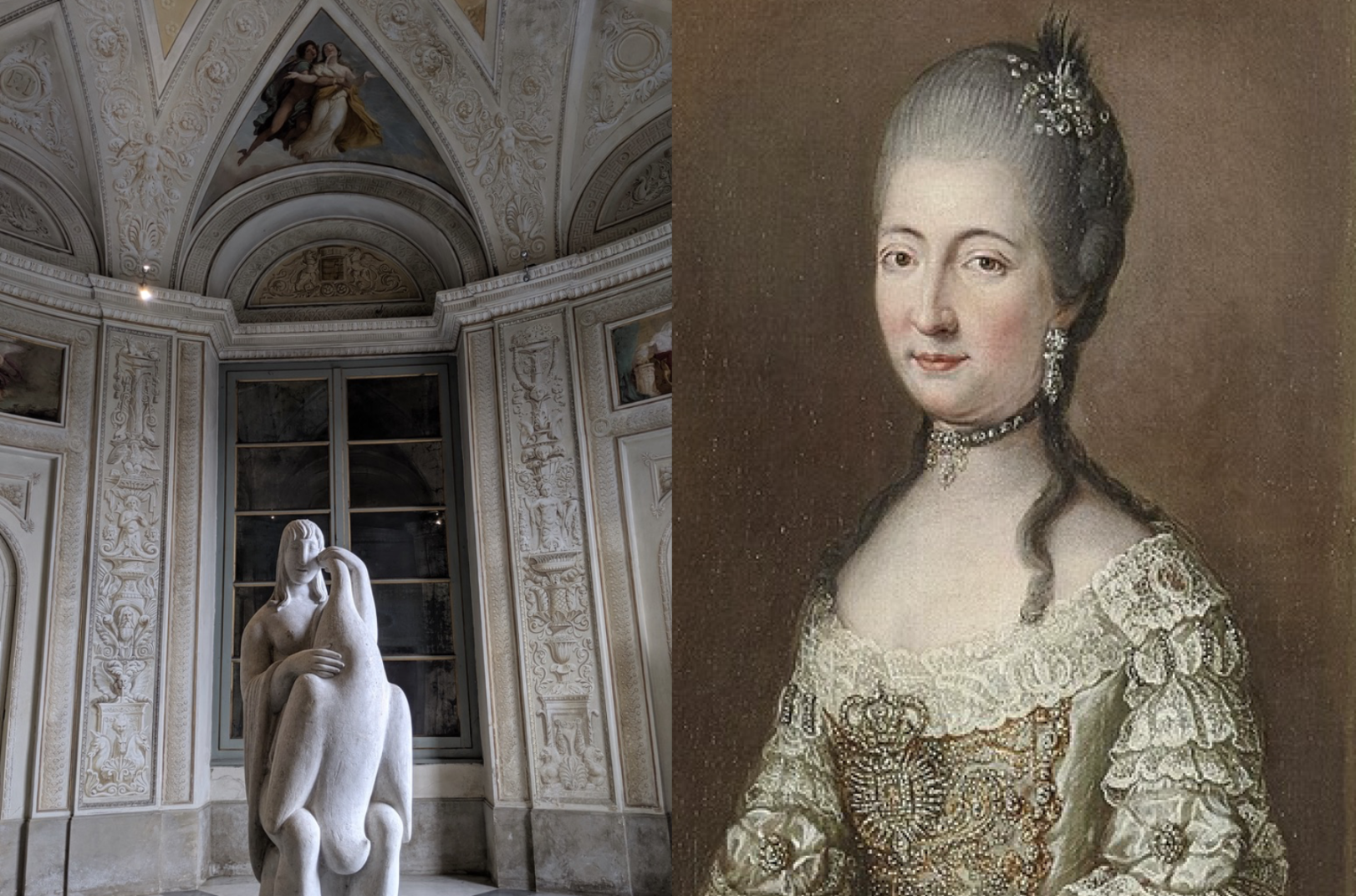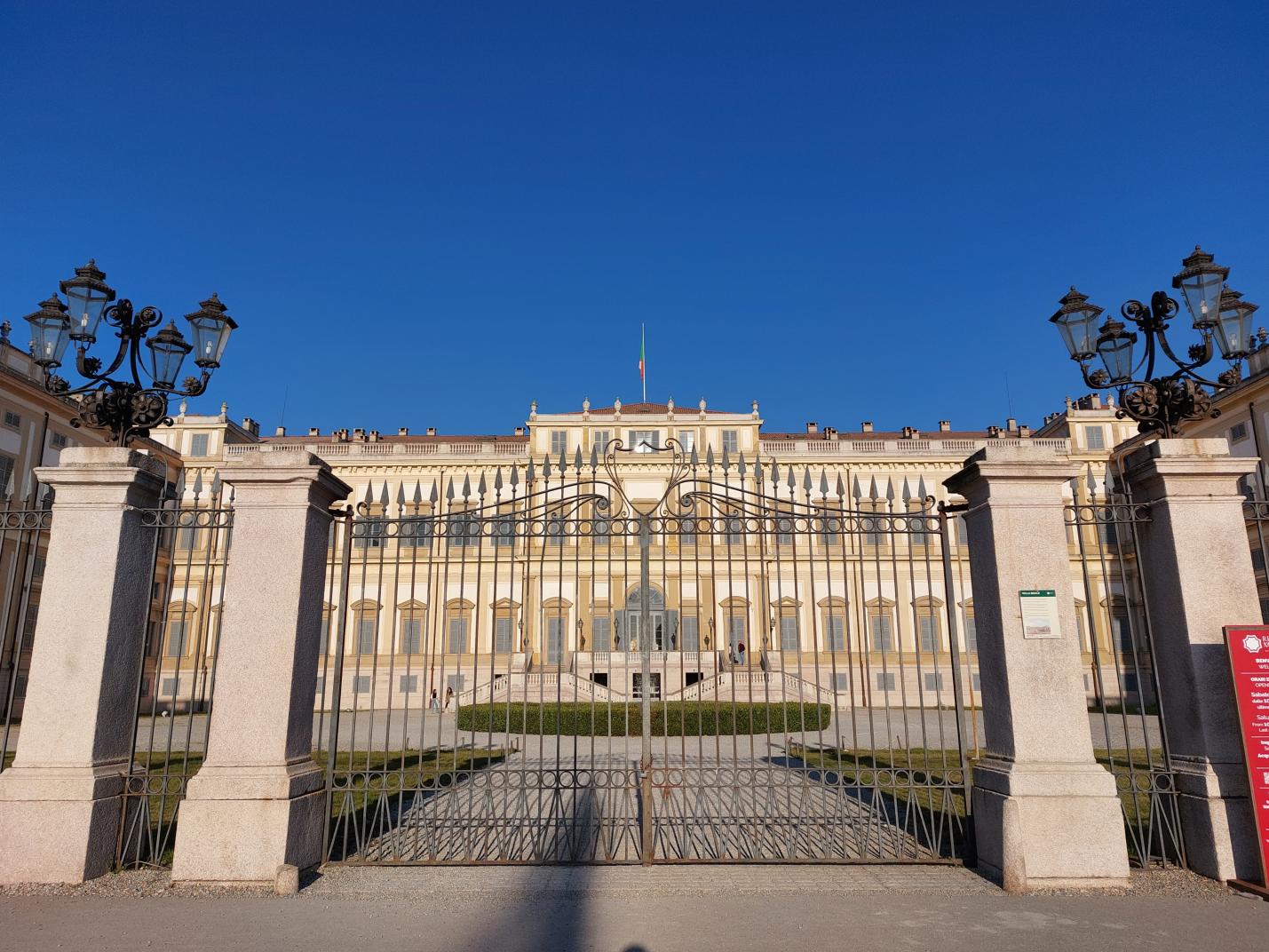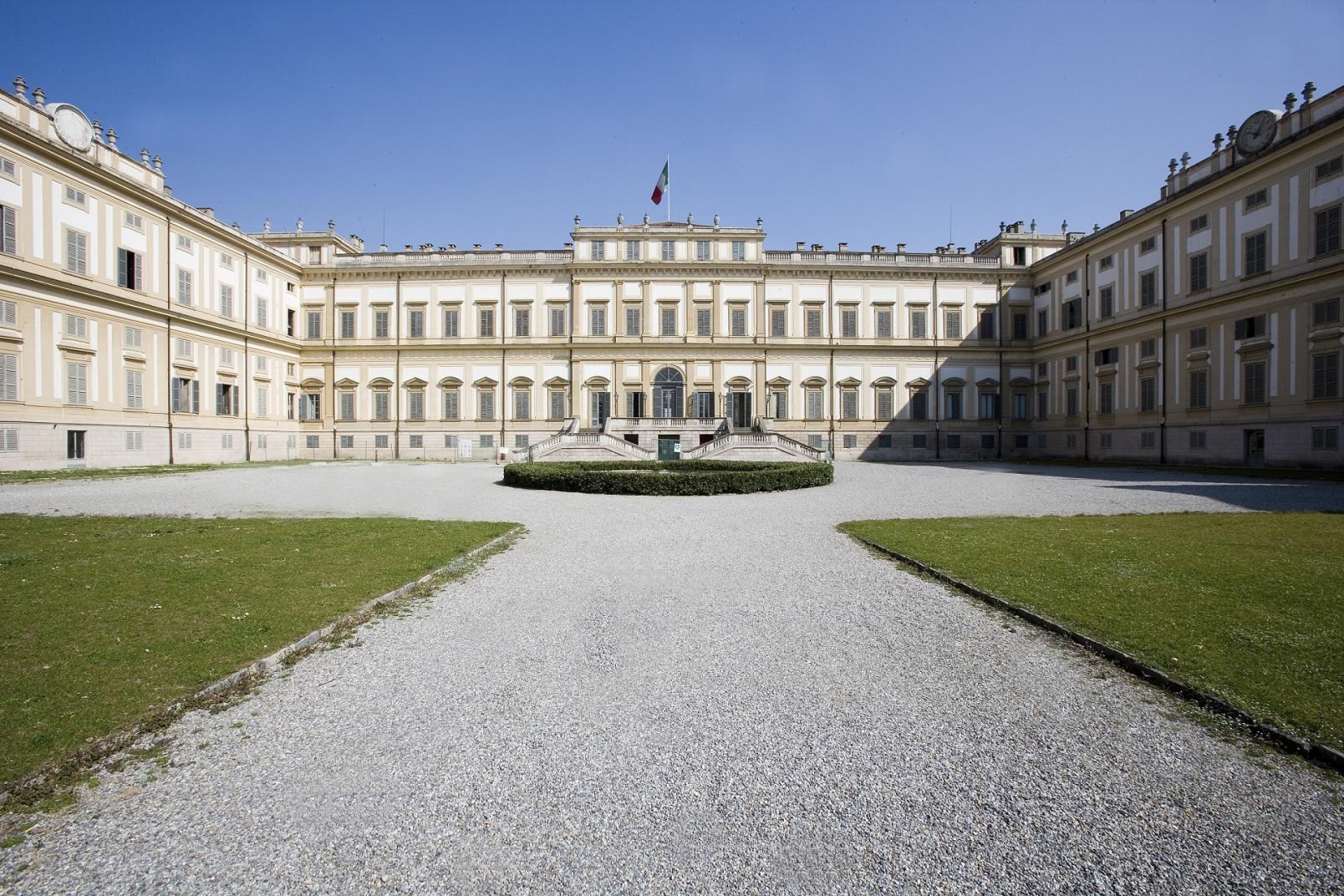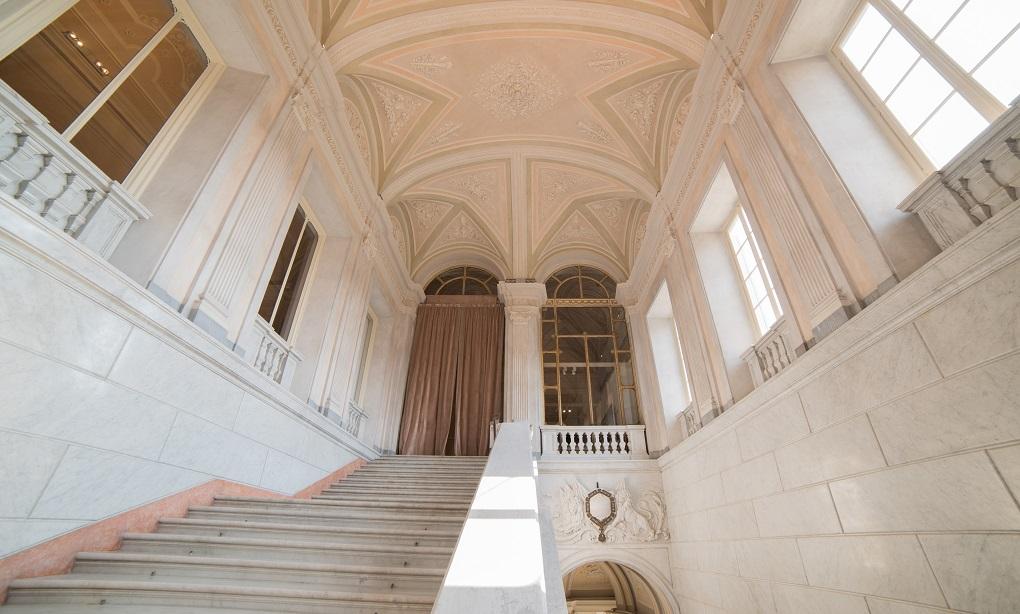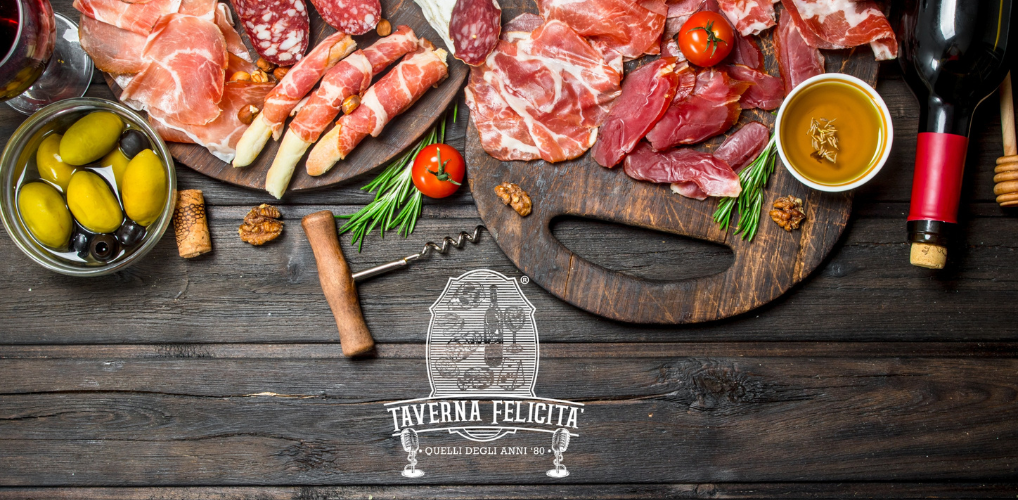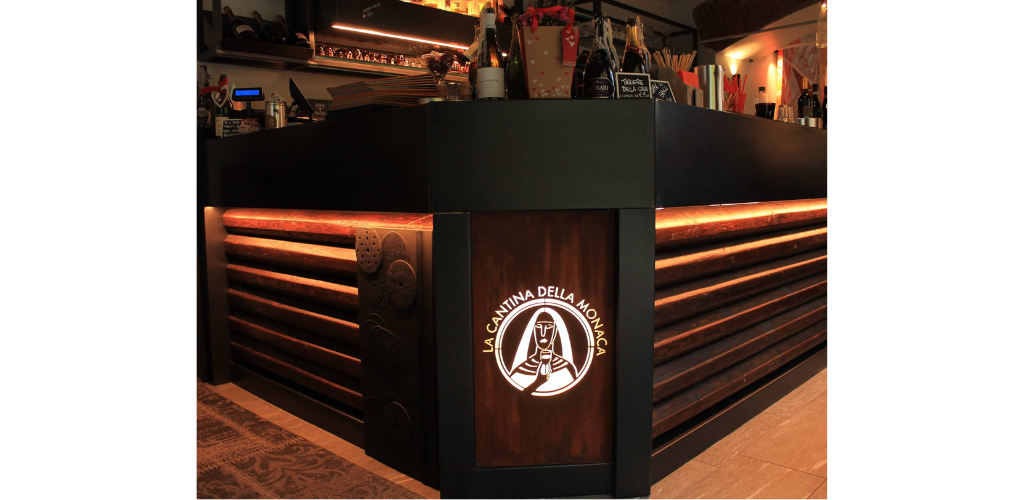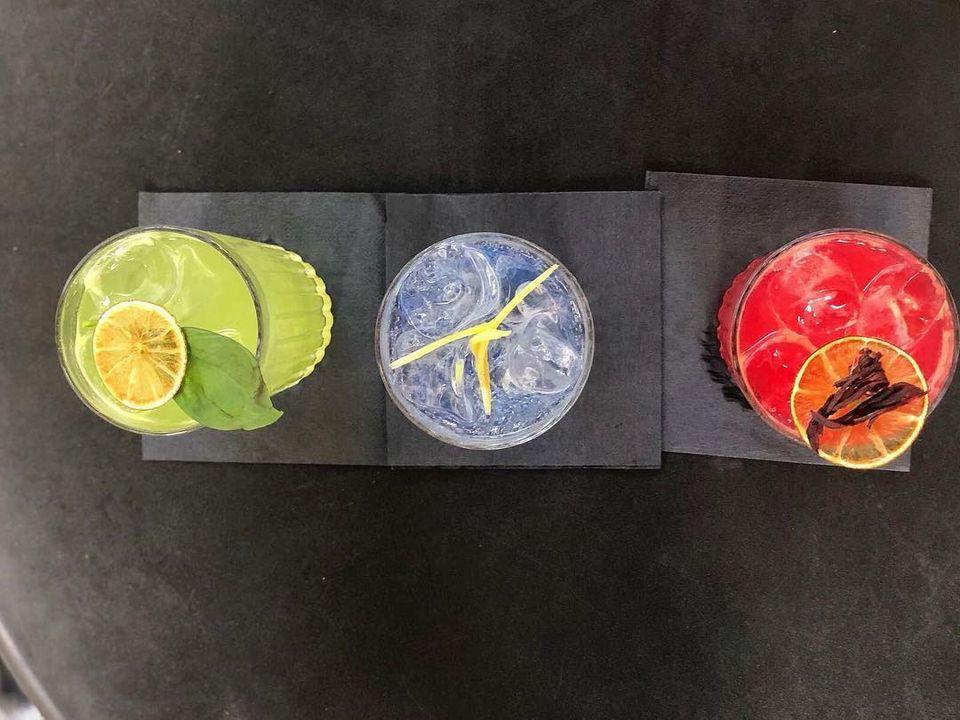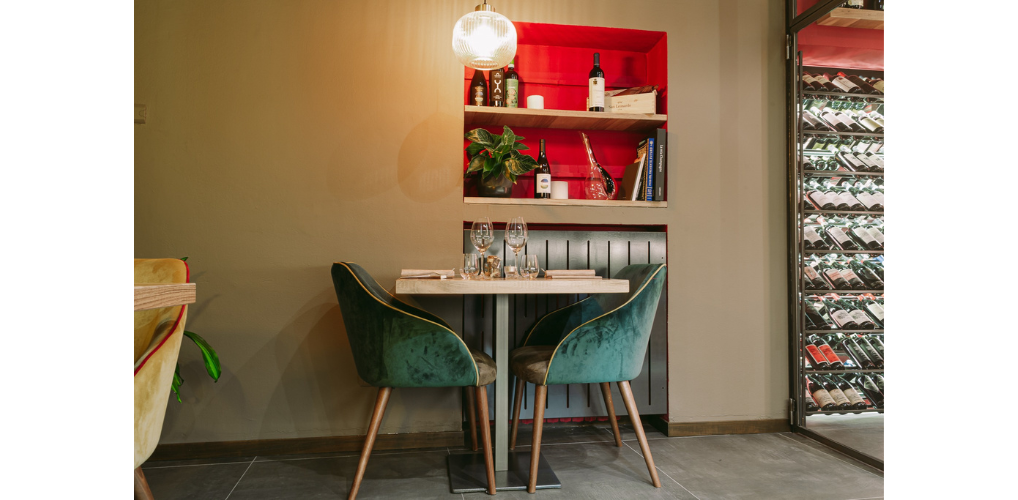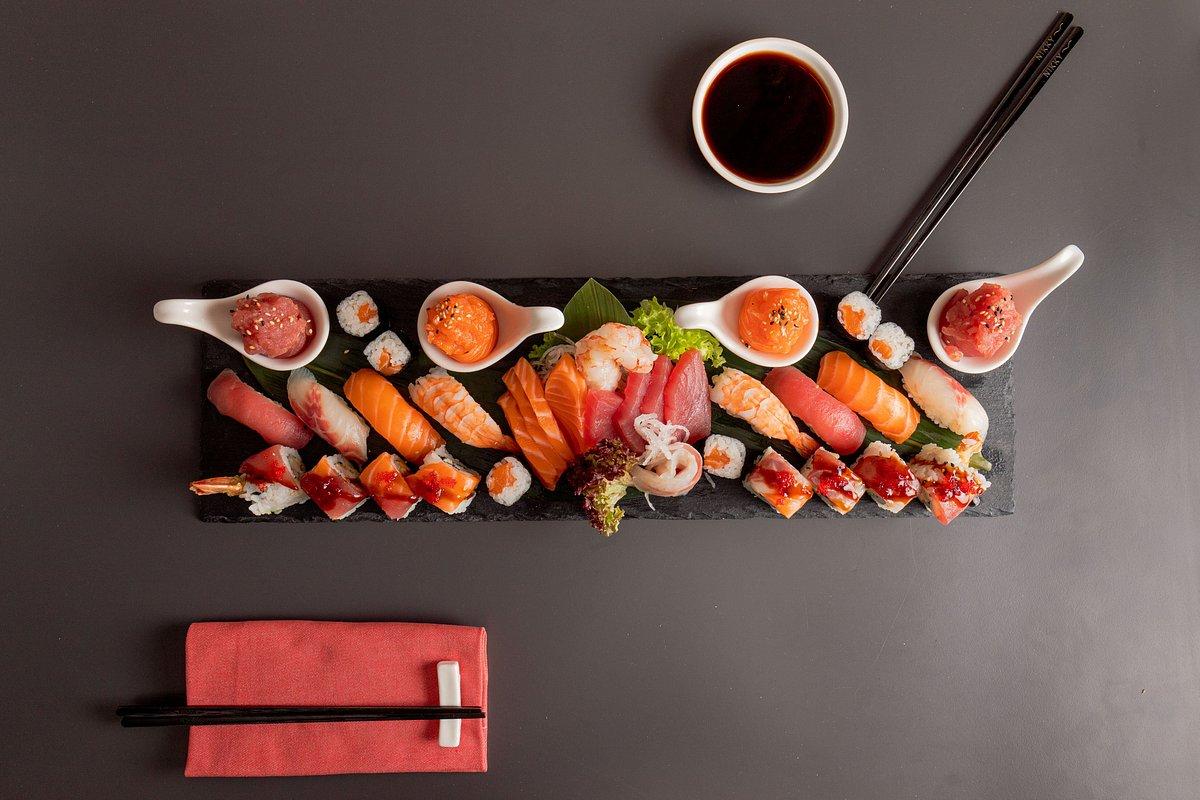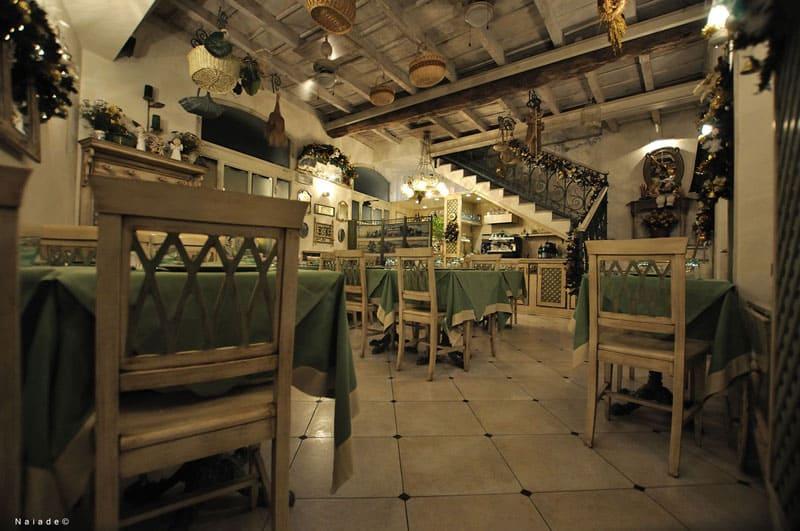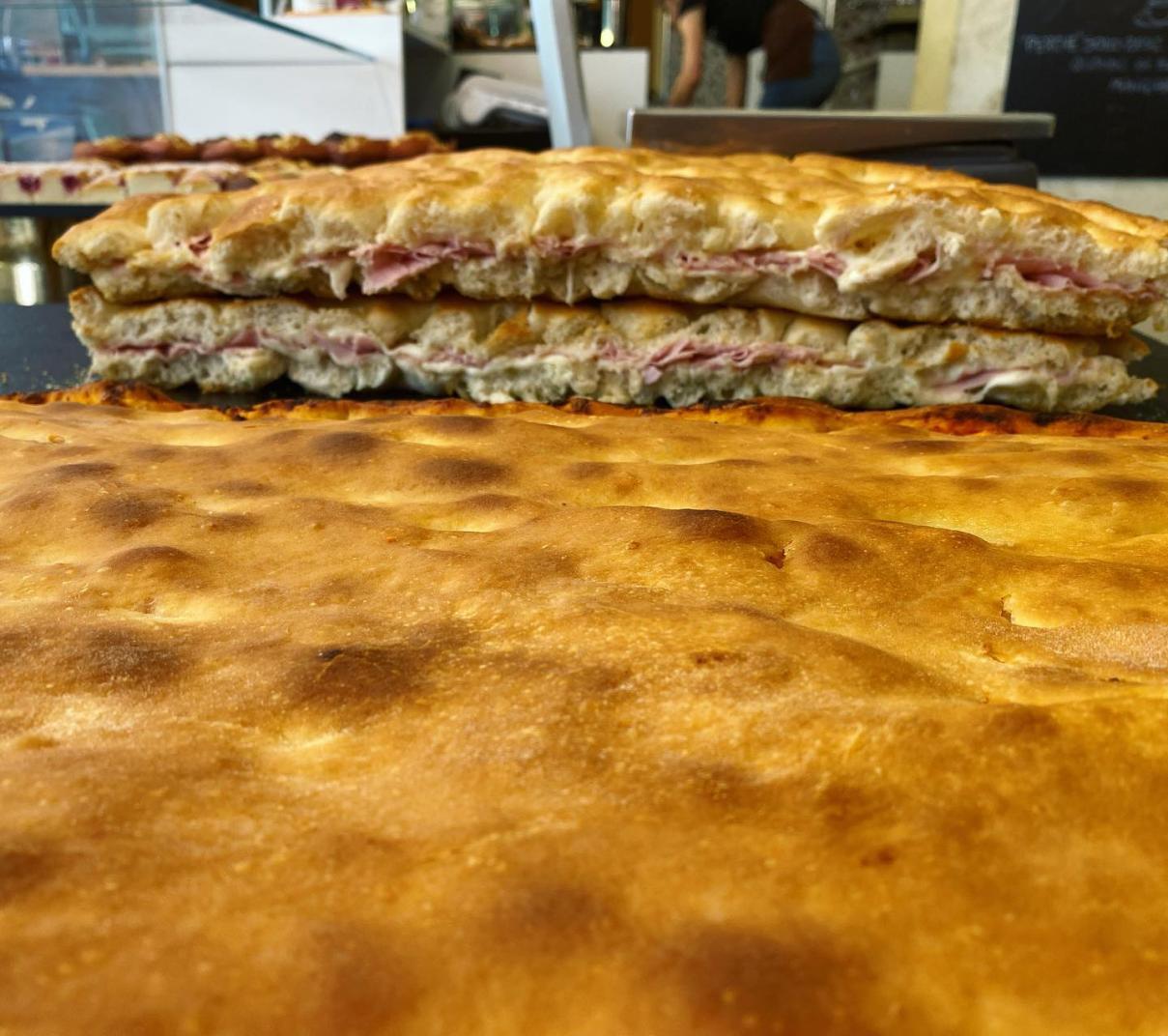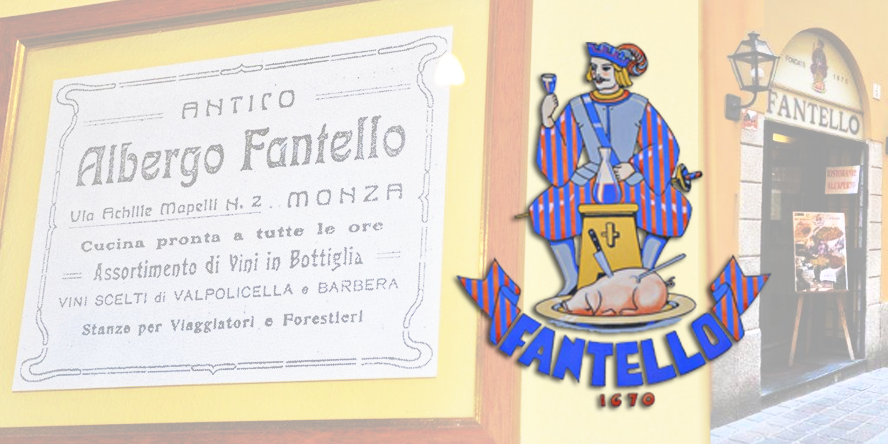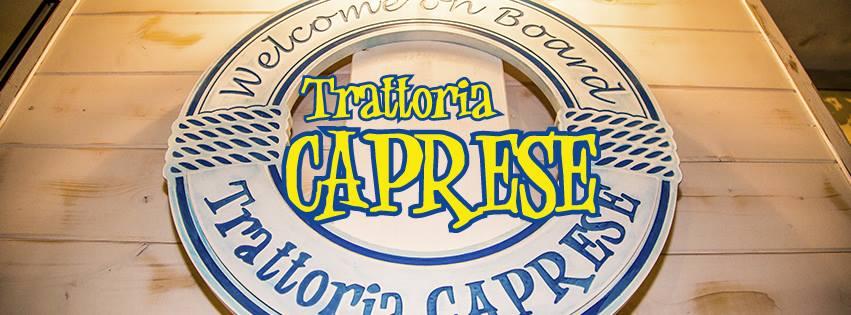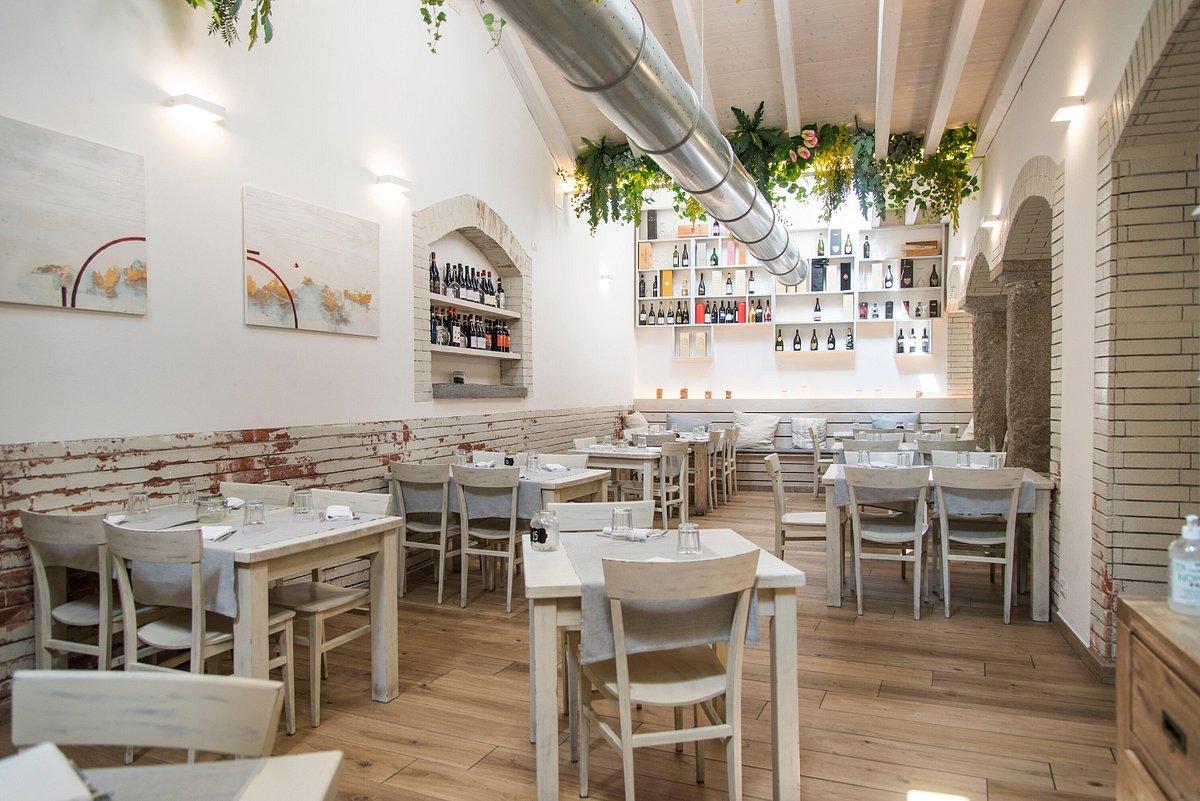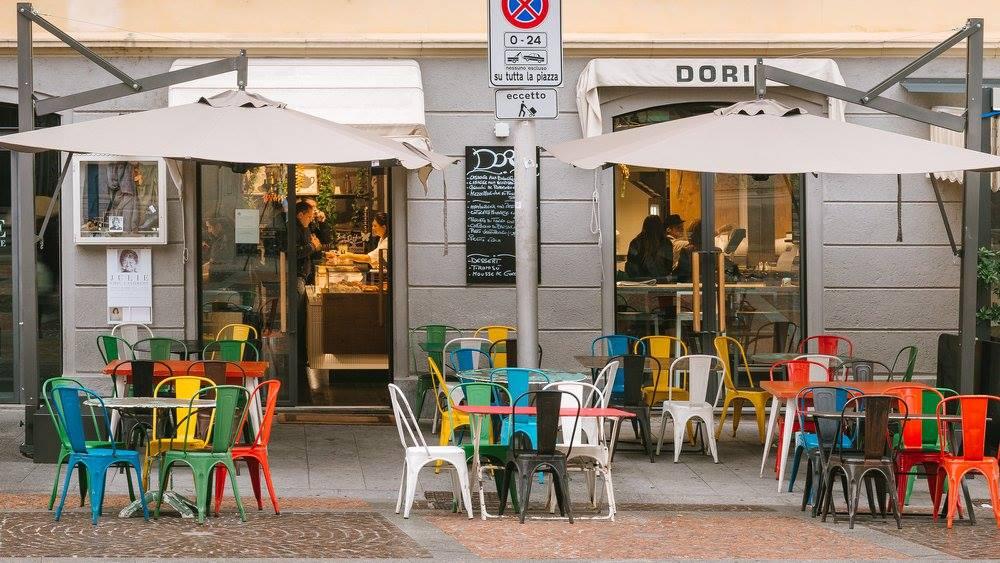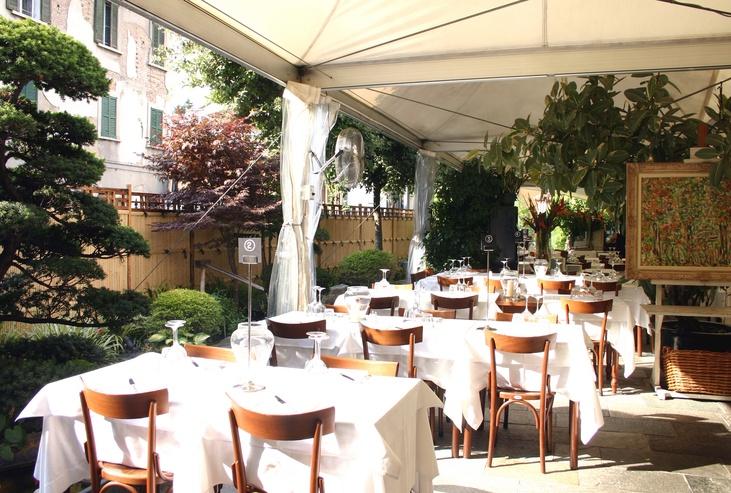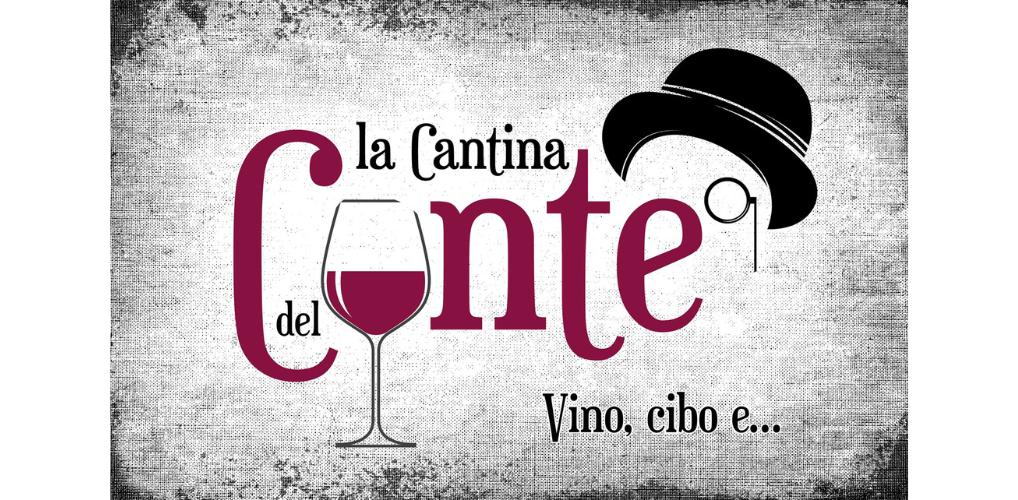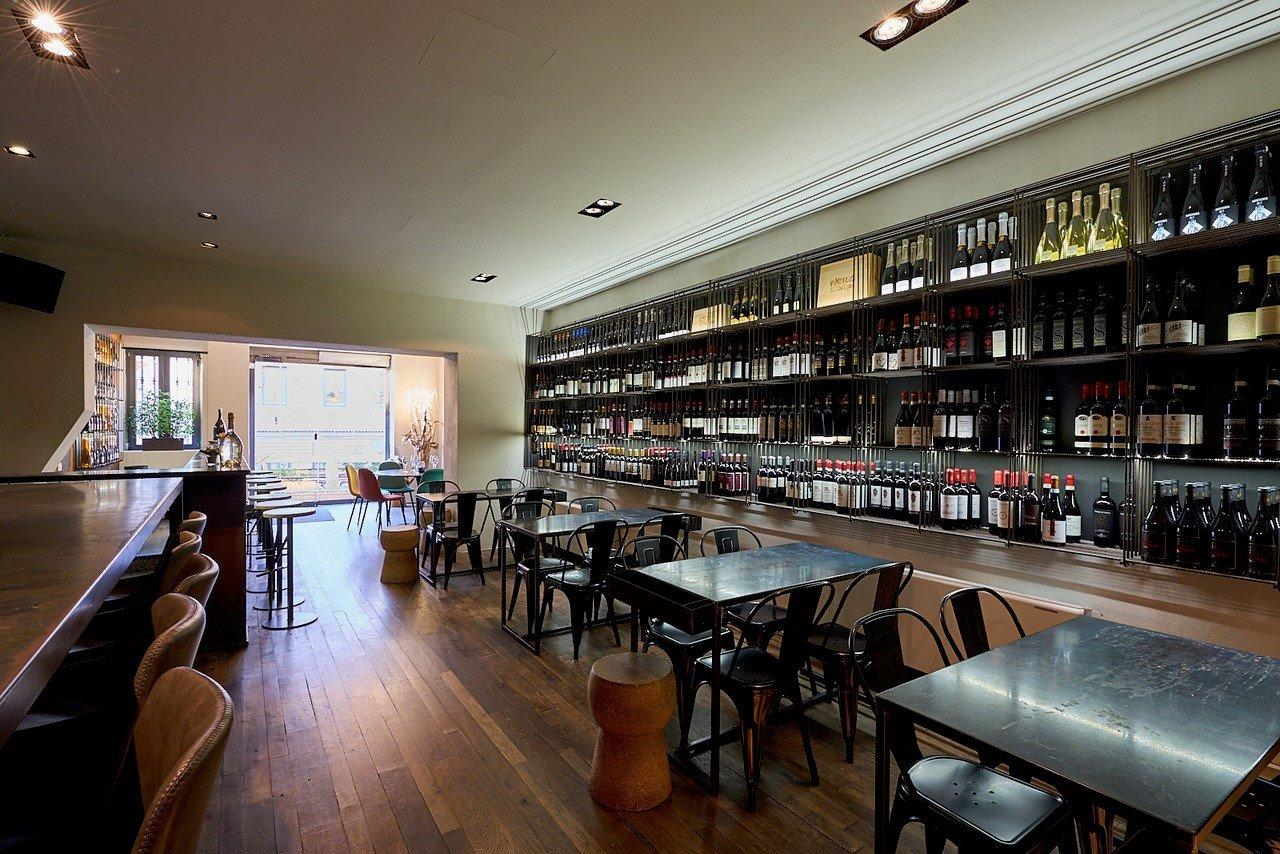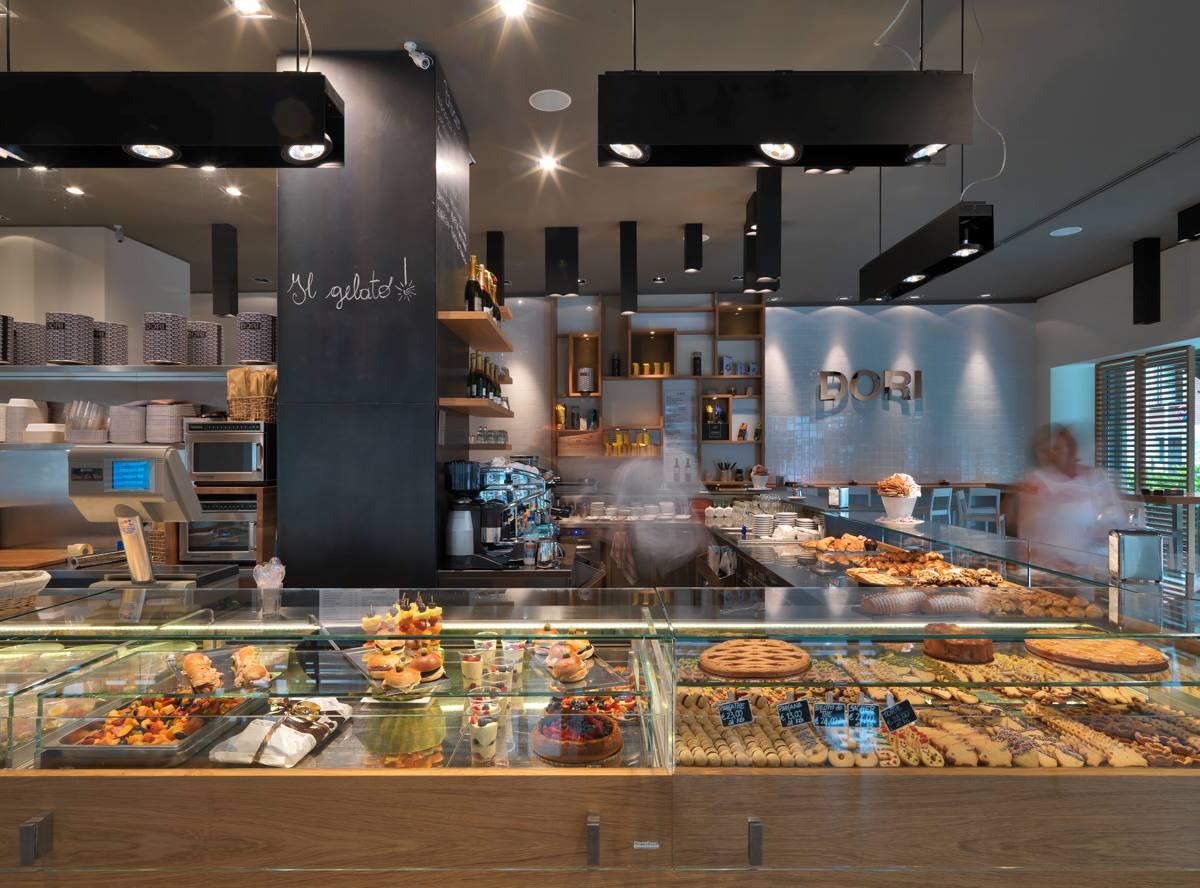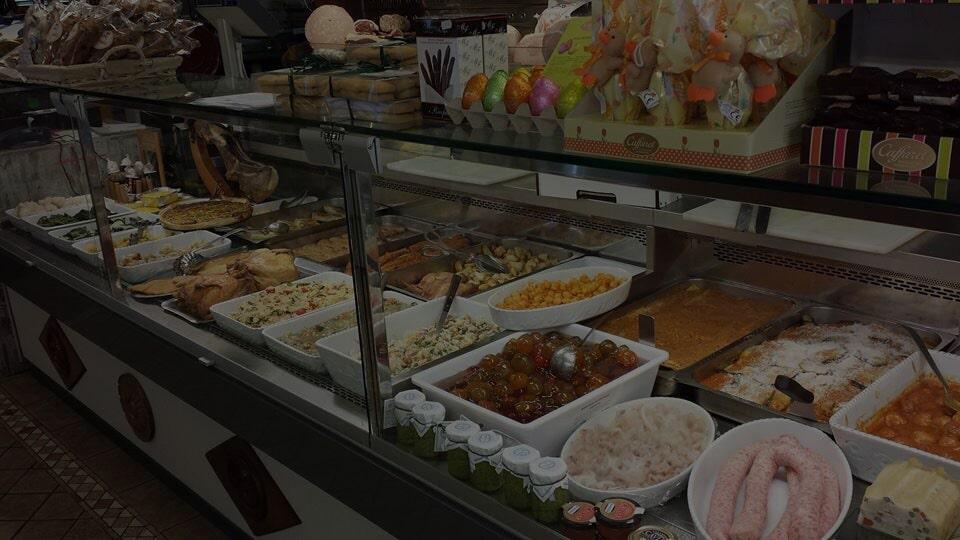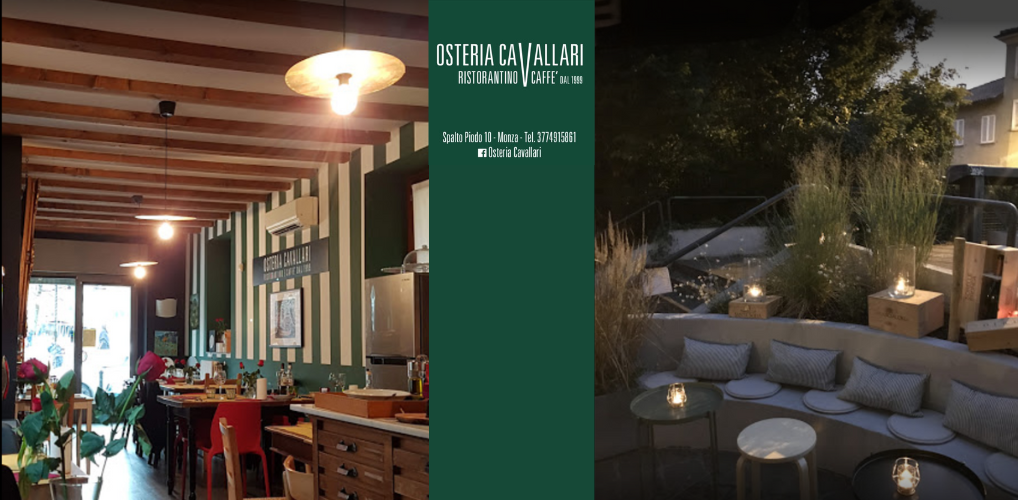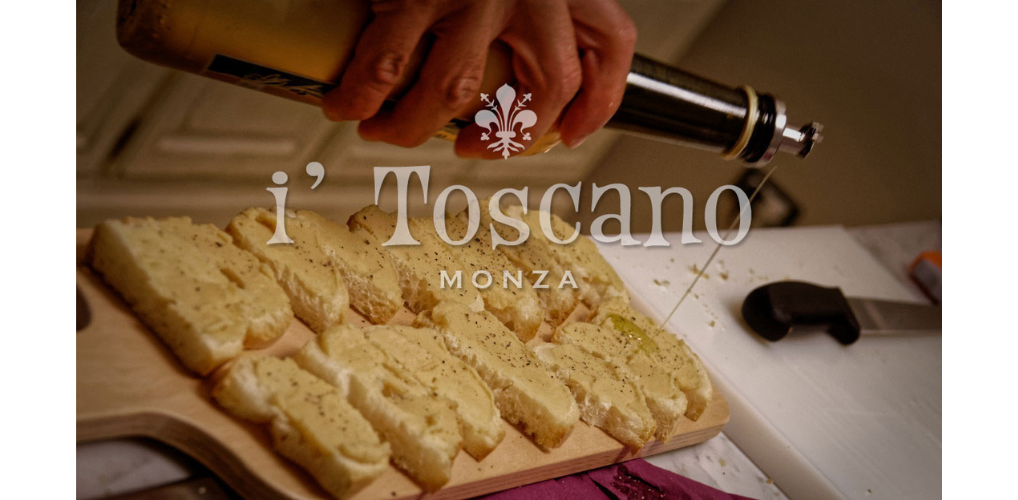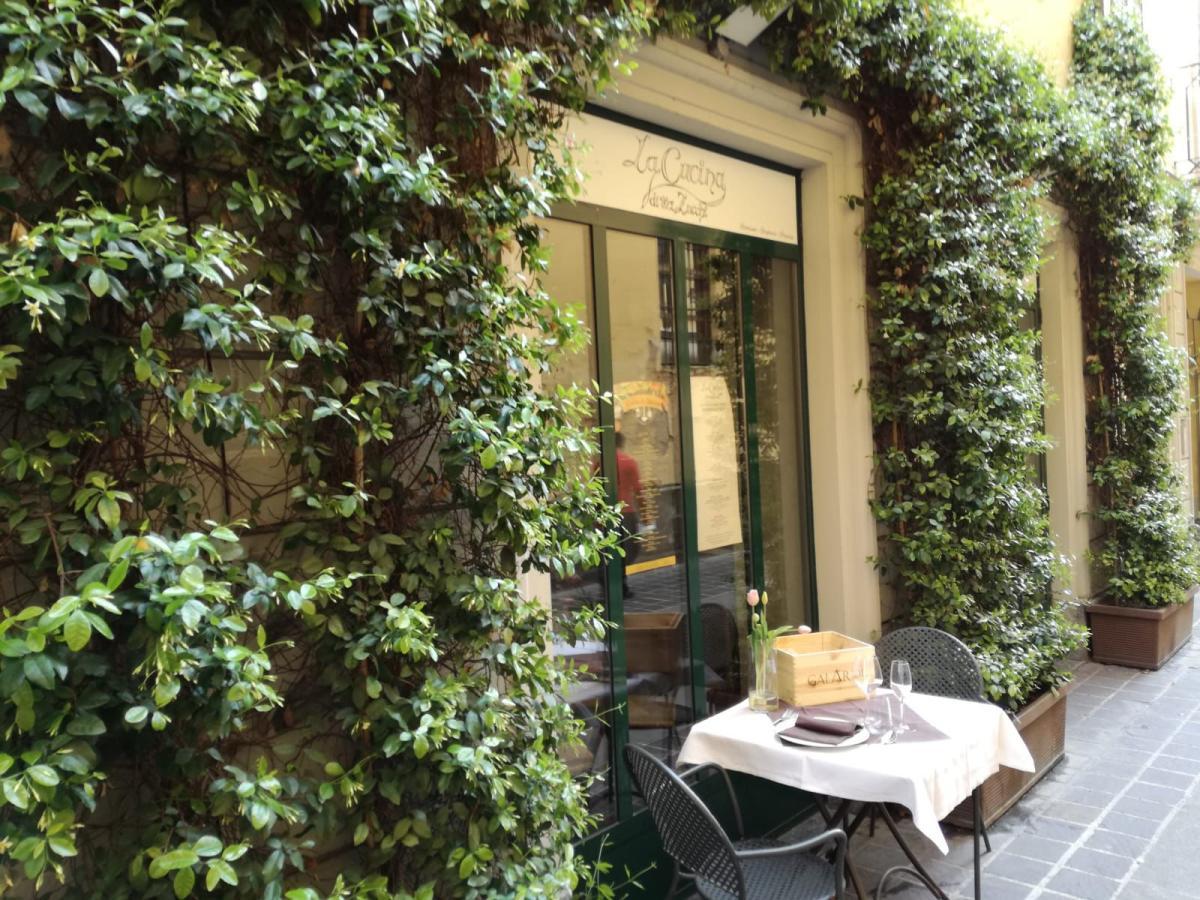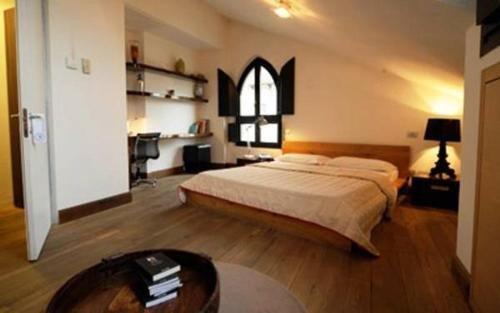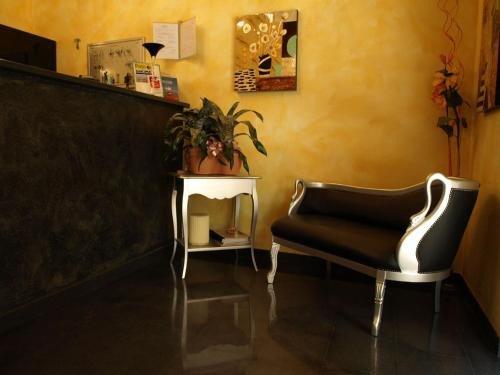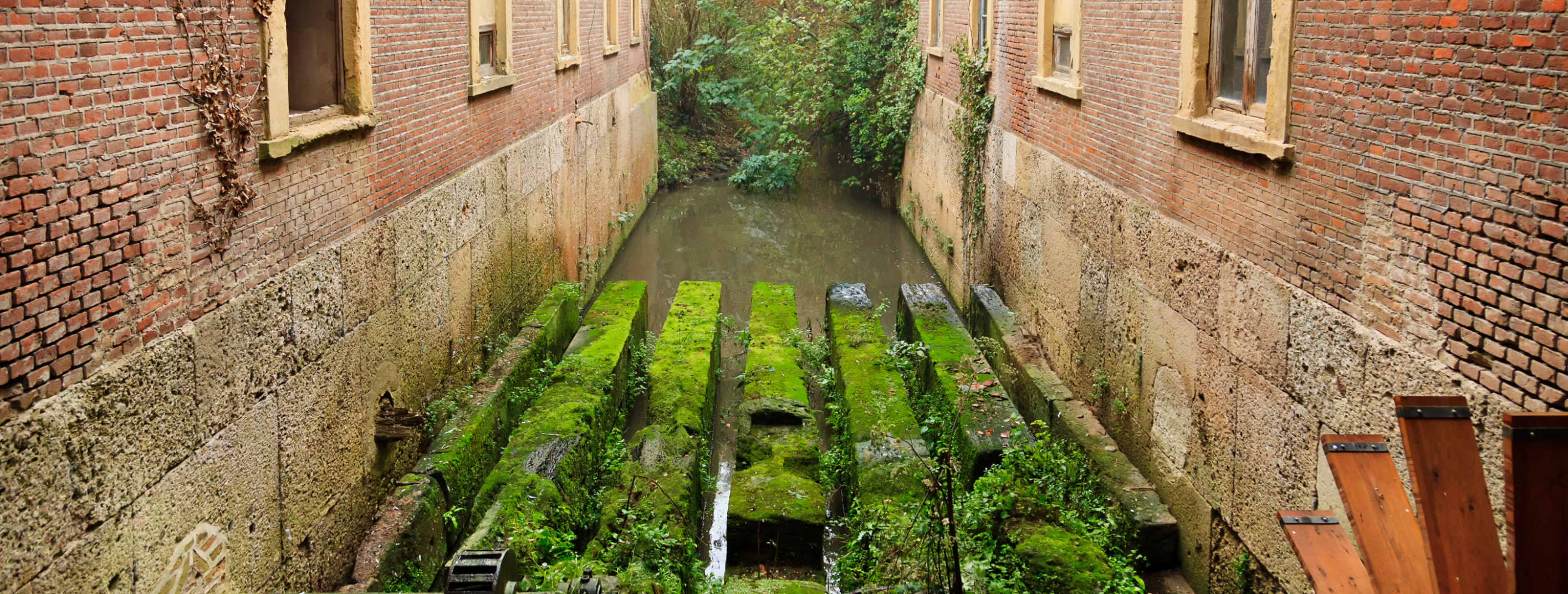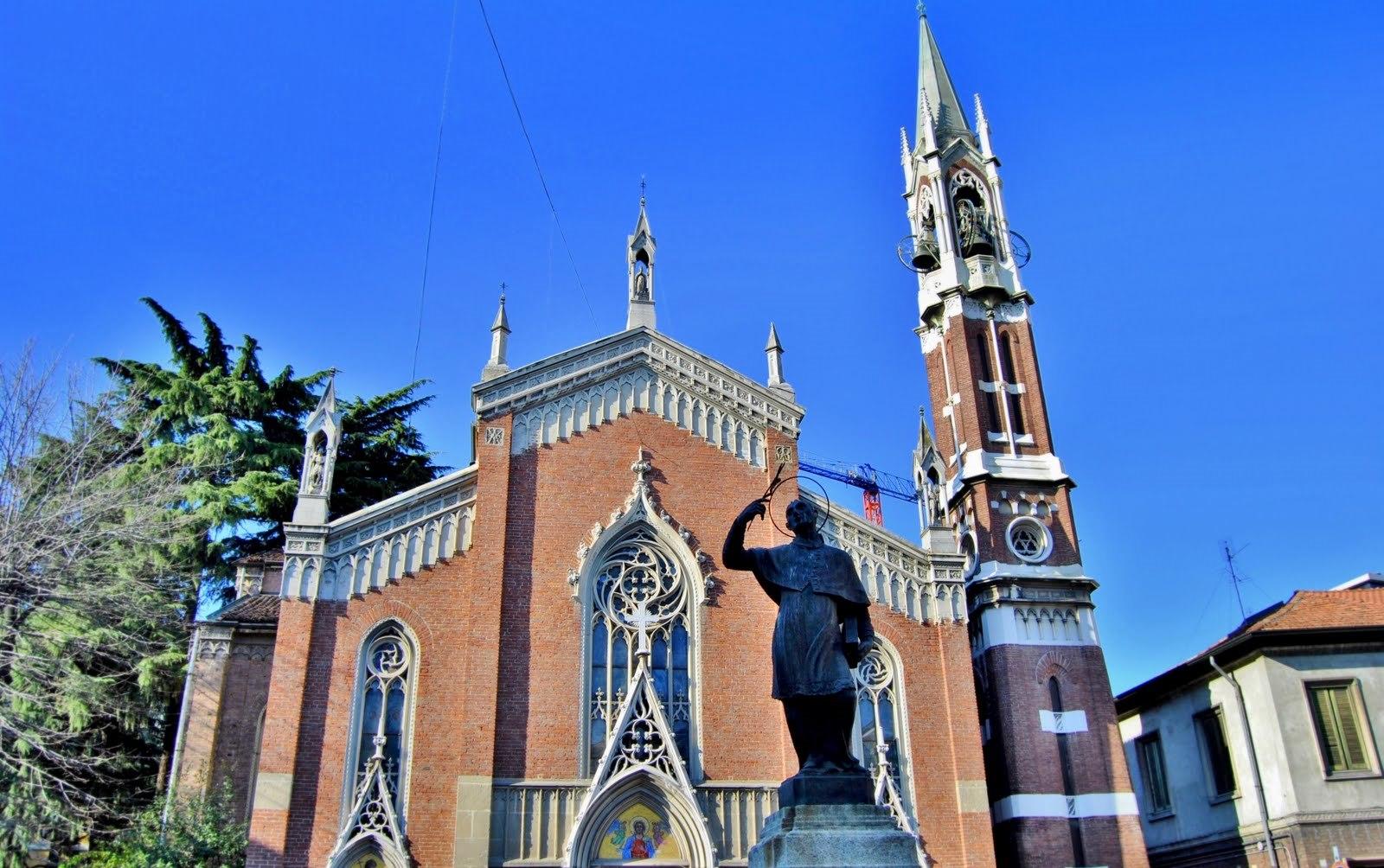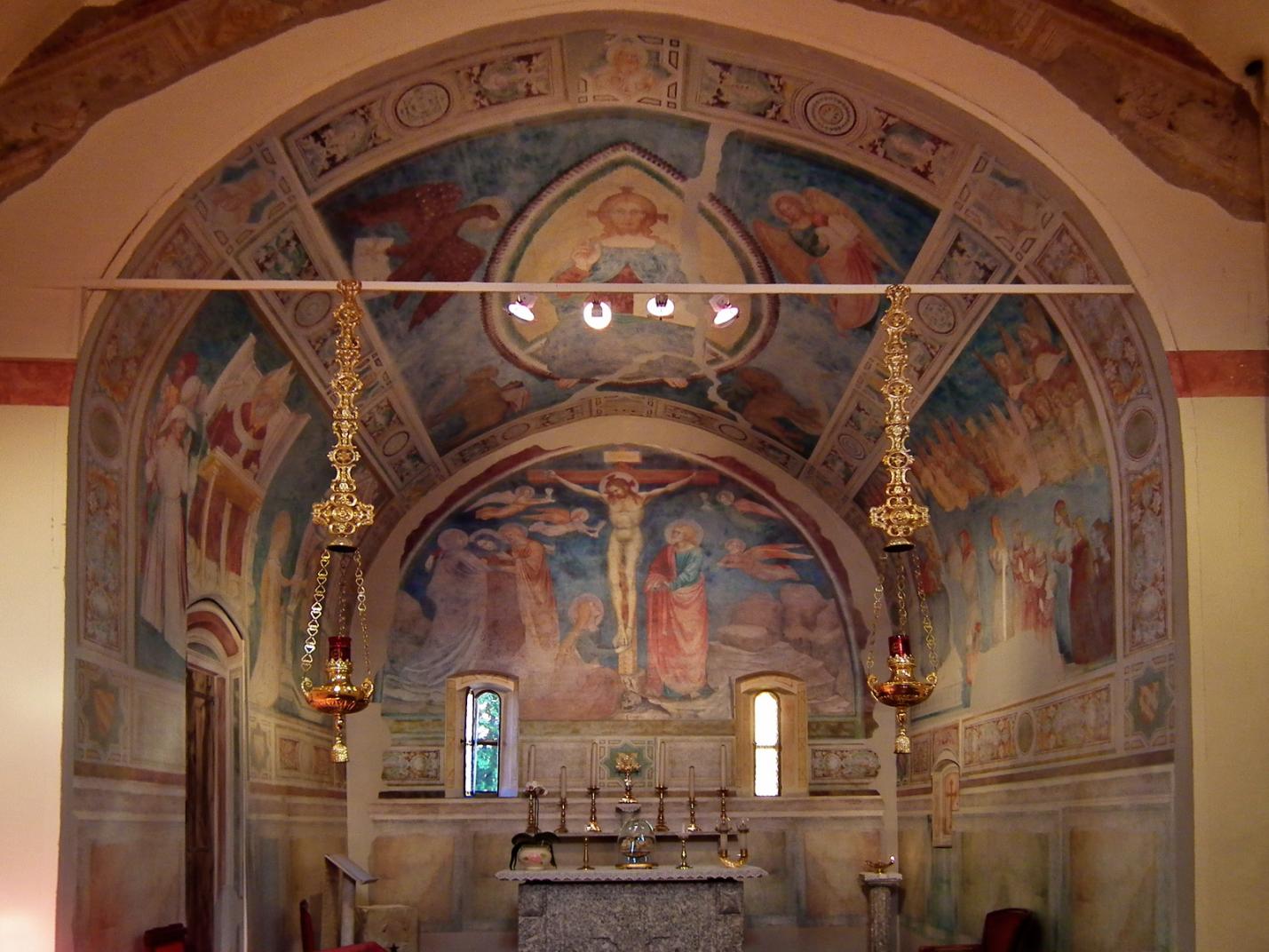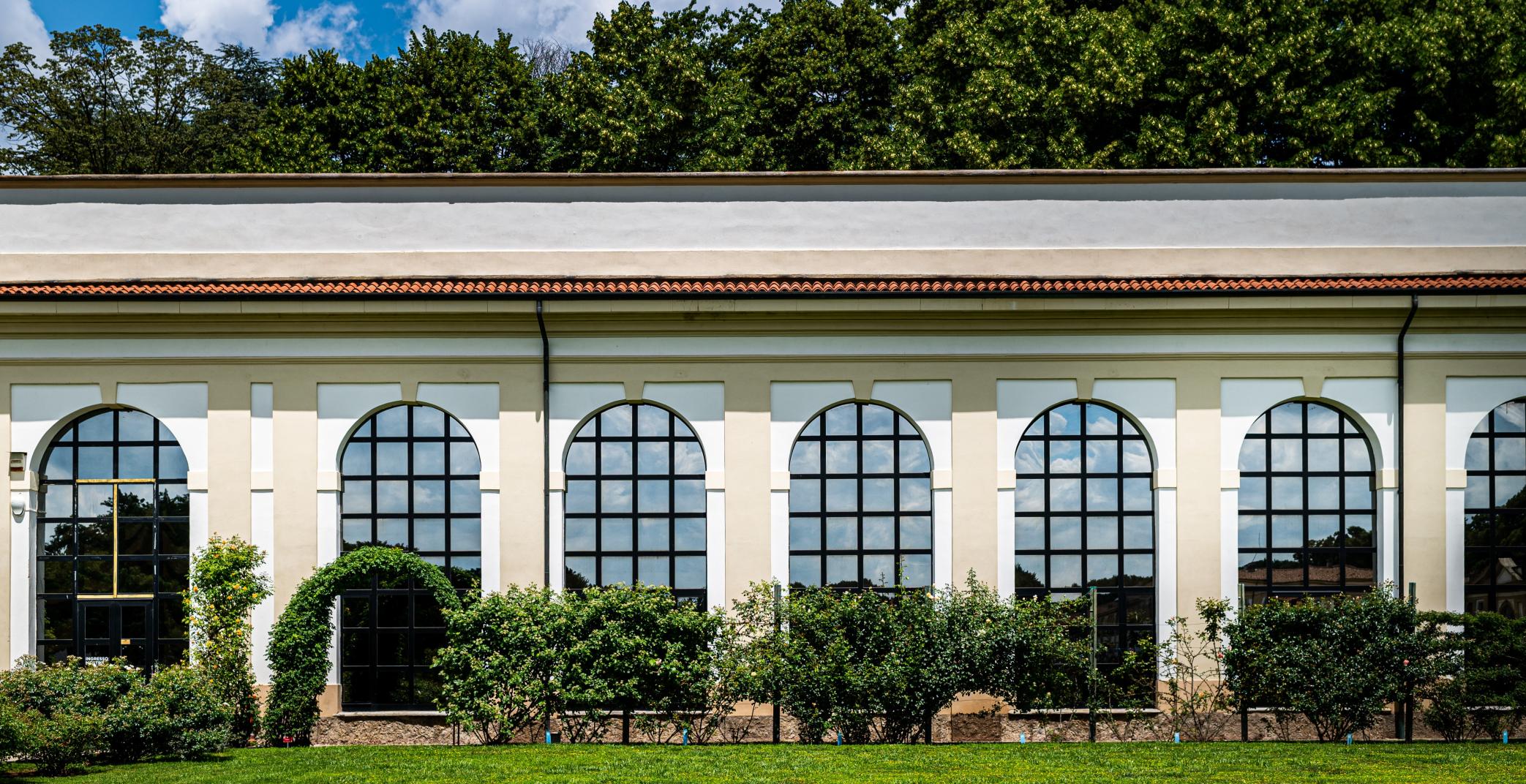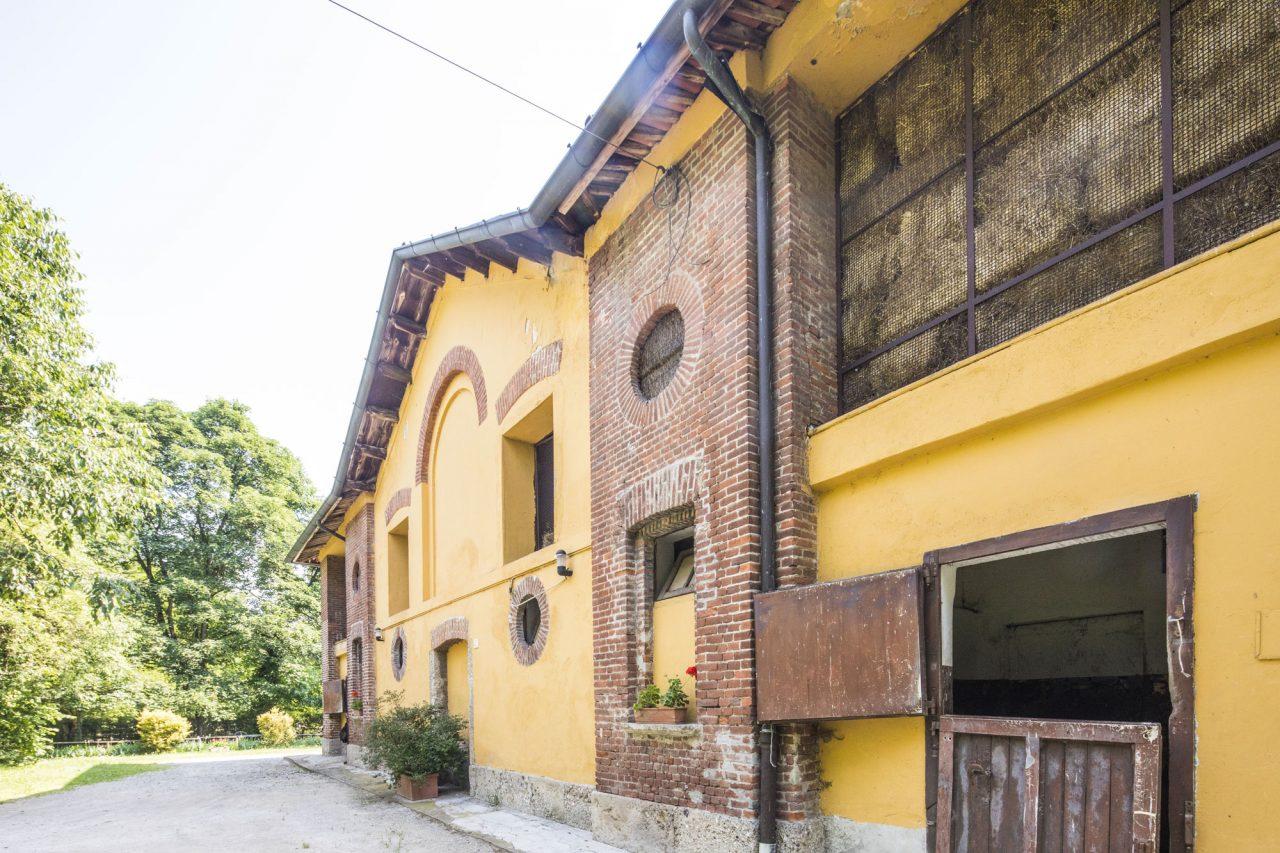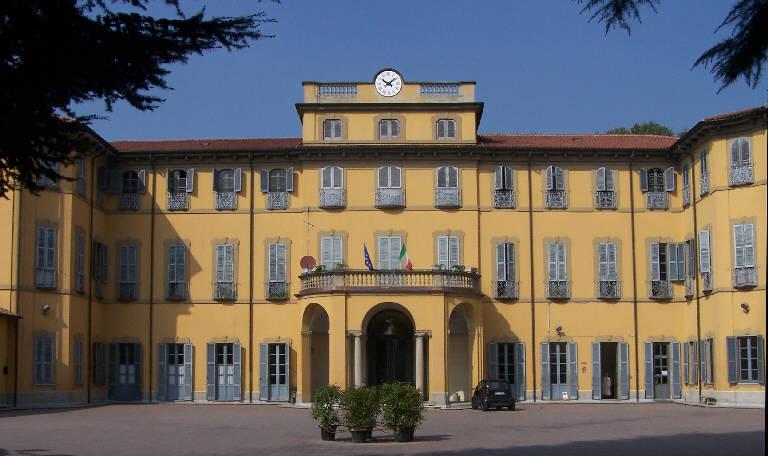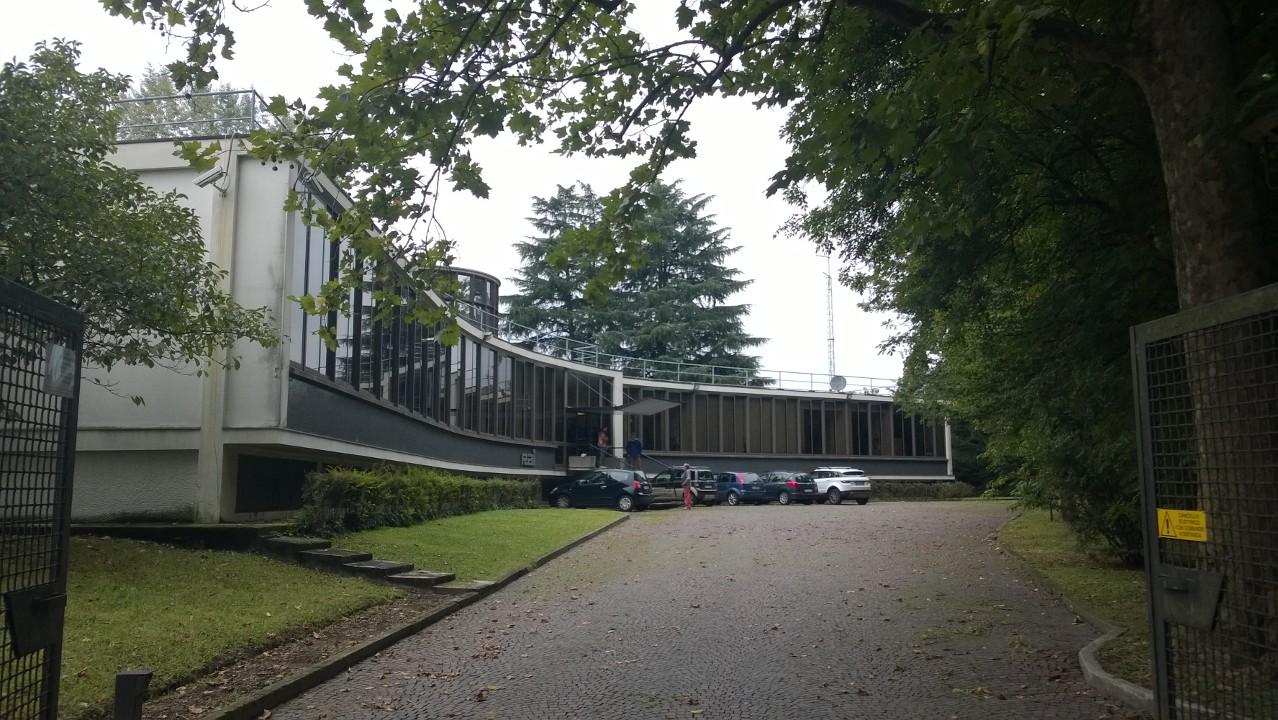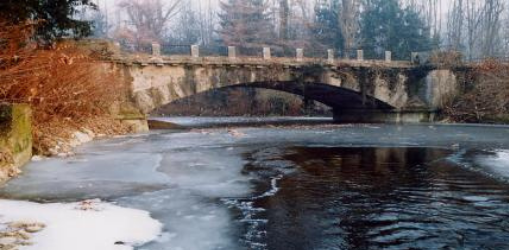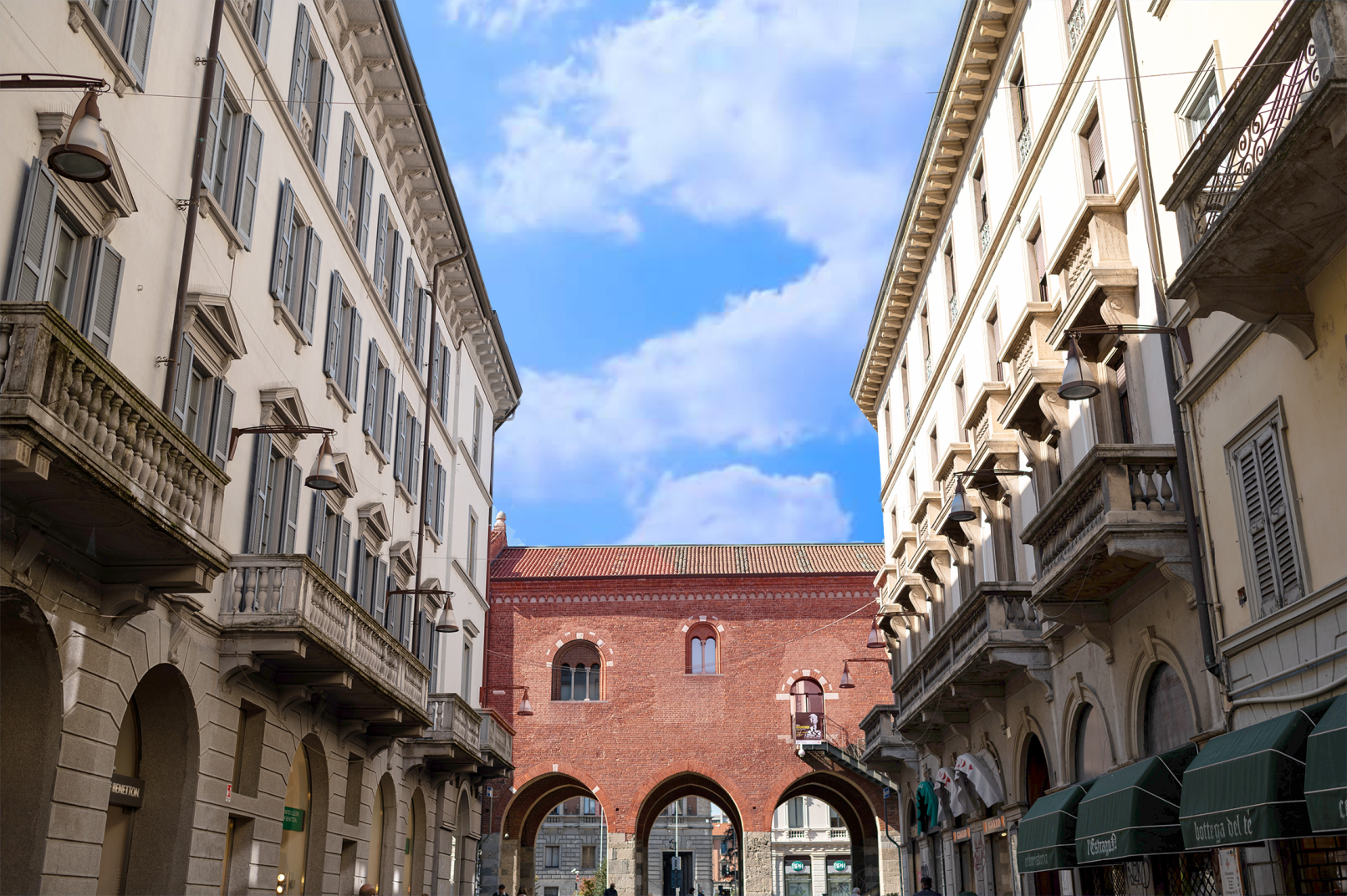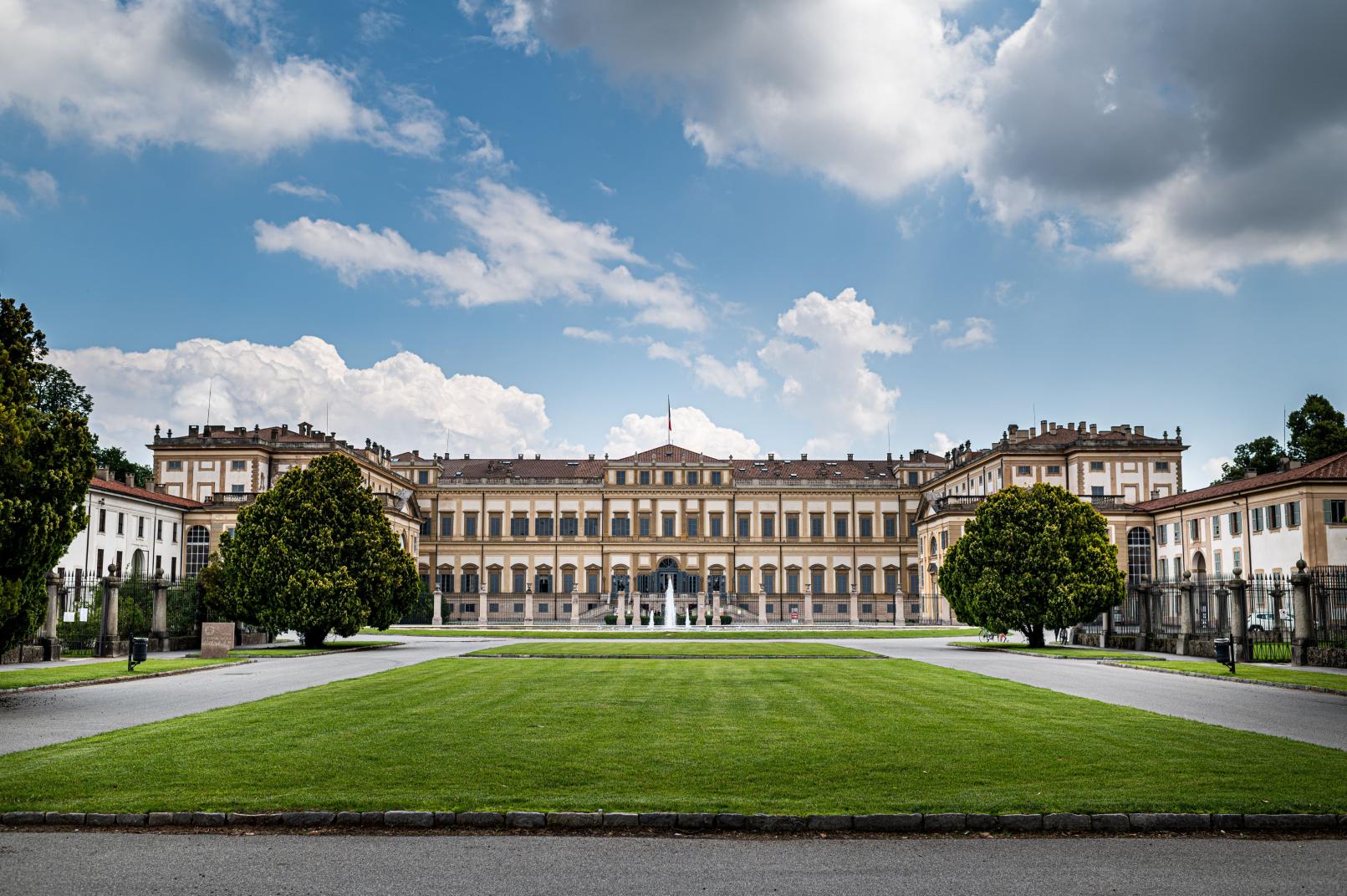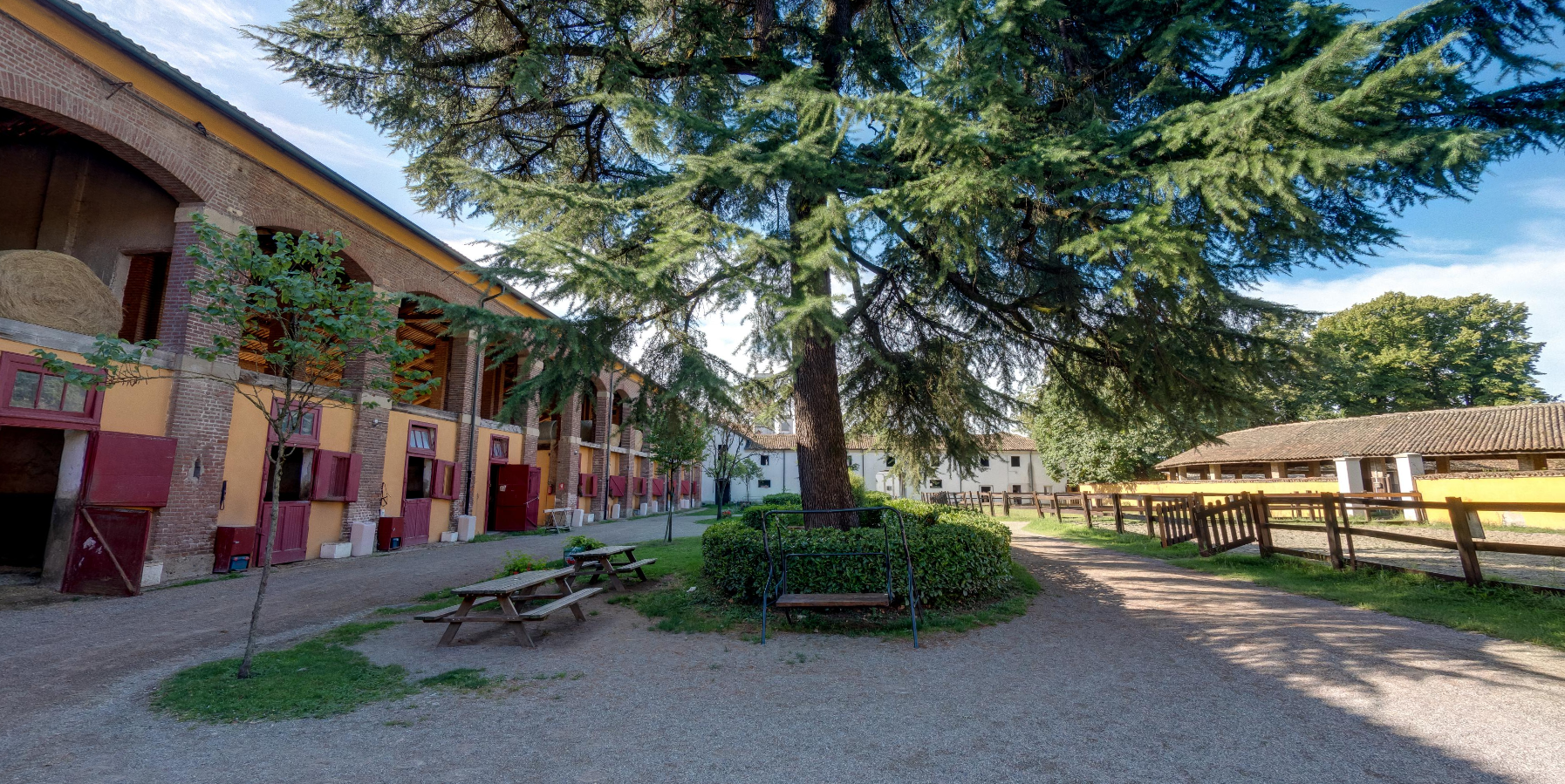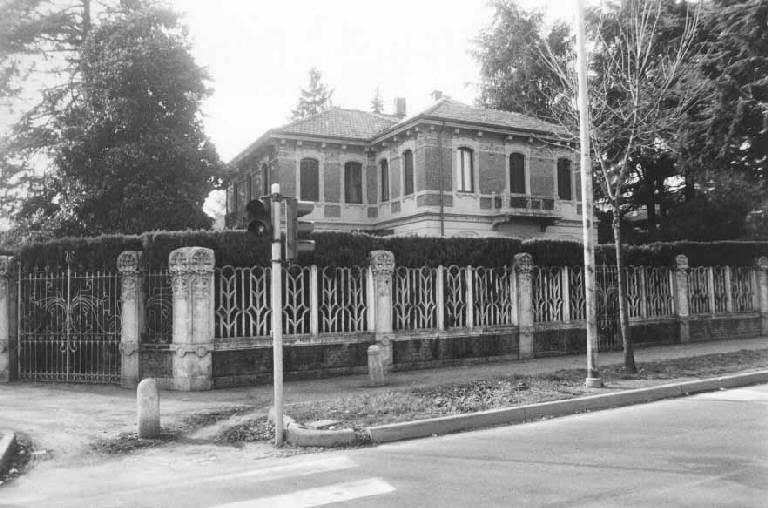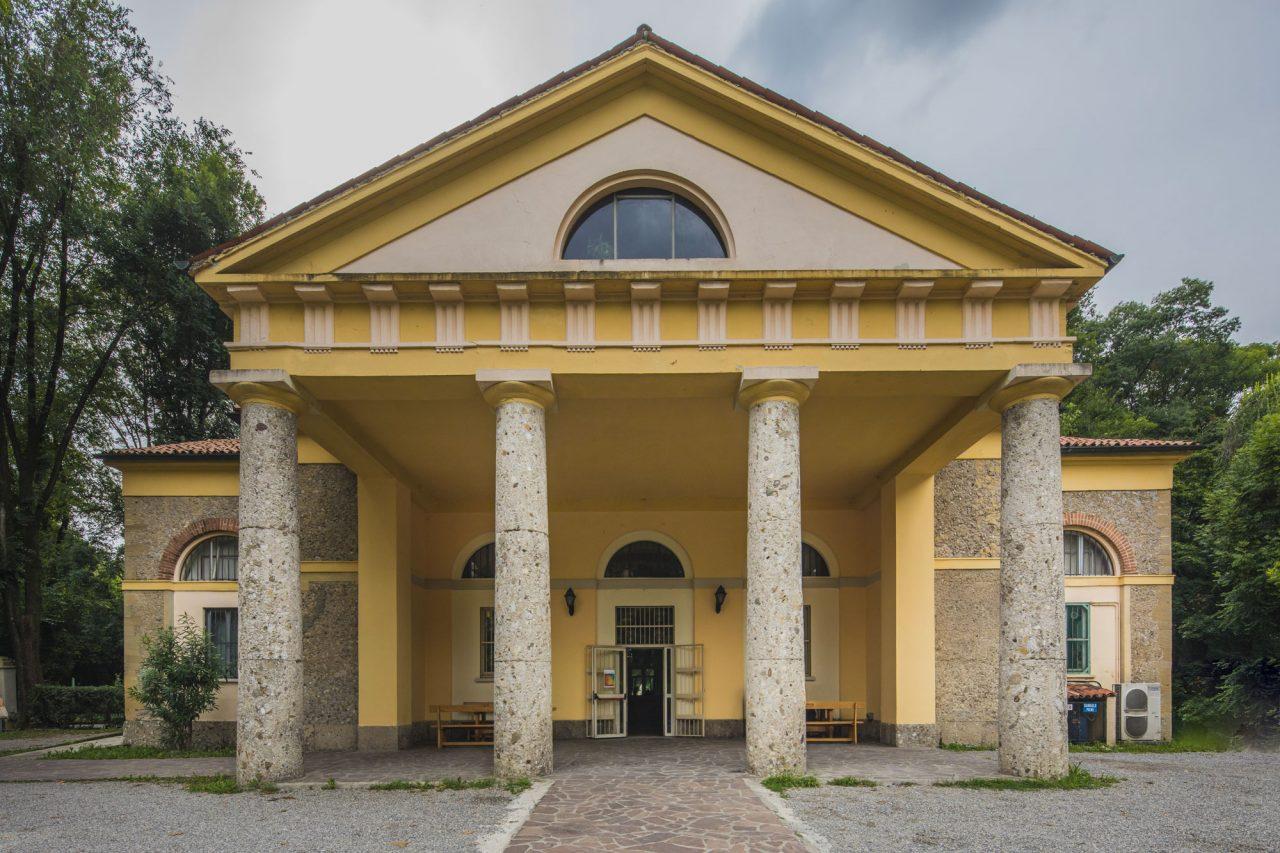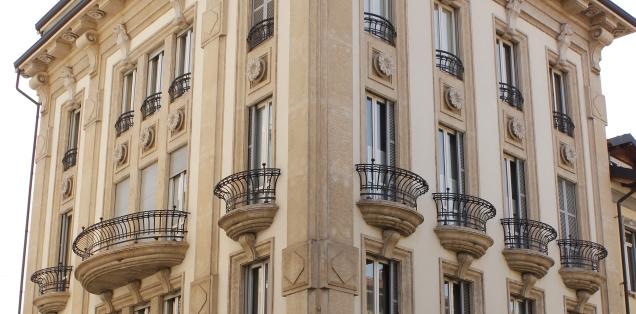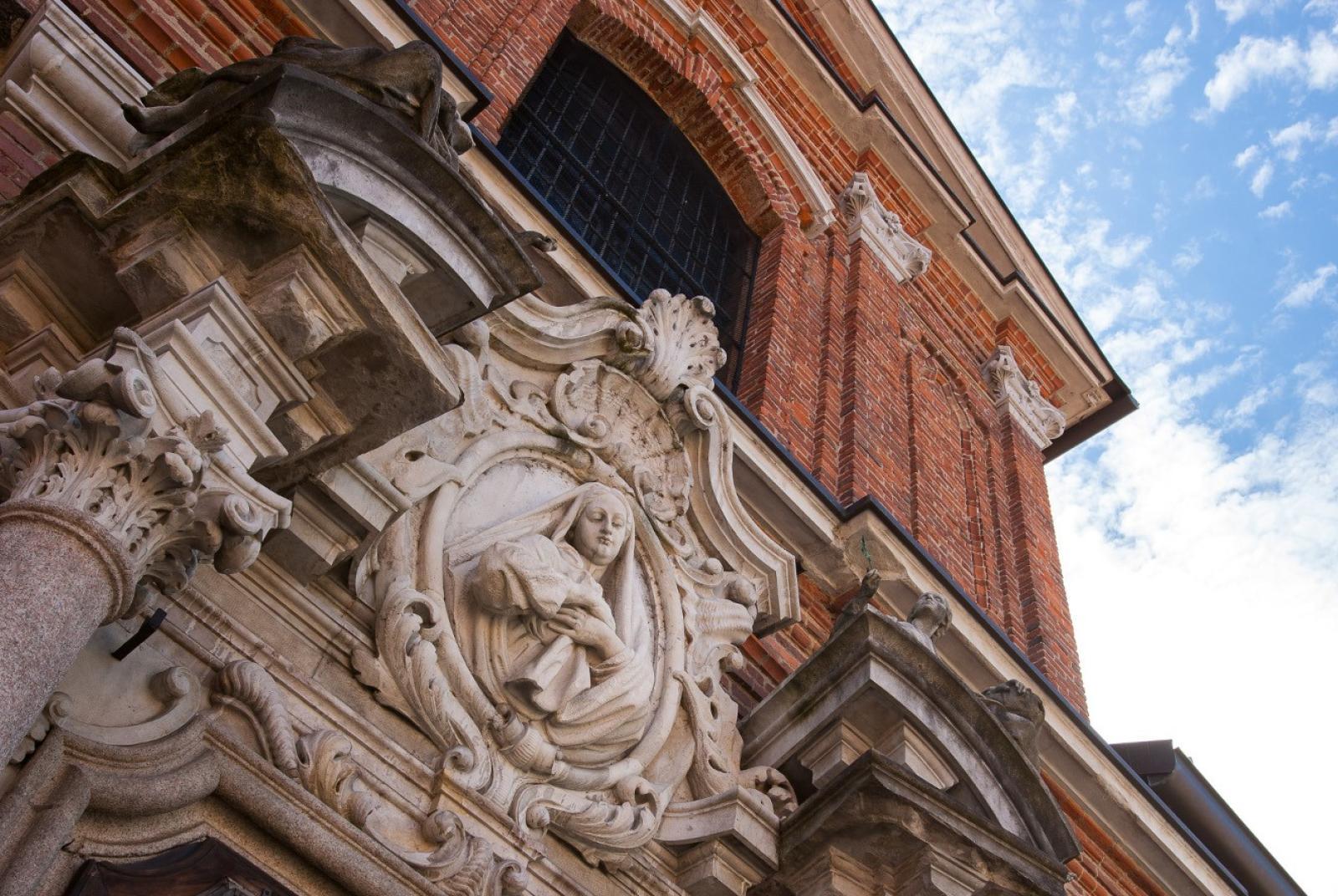The Cathedral of Monza is located in the heart of the city; inside the Chapel of Theodolinda is kept the precious Iron Crown that belonged to the Lombards.
HISTORICAL CENSES
The Cathedral with its square has been the center of Monza's religious and political life: around its original nucleus, probably the "oraculum" of Queen Theodolinda in the 6th century, the ancient suburb was formed. Dedicated to S. John the Baptist, it is the town's most prominent monument. The present building stands on the site where around the year 595 Queen Theodolinda built a basilica. According to a medieval legend, Queen Theodolinda chose this place because it was pointed out to her in a dream by a dove: the union of the words Modo (here) and Etiam (yes), pronounced respectively by the dove and Theodolinda, give rise to the name of the city, Modoetia.
Born as a palatine chapel, the church survived until the year 1300. The need was then felt to renovate the structure: work on the new basilica was begun on May 31, 1300. The basilica was entirely rebuilt in two phases. The completion of the first building campaign is dated 1346, with the consecration of the high altar: the building had a Latin-cross structure, with three naves, a projecting transept, a flat apse, and a three-field facade traversed by two-colored bands of black and white marble. The side chapels and two large symmetrical polygonal chapels in the apse area were built later, after the mid-14th century, under the supervision of the architect and sculptor Matteo da Campione (d. 1396), also the author of the solemn wind-blown facade, inspired by Gothic lines, of the evangelicatory and the baptistery (now lost).
Artists such as Arcimboldo, Legnanino, Borroni and Carloni embellished the basilica in the following centuries. Pellegrino Tibaldi rebuilt the choir, superimposed on a large crypt, while the collaboration with Ercole Turati was responsible for the colossal bell tower erected beginning in 1592. To the left of the high altar rises the Theodolinda Chapel, whose prestigious wall paintings by the Zavattari, an international Gothic masterpiece of the mid-15th century, represent devotion and homage to the queen. The chapel houses the Corona Ferrea, for centuries considered a symbol and legend and the most important and significant work of goldsmithing in the entire history of Christianity. In fact, an ancient tradition has it that the ring inside the Crown was made from one of the nails from the Cross of Christ. With the Iron Crown, kings and emperors were crowned, including Charlemagne and Napoleon.
THE FACADE AND THE PROTIRO
Recently restored to its original appearance, the facade of Monza Cathedral is characterized by the two-tone of its marble, which can be admired today as it appeared until the late nineteenth century. Then, precisely starting in 1890, in fact, began a restoration work led by Luca Beltrami, who reconstructed the aedicules at the top, by then all but one of them fallen, and decided to replace the black marble of Varenna with green serpentine from Oira, to emphasize the Tuscan origin of Matteo da Campione's art. This work greatly altered the colors of the facade of the cathedral, which were restored in 2020 with the maintenance work that also affected the rose window and decorative reliefs.
The chromaticism of the white-and-green banded marble, the rose window, the mullioned and three-light windows, the hanging arches, the aedicules and spires testify to the power and dignity of the Monza church. The facade of the Cathedral of Monza consists of five compartments, separated by four pilasters and closed at the ends by buttresses. The façade is decorated with gulleted edicolets housing at six statues of saints. Mullioned windows, triforiums and oculi framed by lacunars contribute to the embellishment of the facade while at the top is a faux hanging loggia. In the central upper part is the large wheel of the rose window by Matteo da Campione - restored by Luca Beltrami - set in a complex circular frame framed in a line of openwork panels, with masks, flowers and stars; the motifs framing the rose window are repeated in the upper part. The bearded head (14th century) above the mullioned window in the first north field is said to be a portrait of Matteo da Campione. The prothyrum is in the Renaissance style: the two medallions in the archway contain busts of Theodolinda and her groom Agilulfo, from the early 16th century; above is a bronze copy of the statue of Baptist, while the 14th-century original in embossed copper is kept in the museum. Behind the Baptist, a number of objects from the Treasure are spotted: the Chioccia with seven chicks, the Kingdom Cross and the small Sapphire Cup. Discover the originals at Museum and Treasure of Monza Cathedral.
The INTERIOR OF THE DUOMO
The interior is Latin cross-shaped, with three naves. The pillars separating the naves are octagonal in section, with figured capitals representing beasts, eagles, telamons, griffins, sirens, and centaurs; while the semi-capitals of the transverse archway represent Christ and the Evangelists. The walls are decorated with portraits of Lombard kings and emperors believed to have been crowned with the Iron Crown. Noteworthy on the back wall of the right transept is the Tree of Life, frescoes by Giuseppe Arcimboldi and Giuseppe Lomazzo known as il Meda, from 1556.
The major altar, created between 1793 and 1798 by Andrea Appiani is made of marble and gilded bronze with amethyst and lapis lazuli inserts. The mensa antependium, in the center of the chancel, is a masterpiece of Lombard Gothic goldsmithing: the decoration tells the Life of St. John the Baptist and in the center is depicted the Baptism of Christ. Also on the chancel walls are reported the Stories of St. John the Baptist.
To the left of the chancel is the Theodolinda Chapel, frescoed by the Zavattari in the first half of the 15th century with stories of Queen Theodolinda, an undisputed masterpiece of international Gothic. On the entrance arch is depicted St. John the Baptist blessing Theodolinda, Autari, Agilulfo and Adaloaldo. Near the queen is depicted a dove with the inscription "Modo," while Teodolinda replies "Etiam": the two words that, according to a medieval legend, give rise to the ancient name of Monza, "Modoetia." Queen Teodolinda's remains rest in a sarcophagus behind the altar. The Wrought Iron Crown is kept in the tabernacle of the altar of Teodolinda's chapel, built in the restoration conducted by Luca Beltrami (1892-95): it is among the best-known artifacts of the Lombard age.
BELL TOWER AND BELL TOWER
The bell tower of Monza Cathedral is an addition dating from the 16th-17th centuries, while the restoration of the facade was the work of Luca Beltrami (1892-1908): slightly asymmetrical, with the upper 'windward' part, it is covered with bands of white and green Ossola marble. The belfry is 78 meters high and was built to a design by Ercole Turati between 1592 and 1620: carved in the medallions decorating the belfry are the Lamb on the Book of Seven Seals, the Chioccia with seven chicks, Mithras and pastoral, Iron Crown and Cross of the Kingdom.
PIAZZA DUOMO
It is the geographic center of the city, has an irregular plan, with one side consisting almost entirely of the facade of the Cathedral. Its present structure dates from the XV century and is the result of the demolition of medieval houses that occupied the area up to a few meters from the churchyard. Near the center of the square is the Crocetta, built in 1578 to mark the location of an altar for collective evening prayer during the "plague of St. Charles" (1576-77). Opposite the cathedral stands the Palazzo degli Arcipreti from the 14th century. Access to the Canonica is marked by a neo-Gothic arch to the right of the facade. The square is part of the pedestrian island and is a venue for art events and demonstrations.

